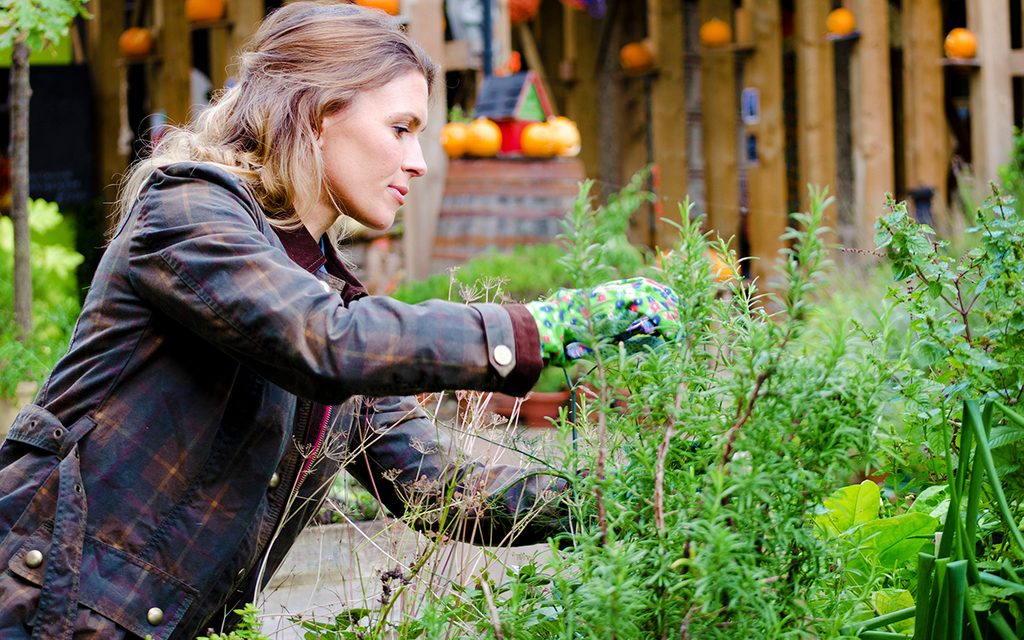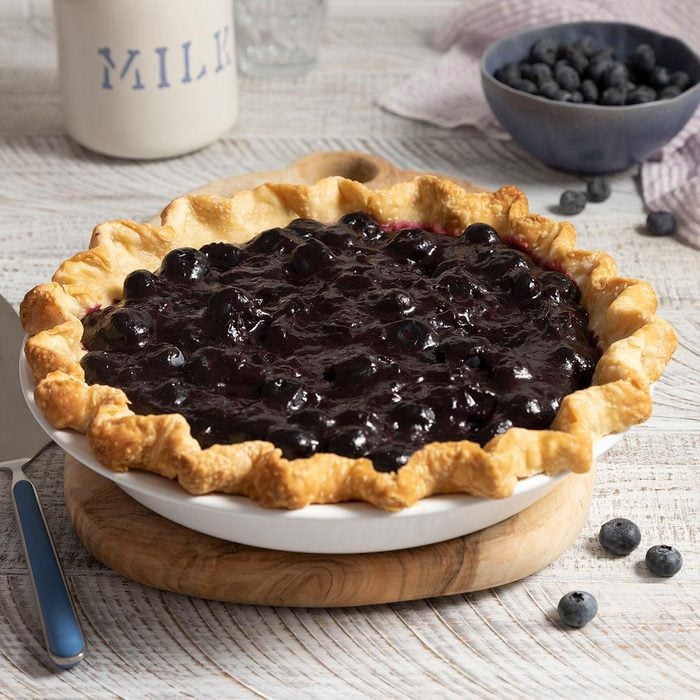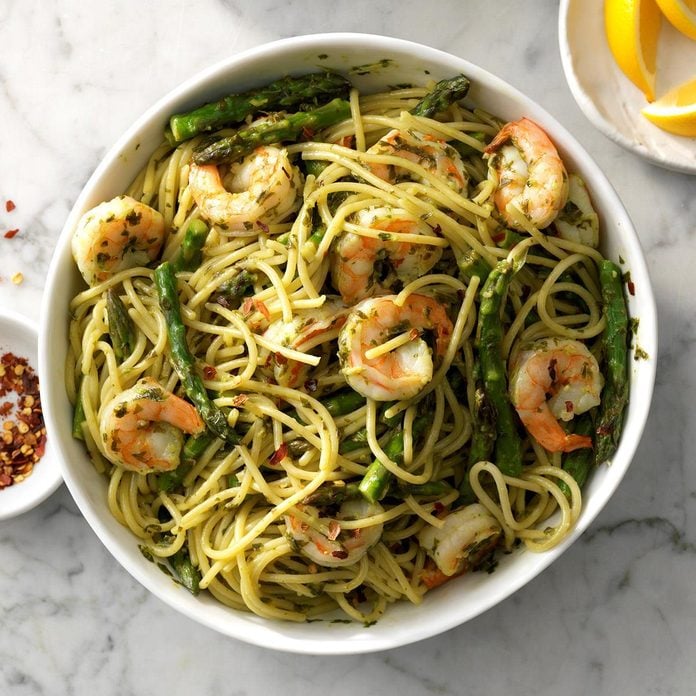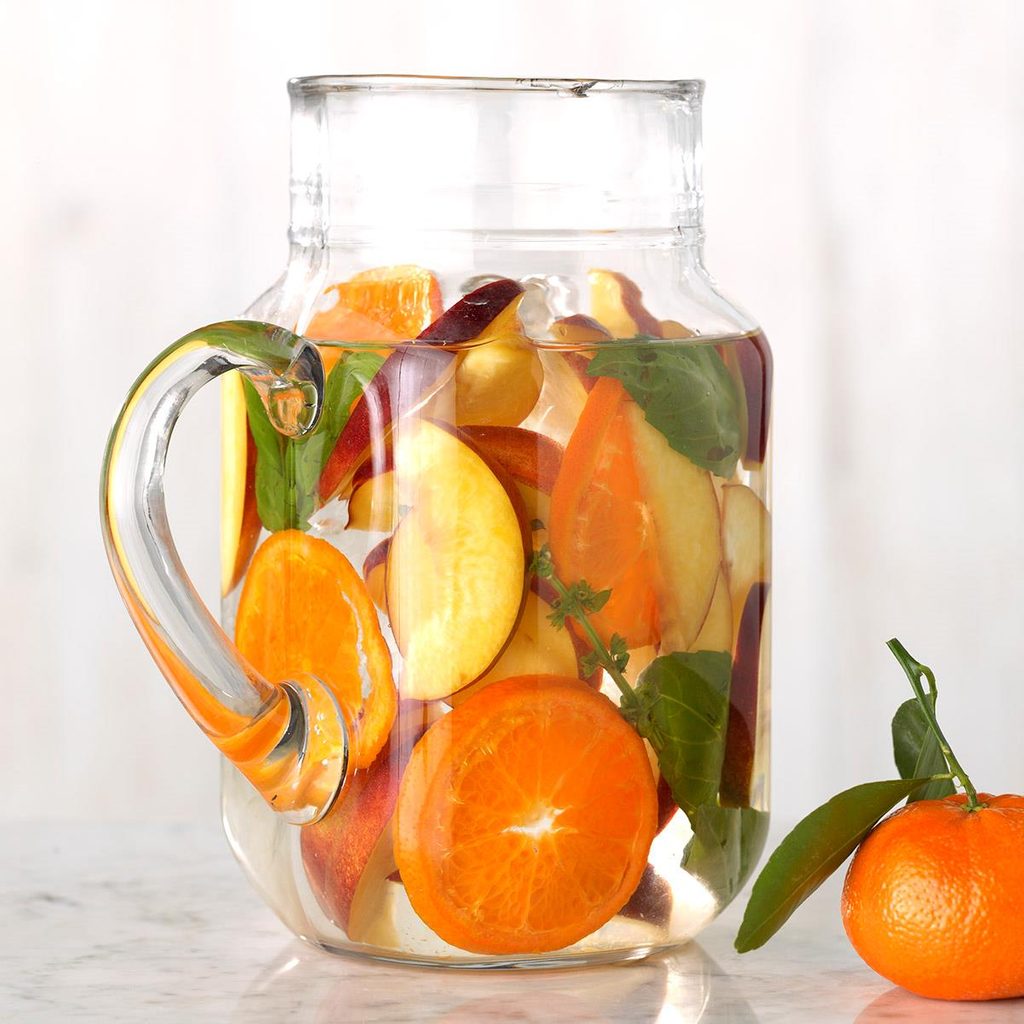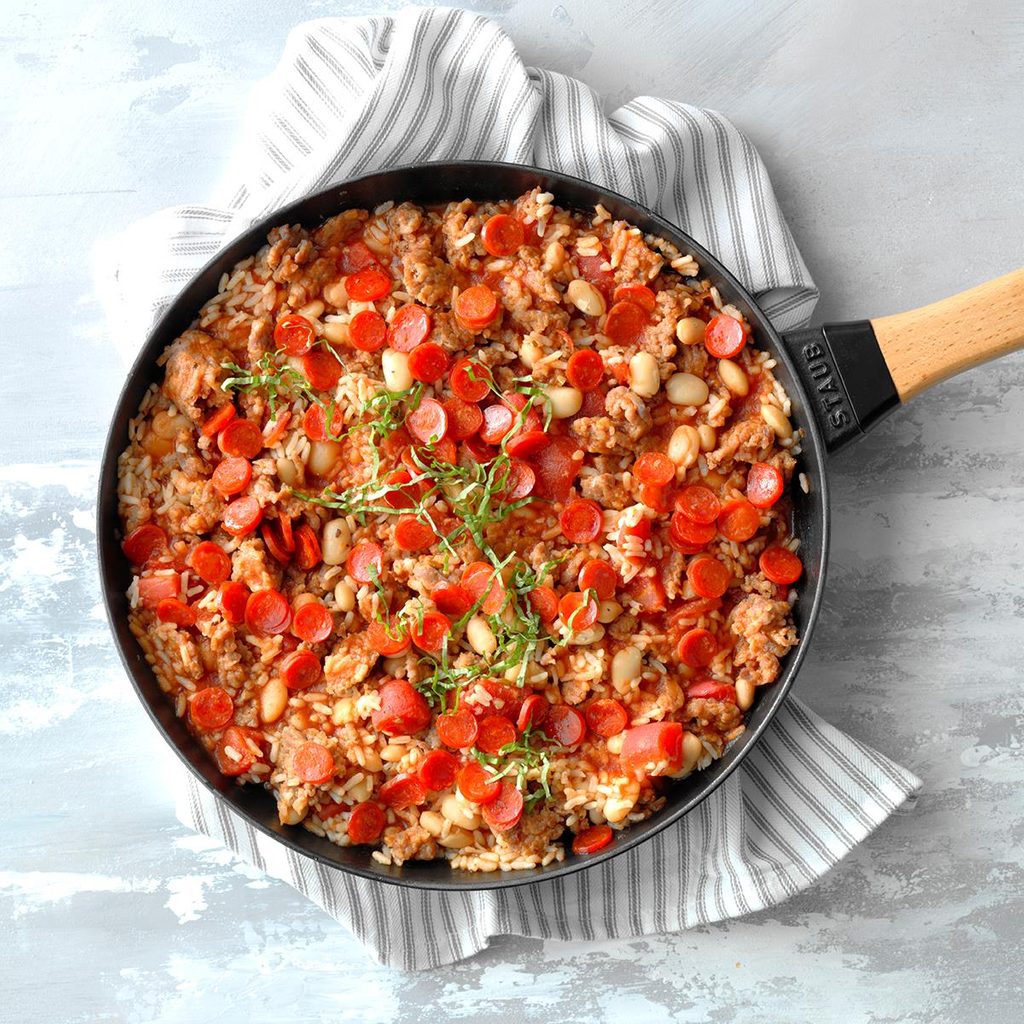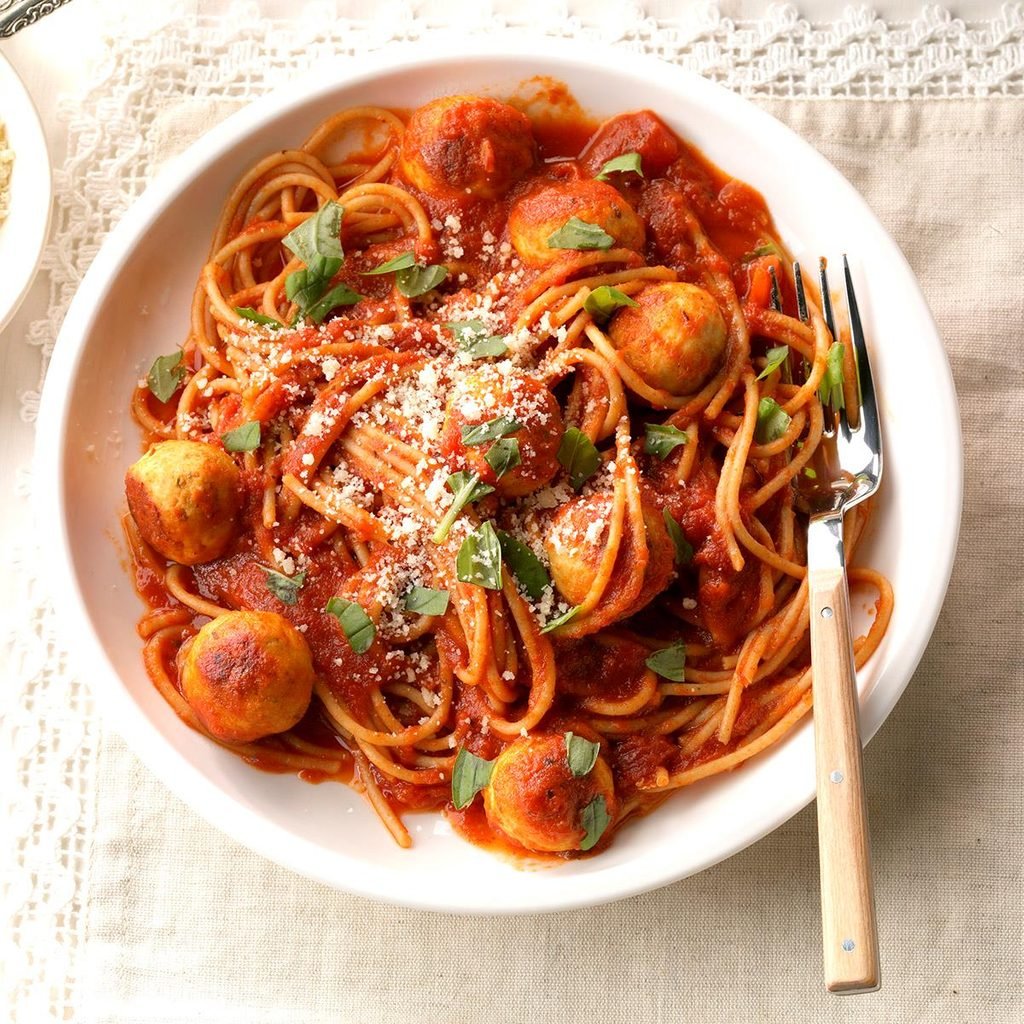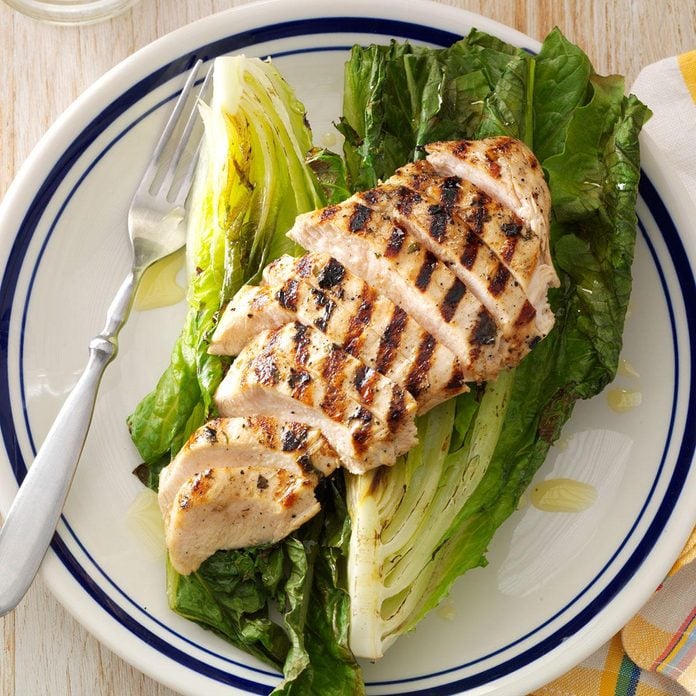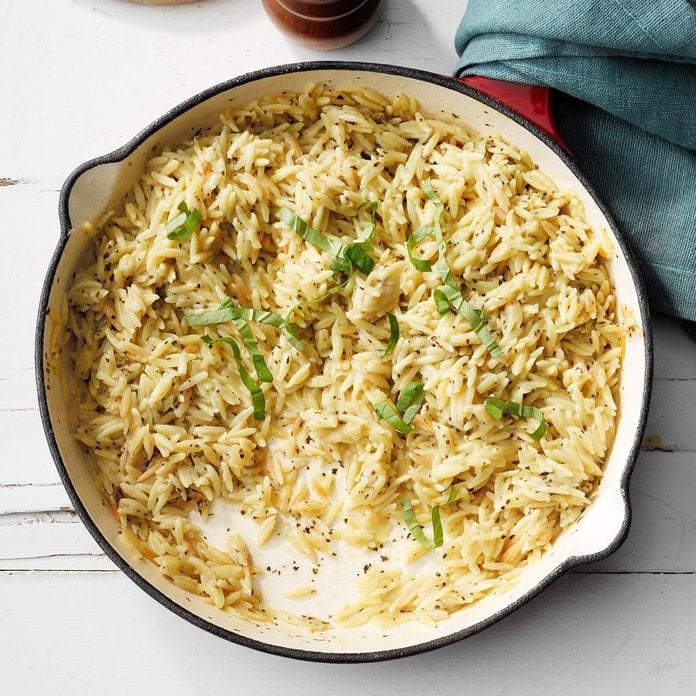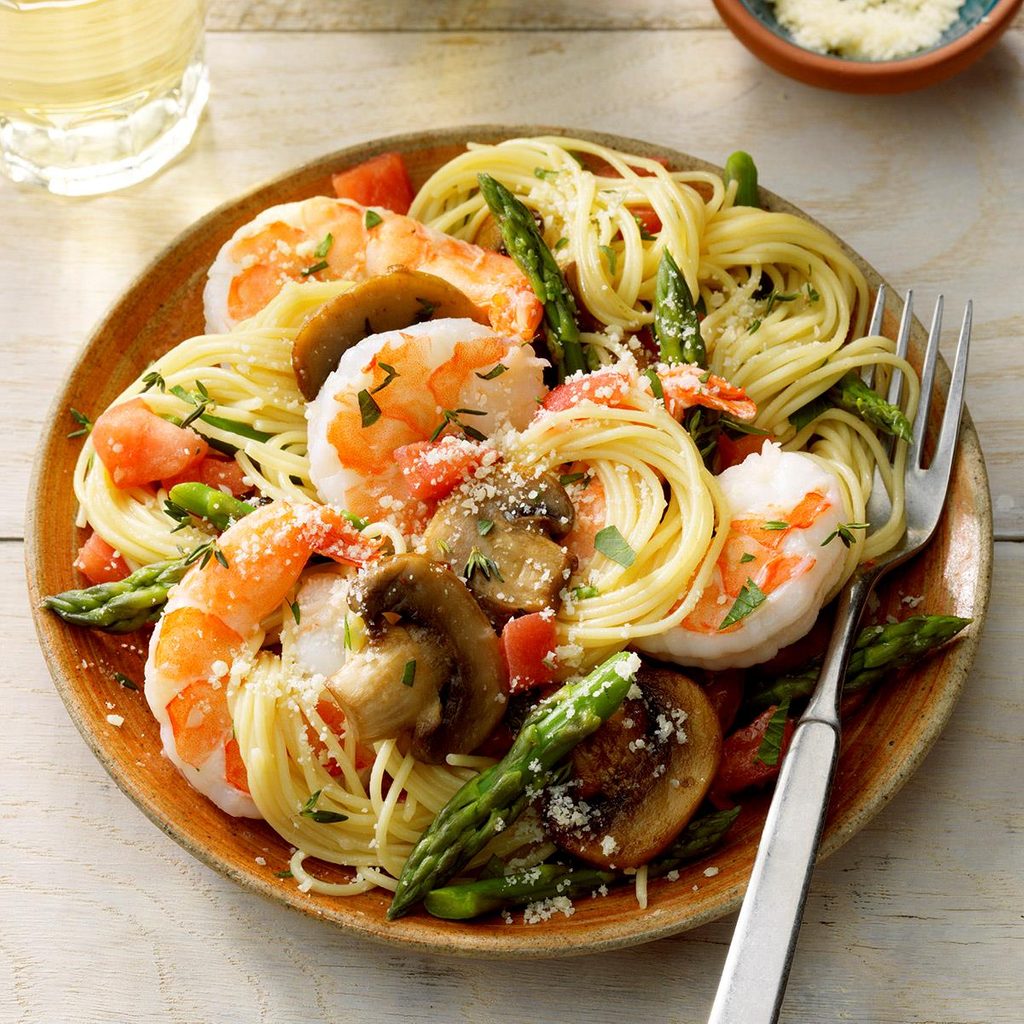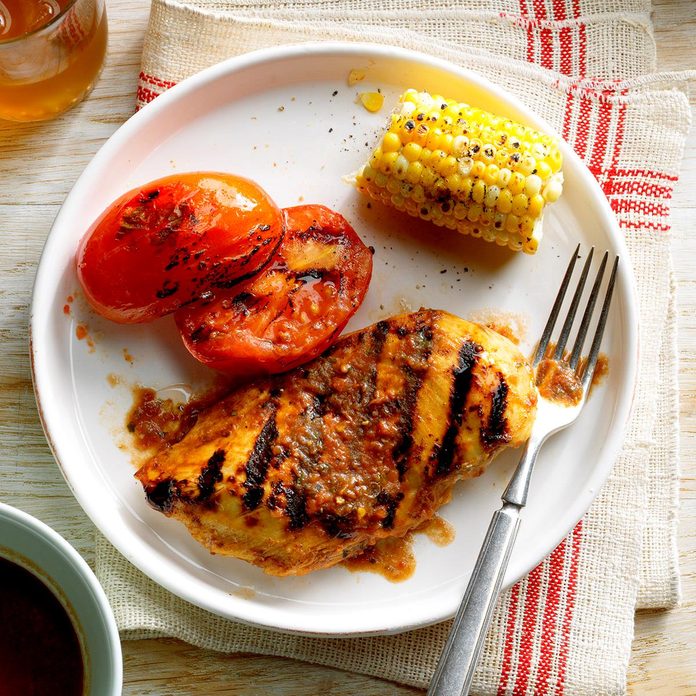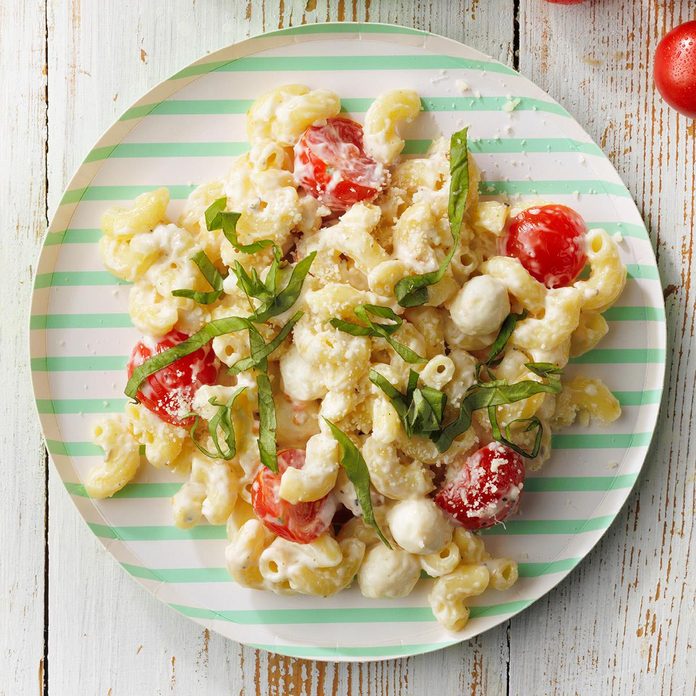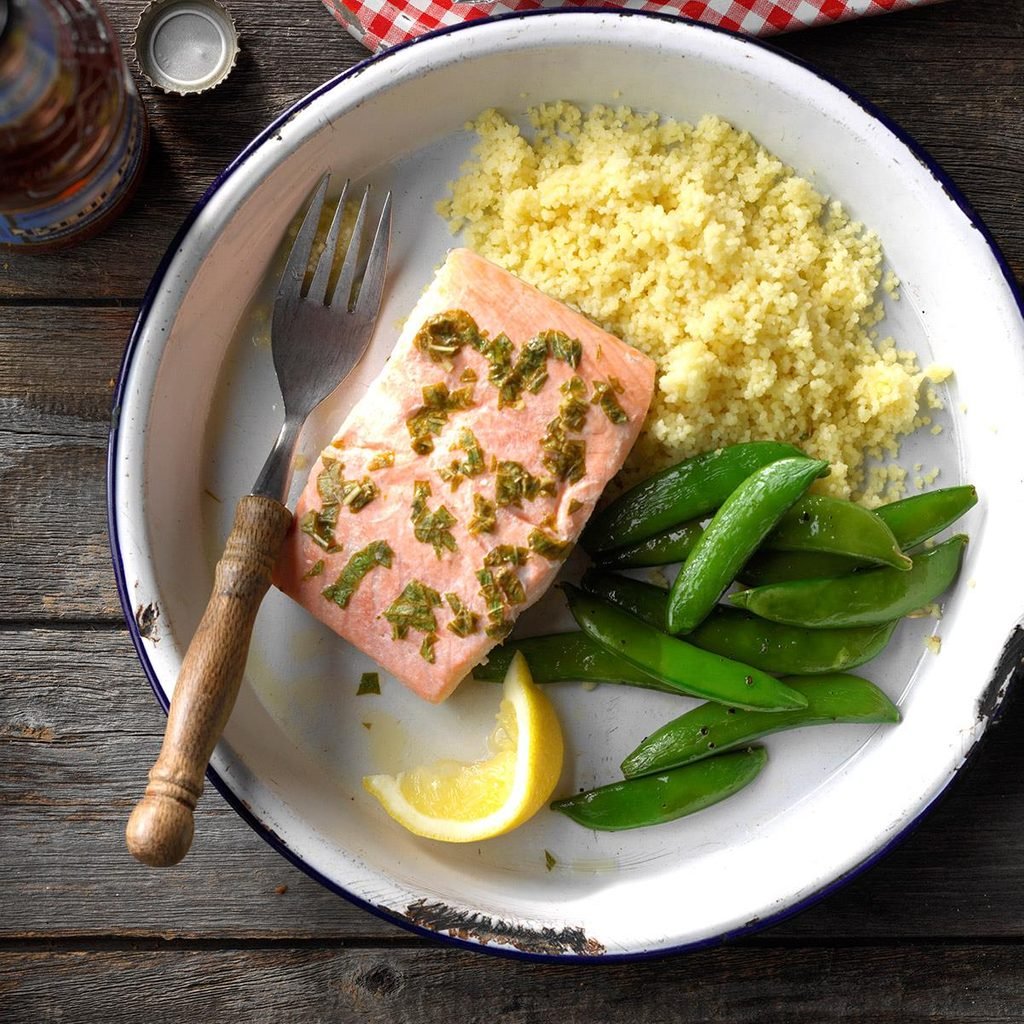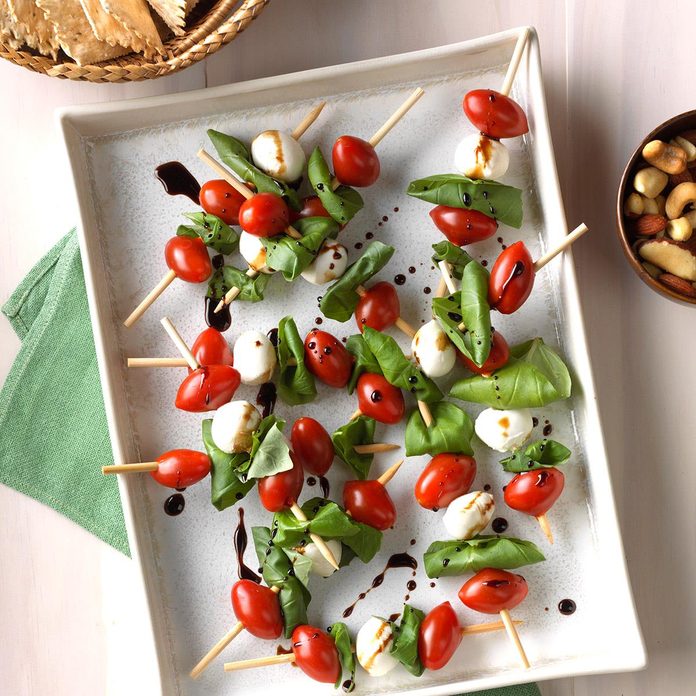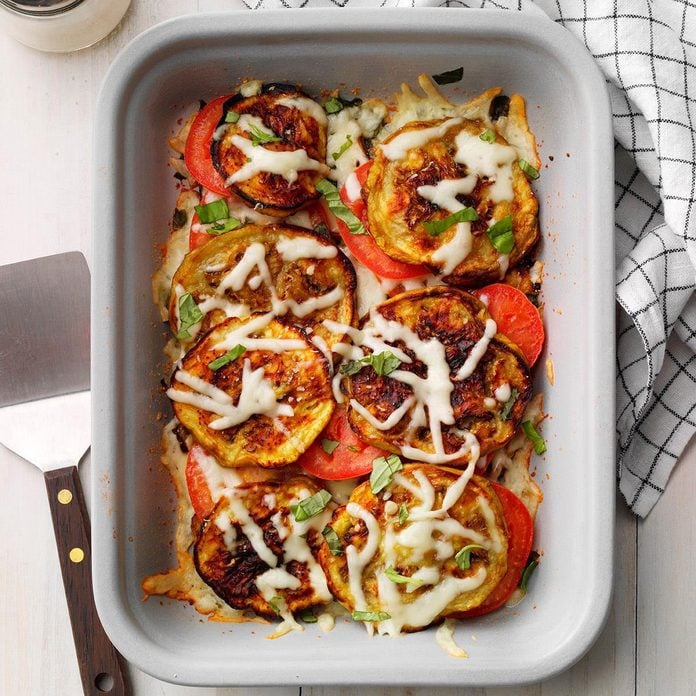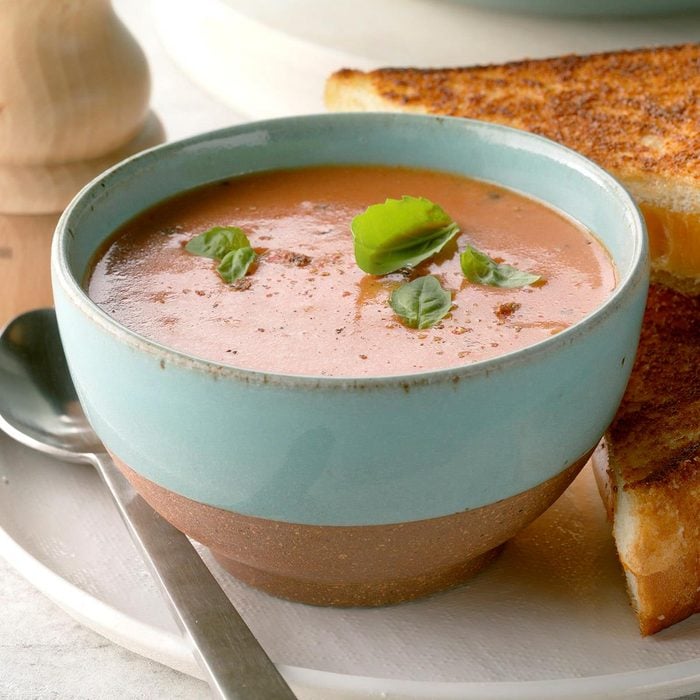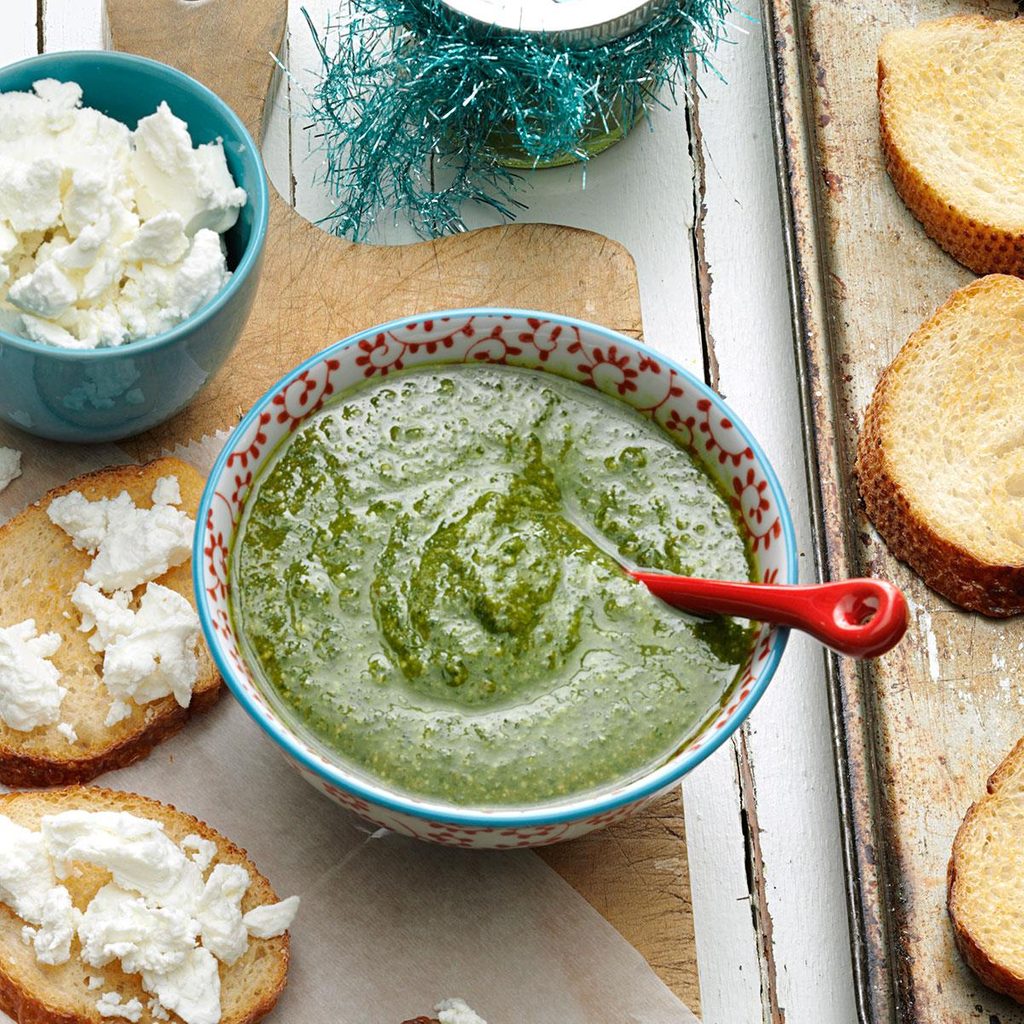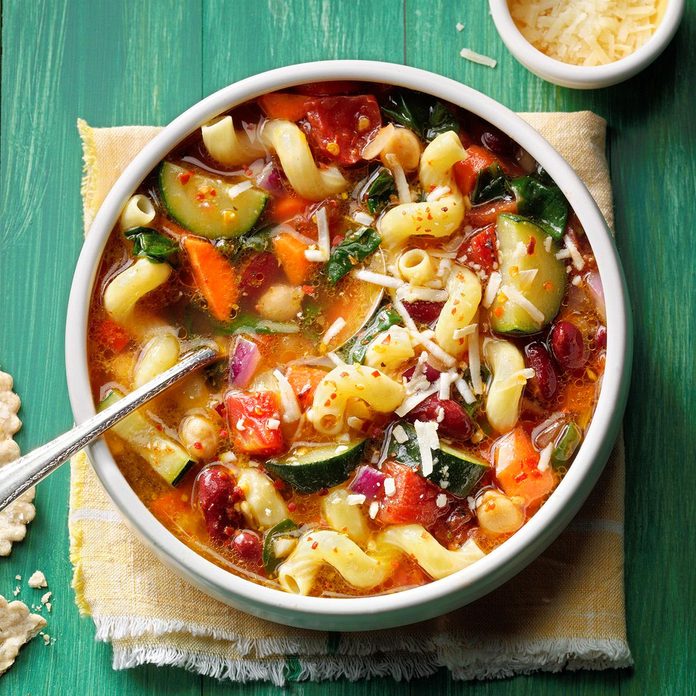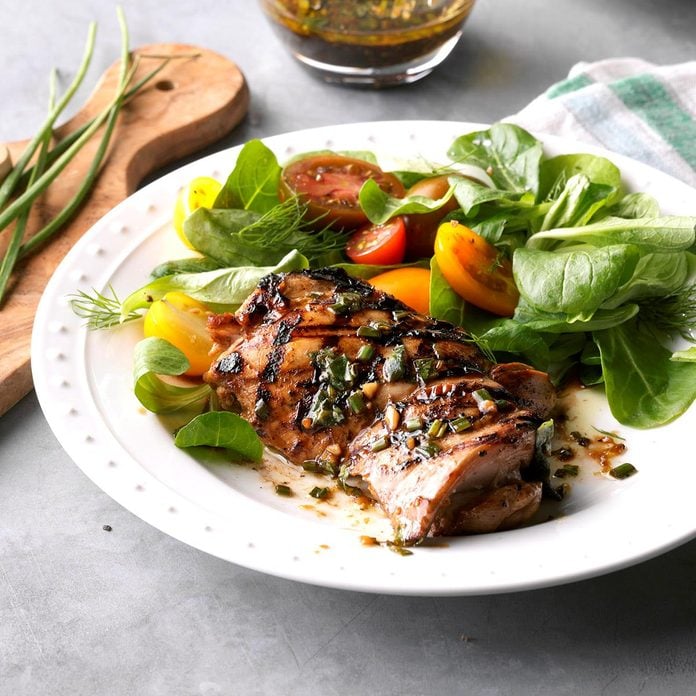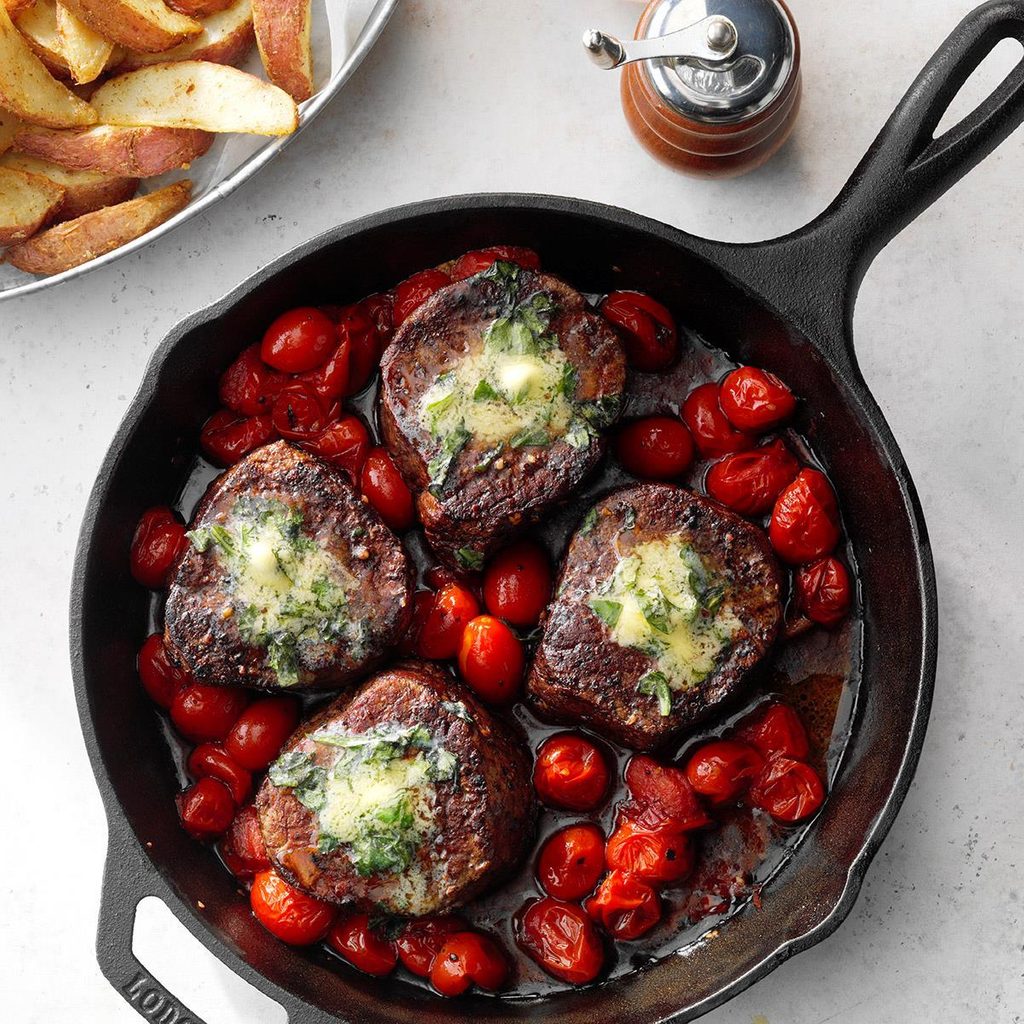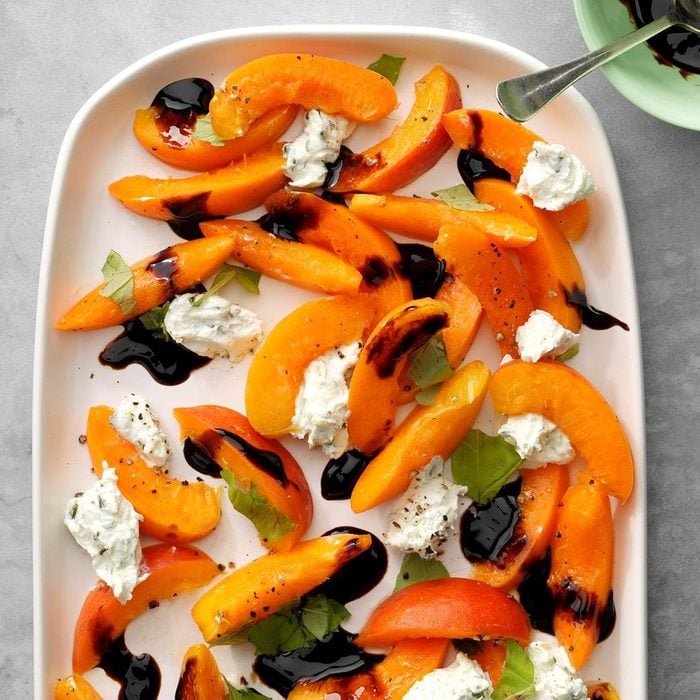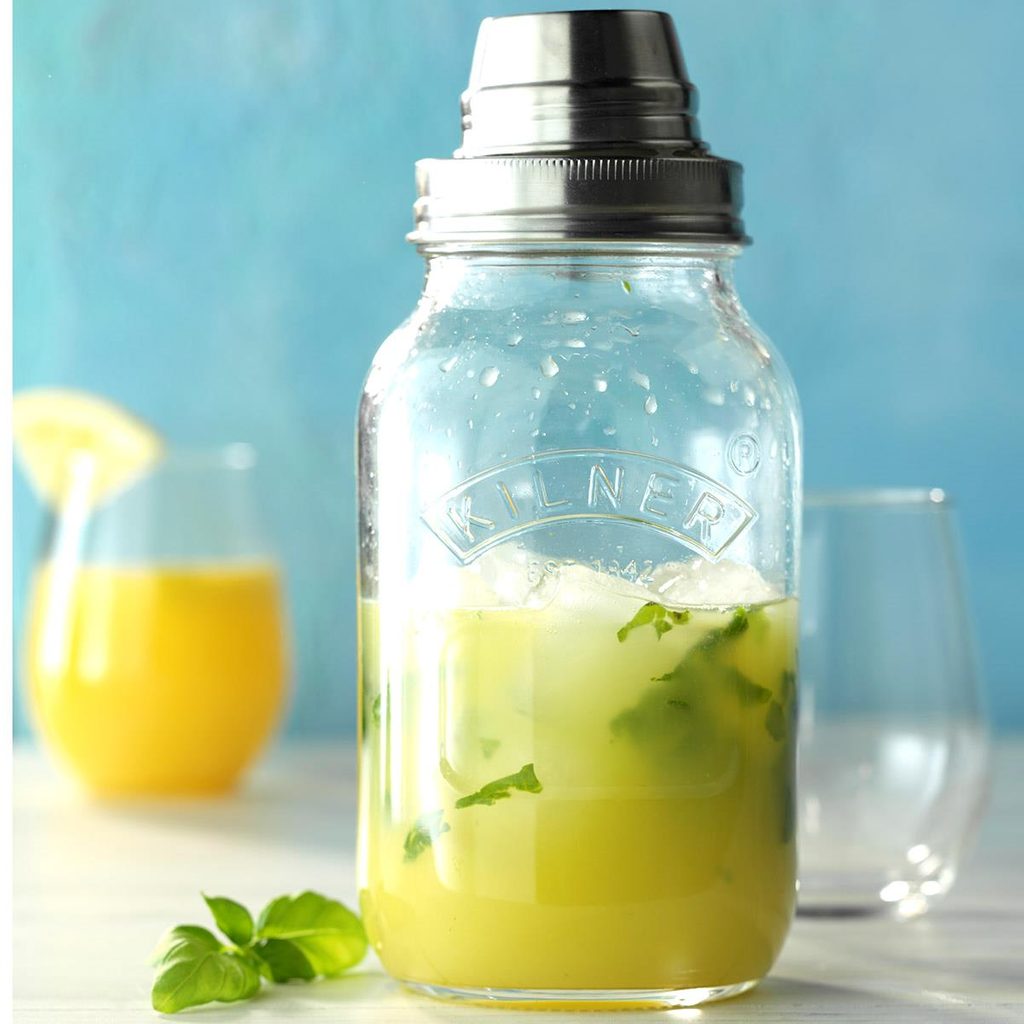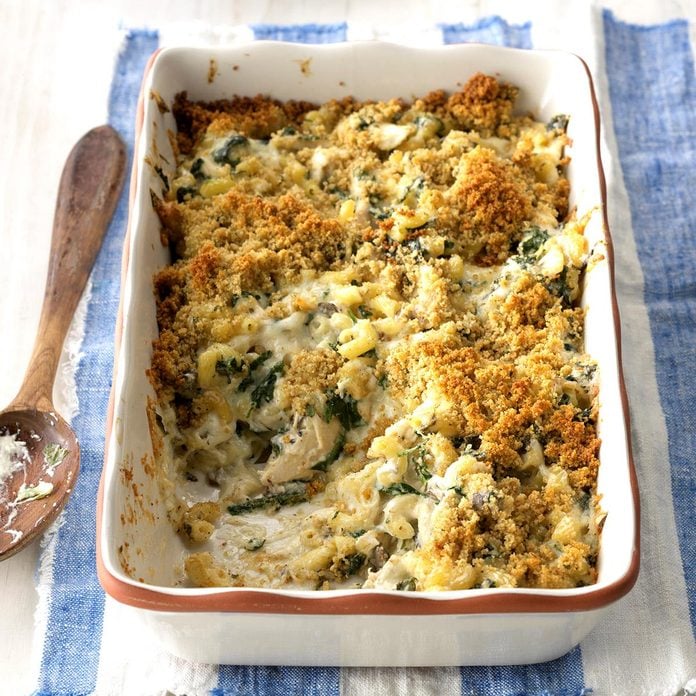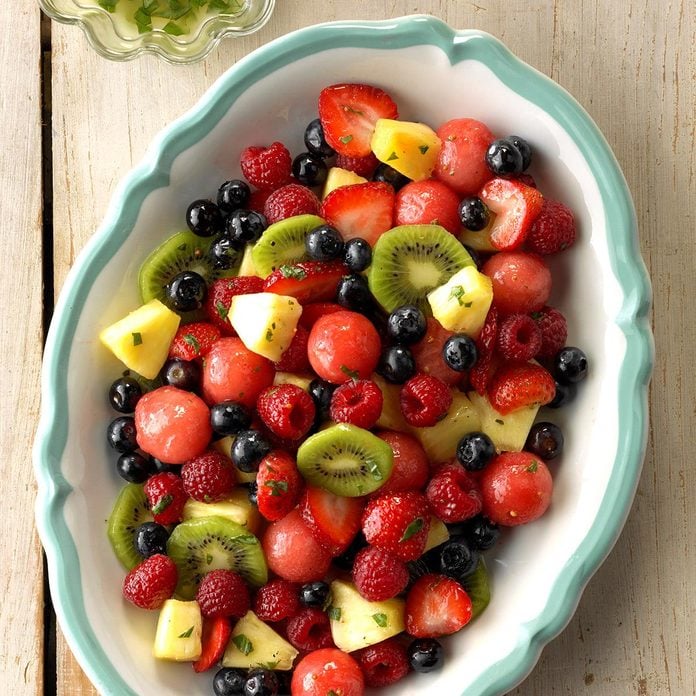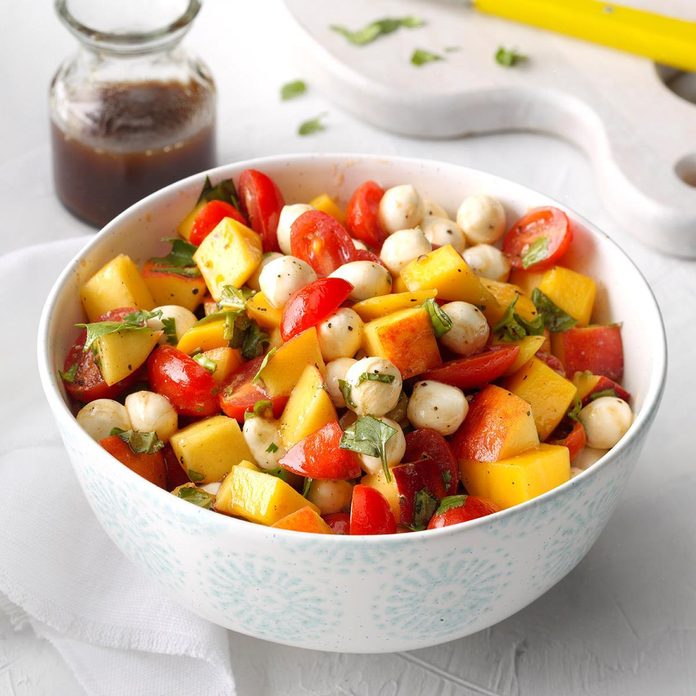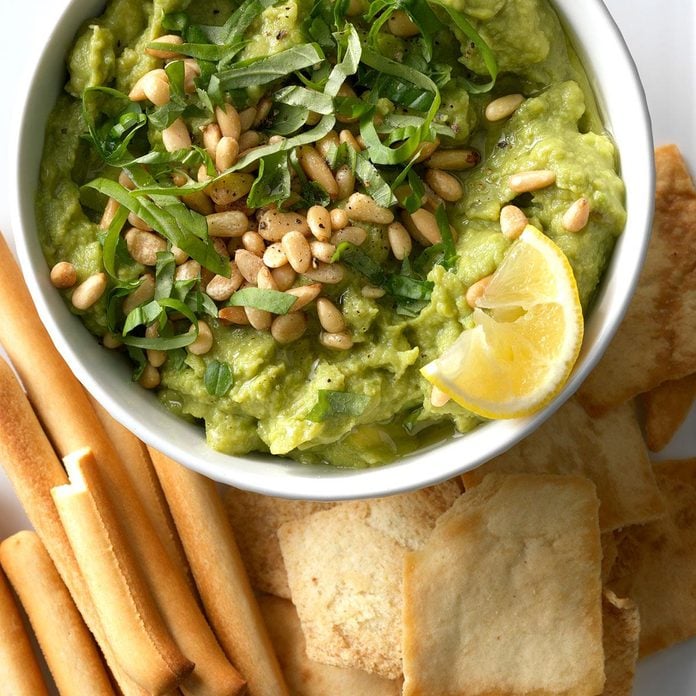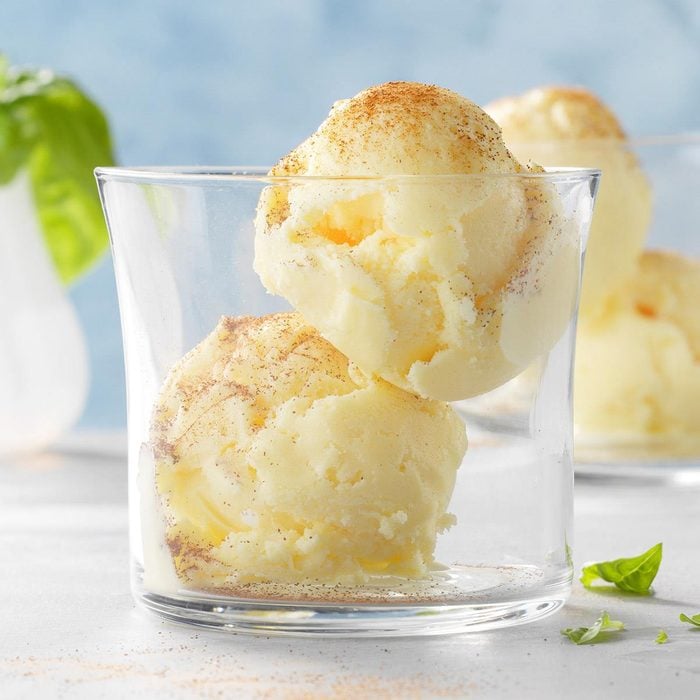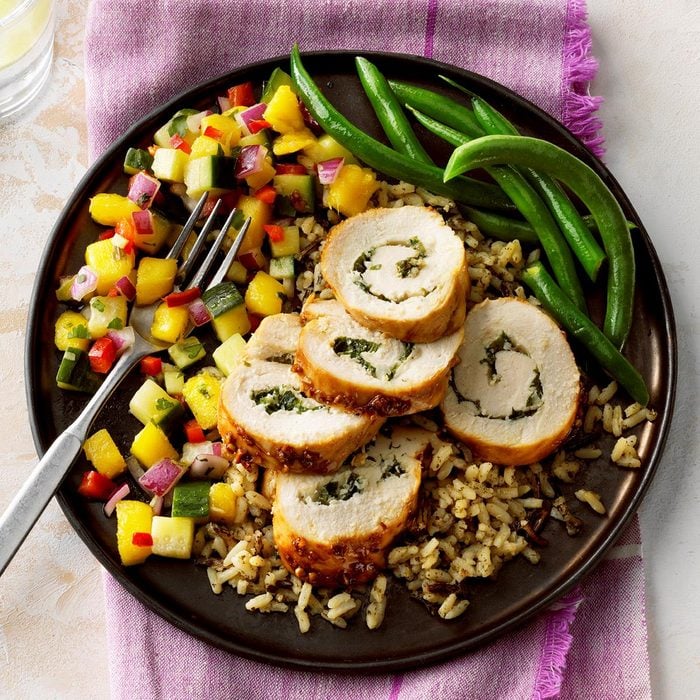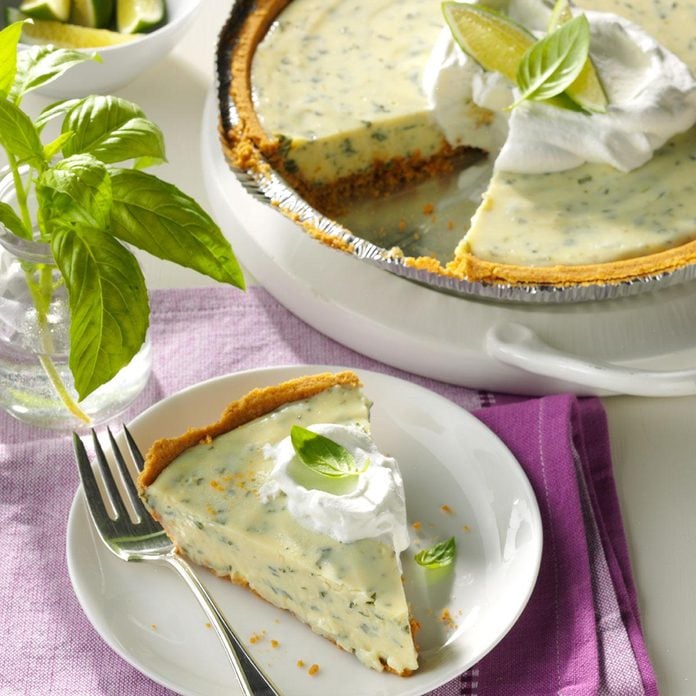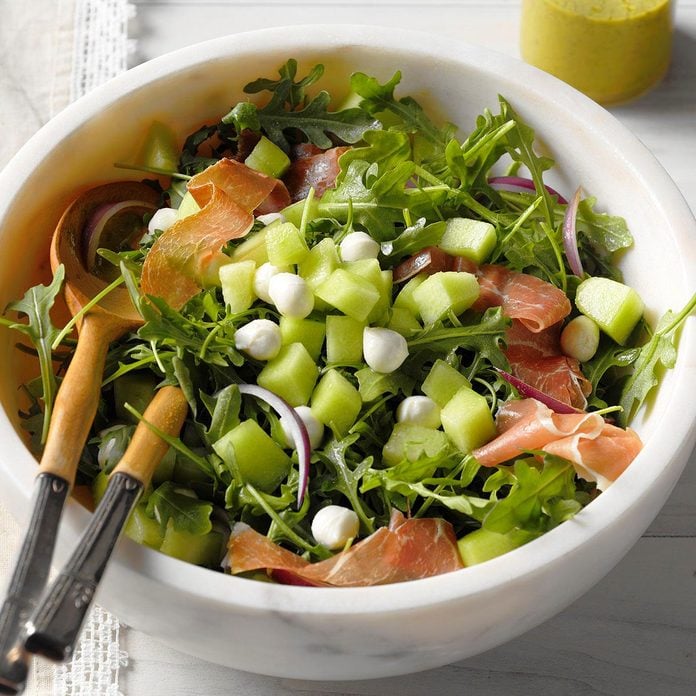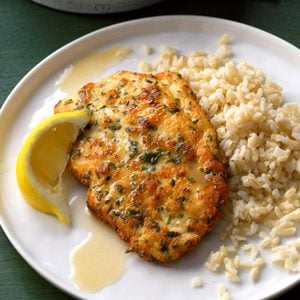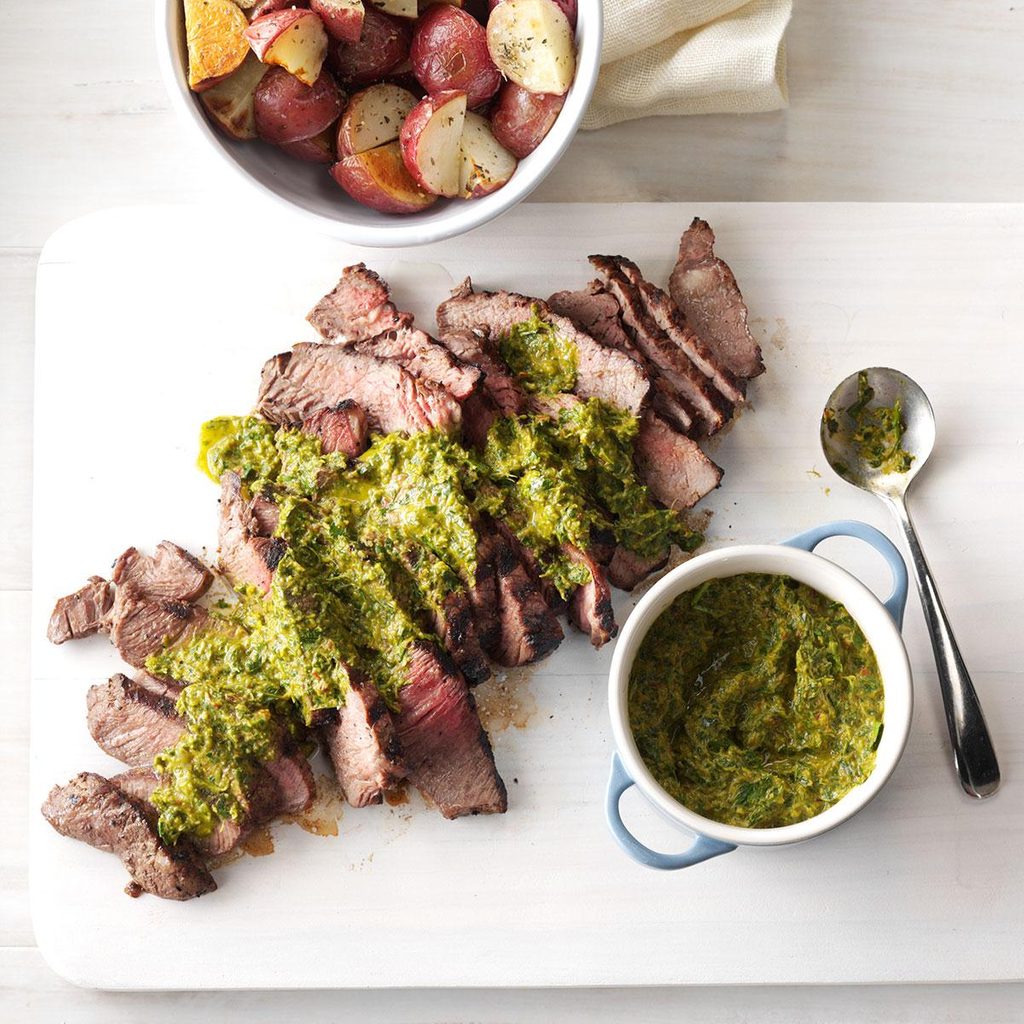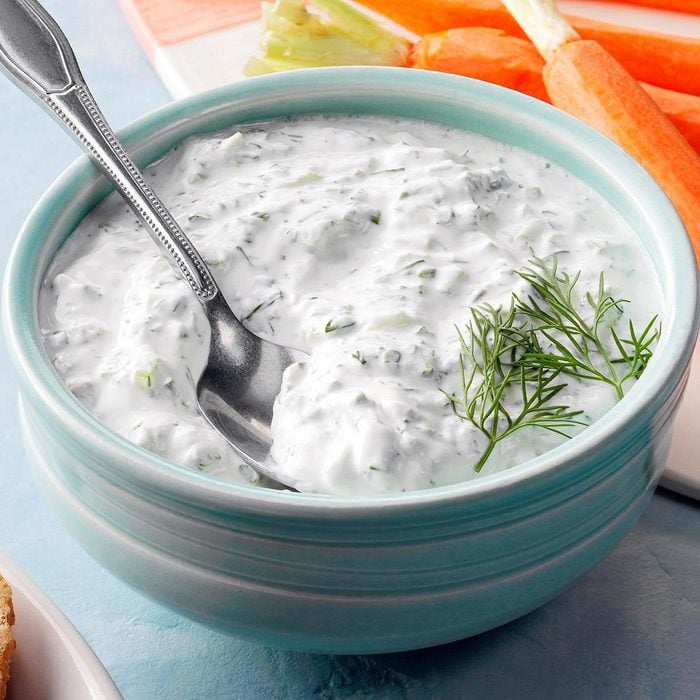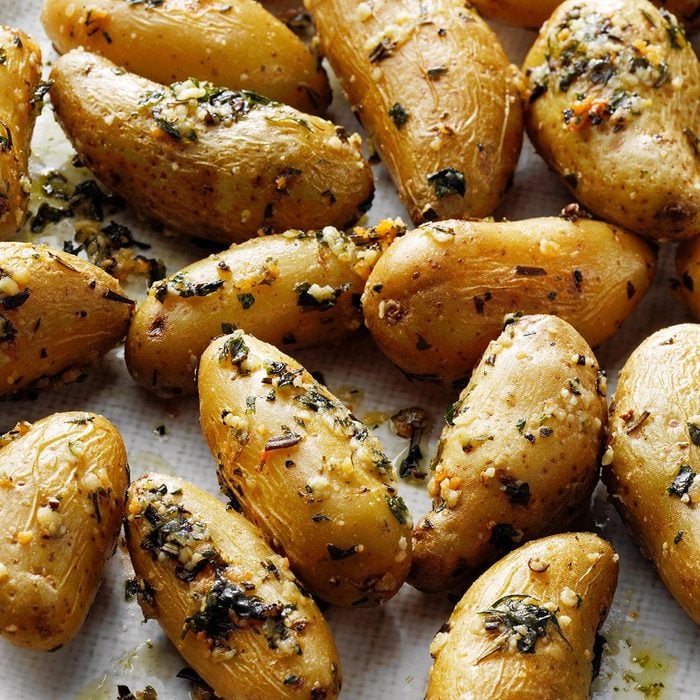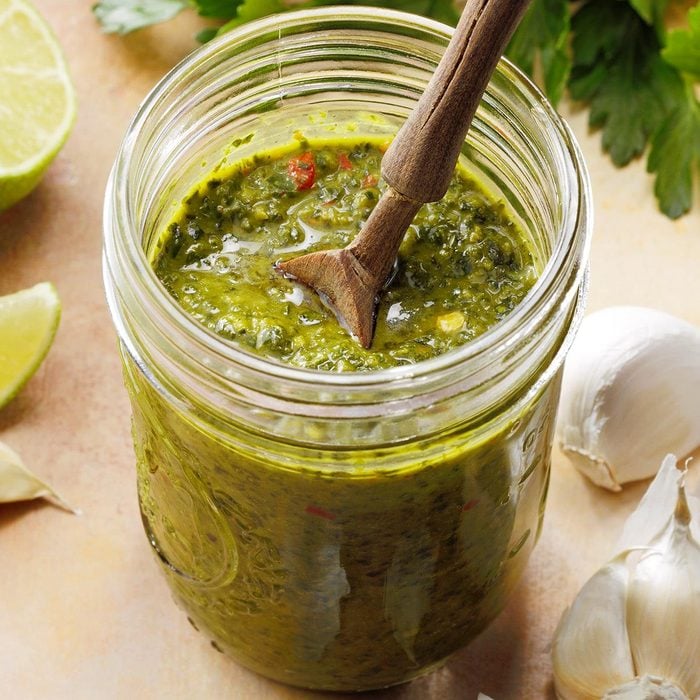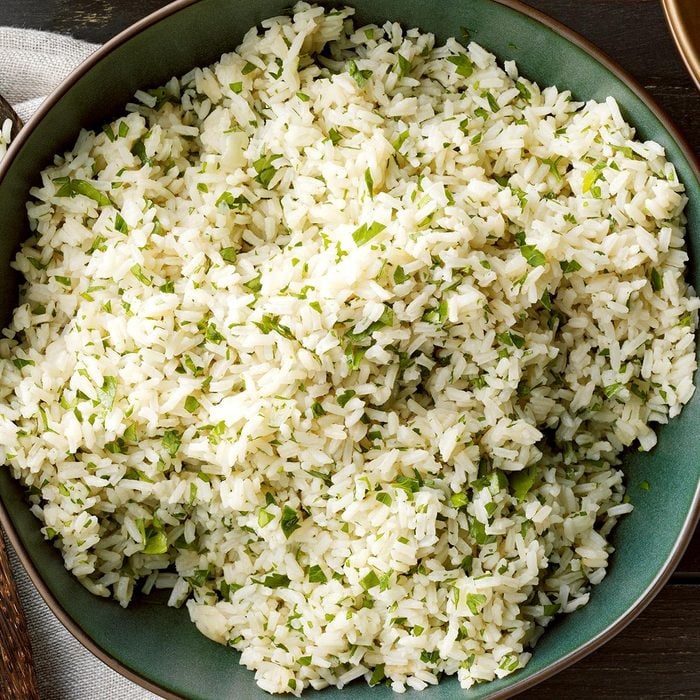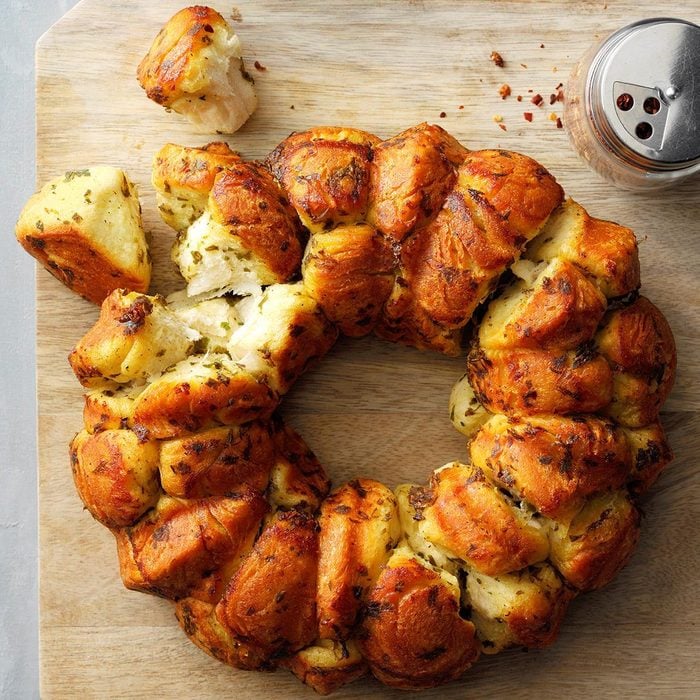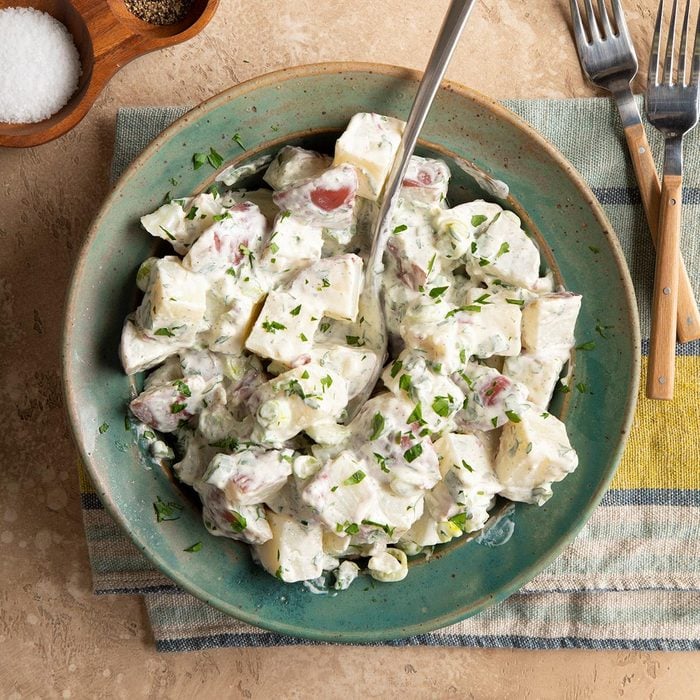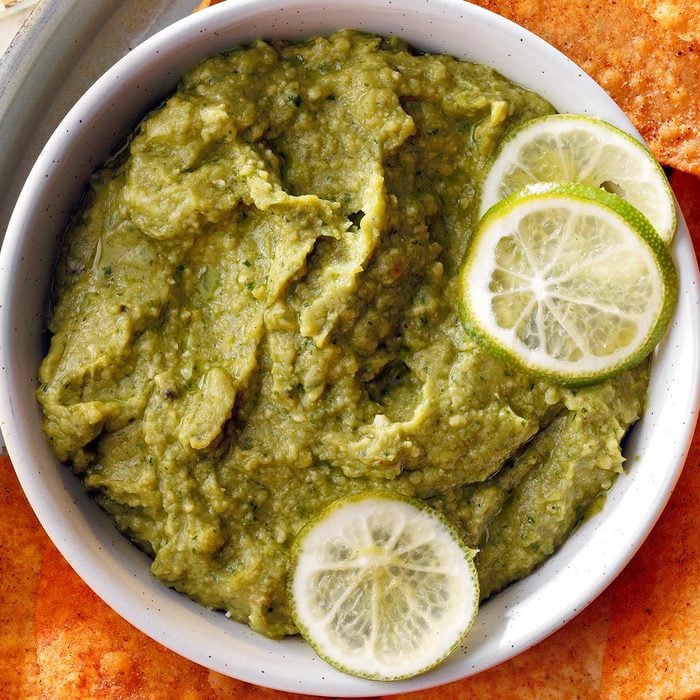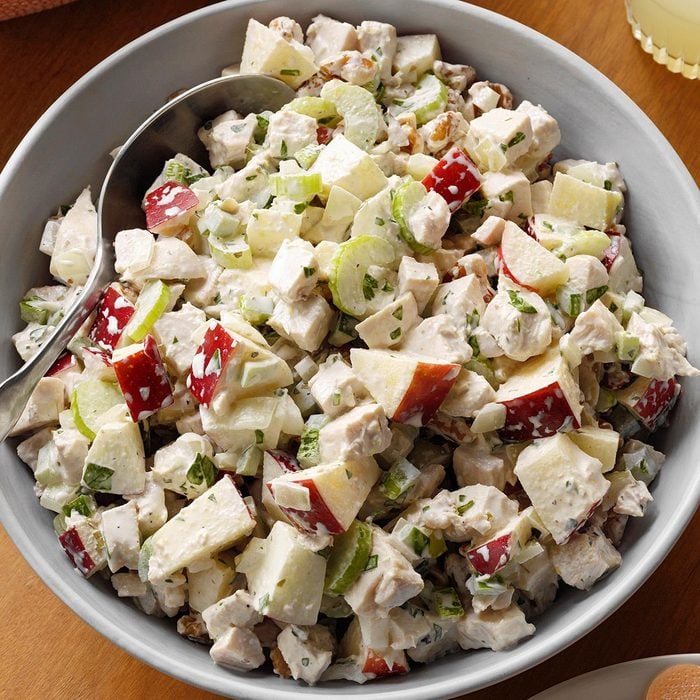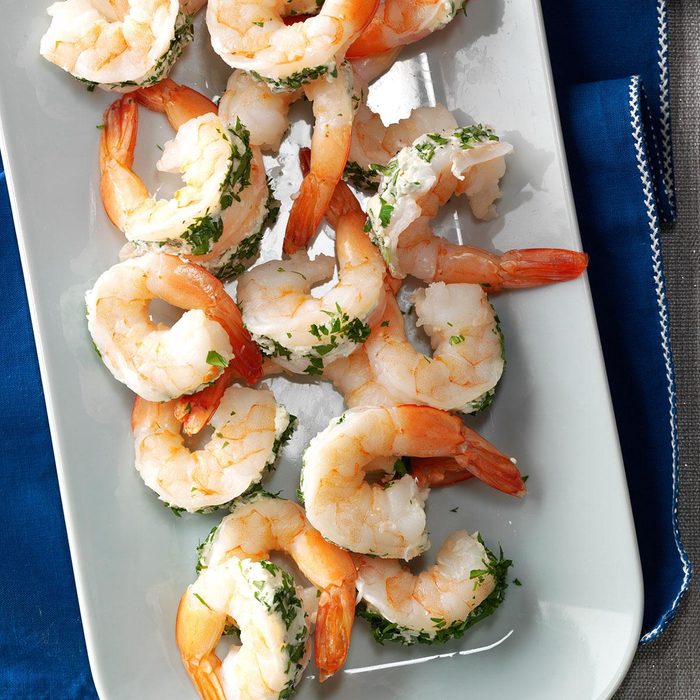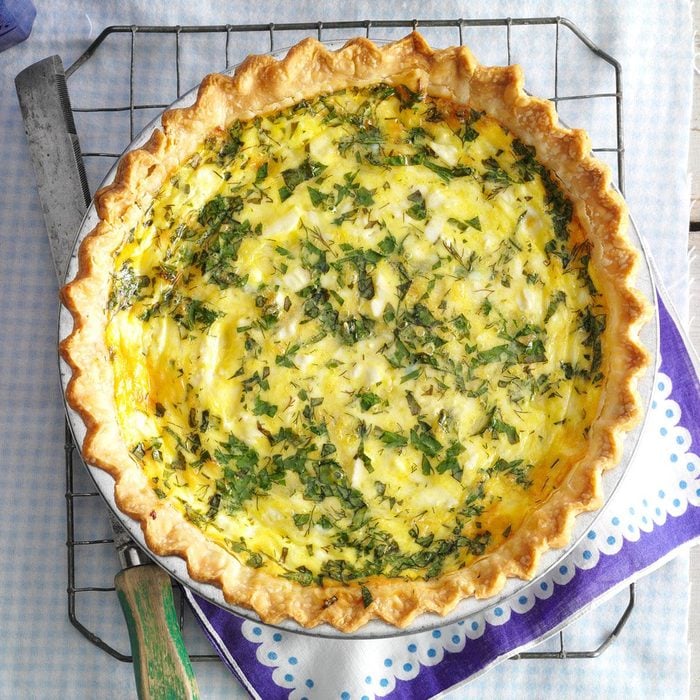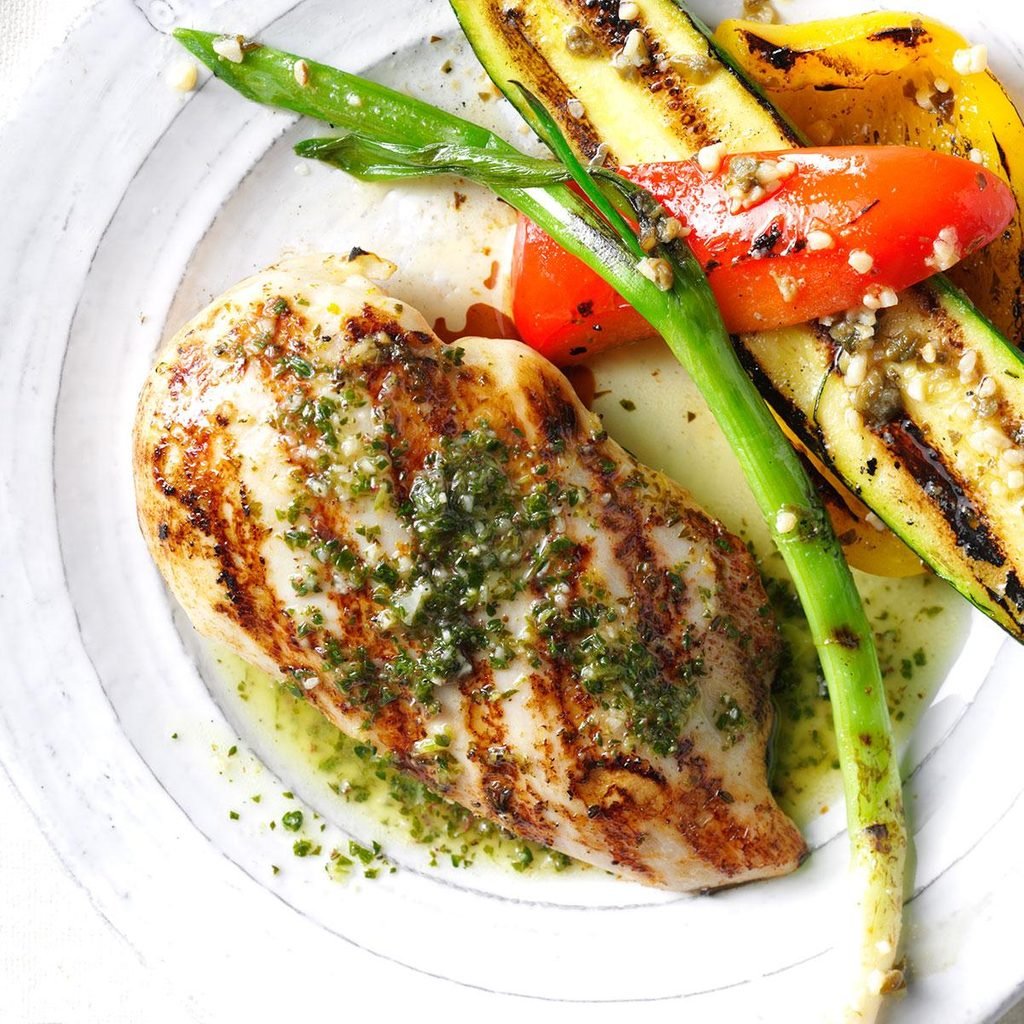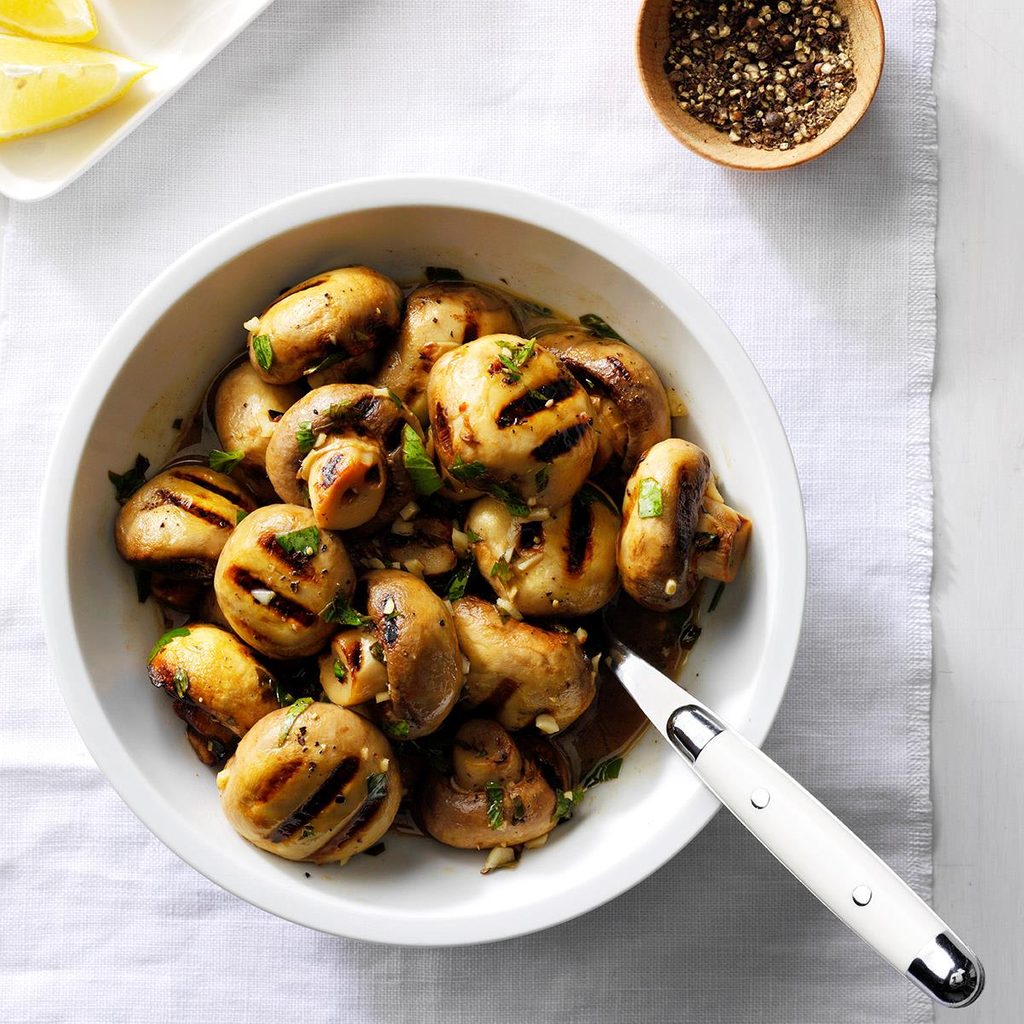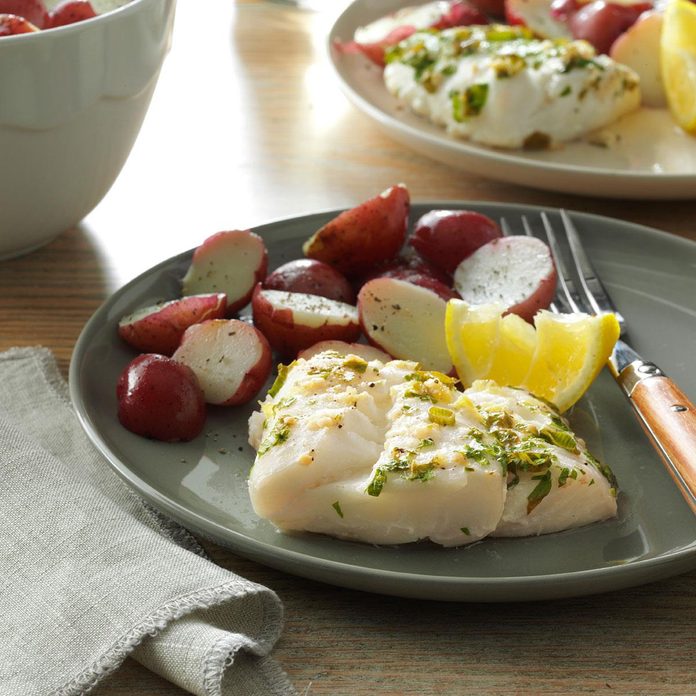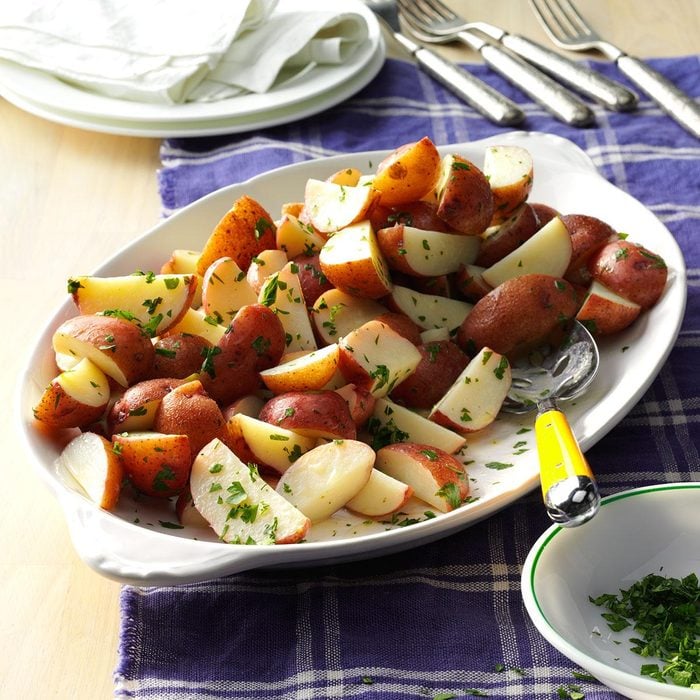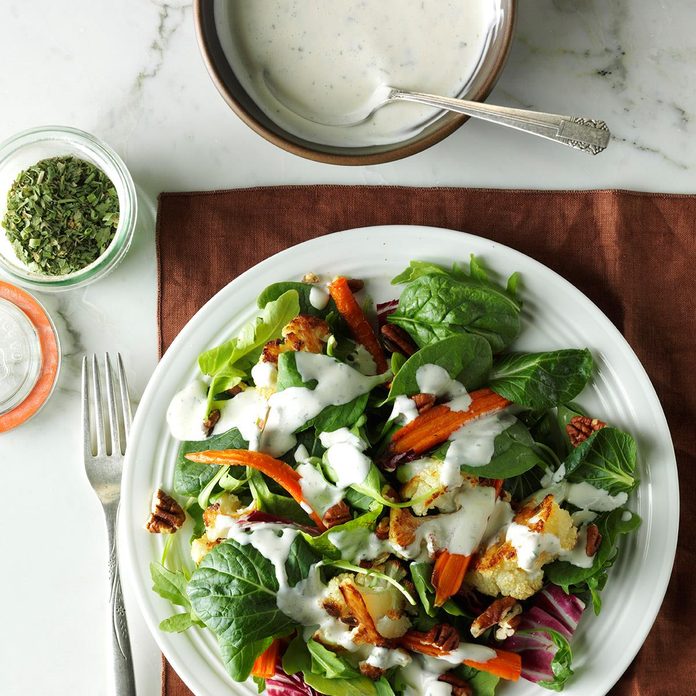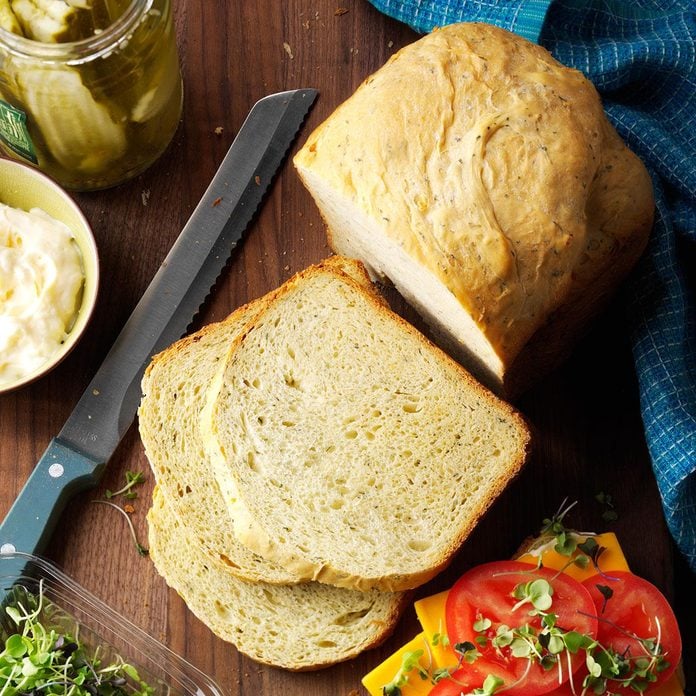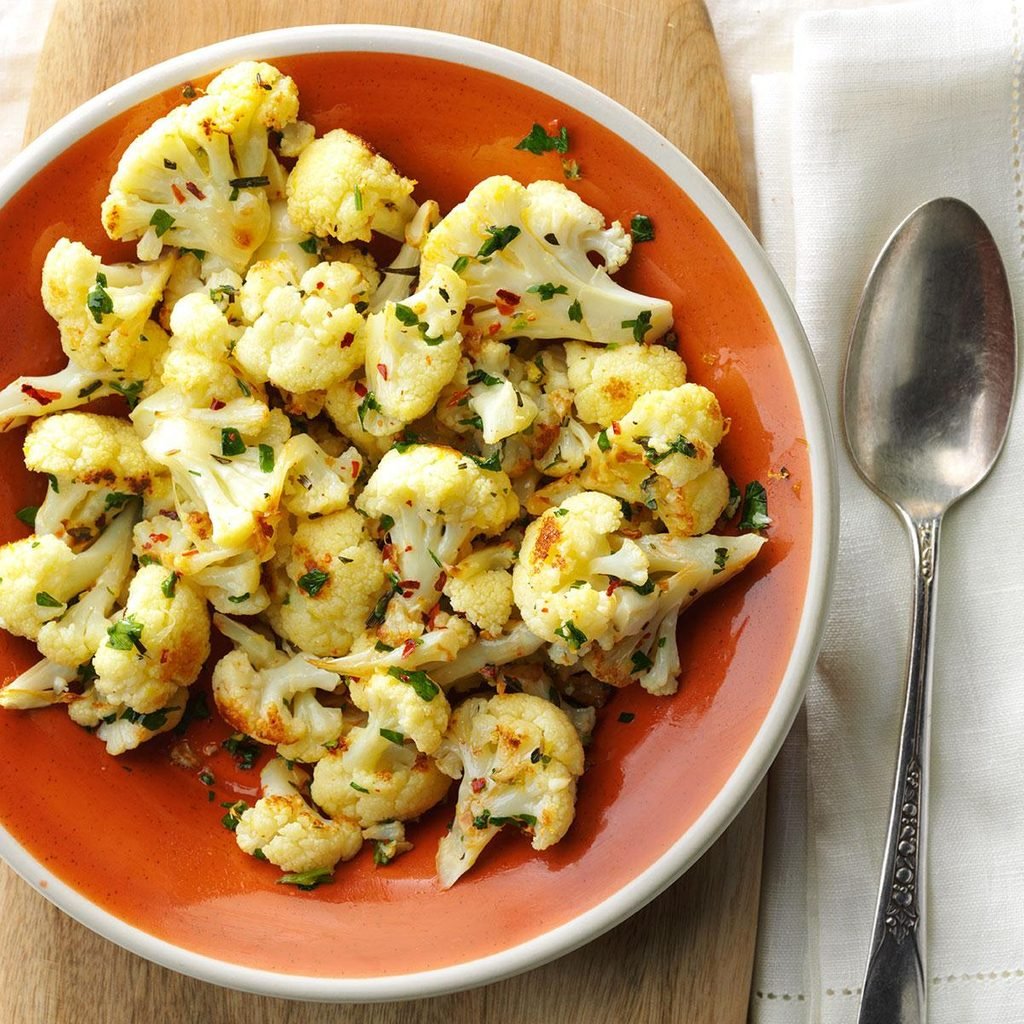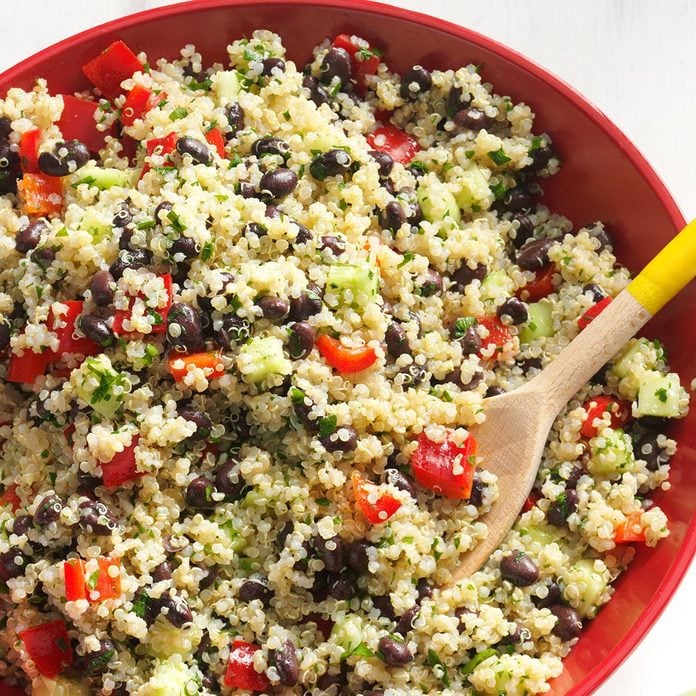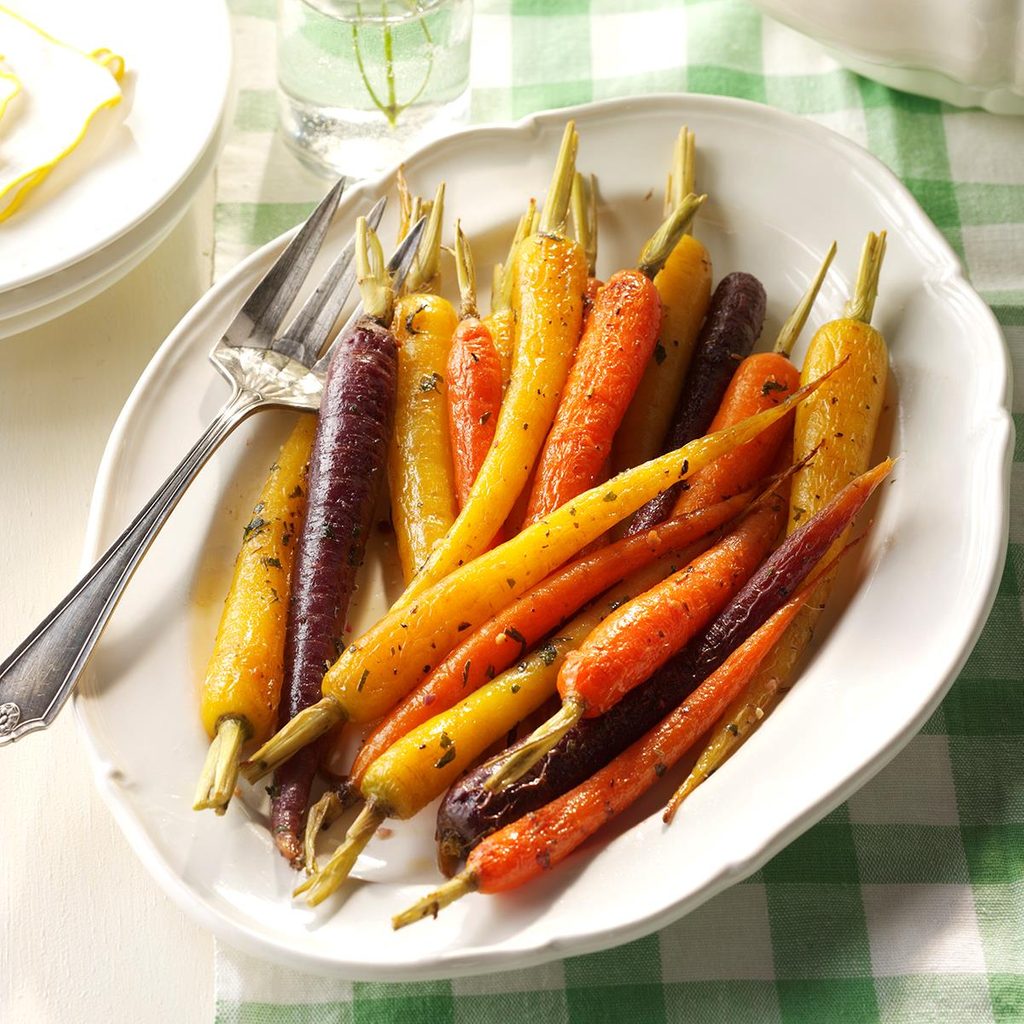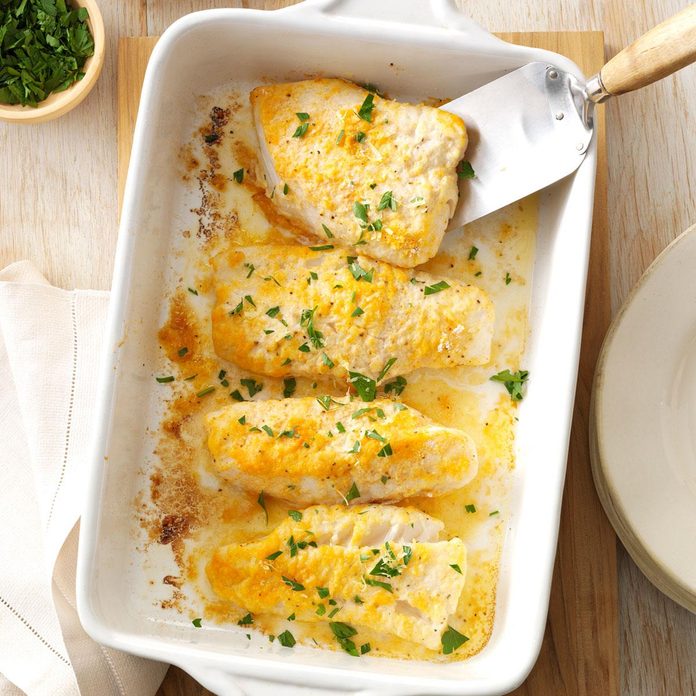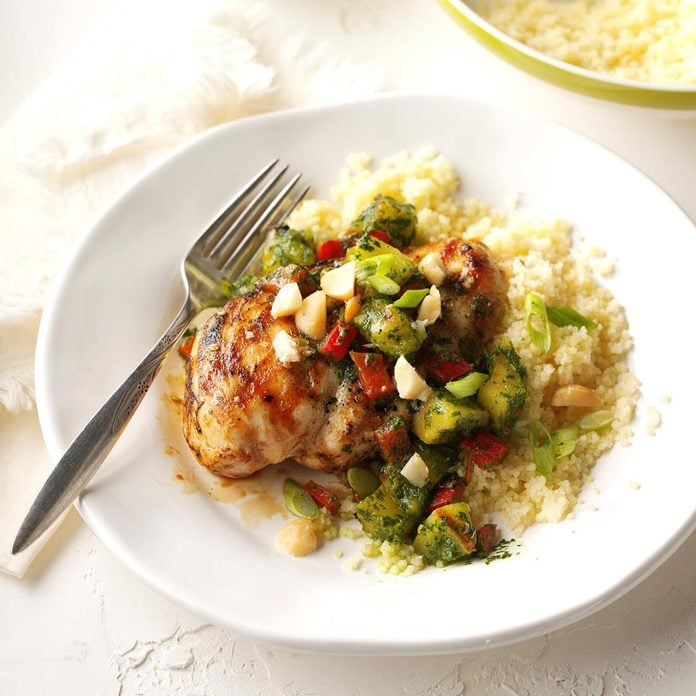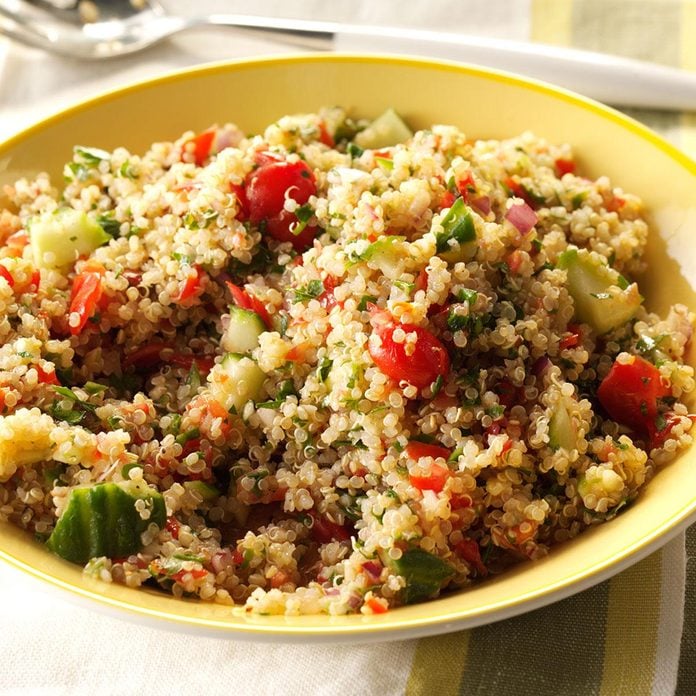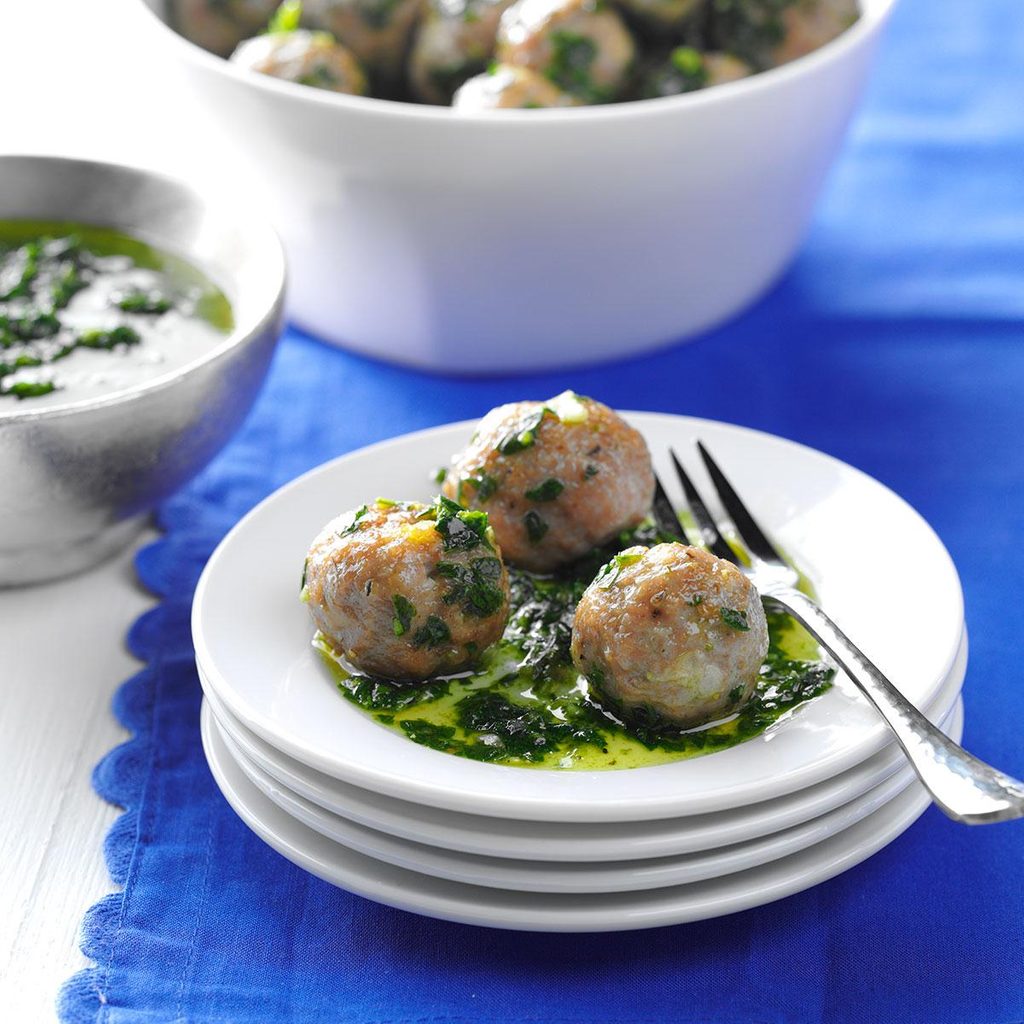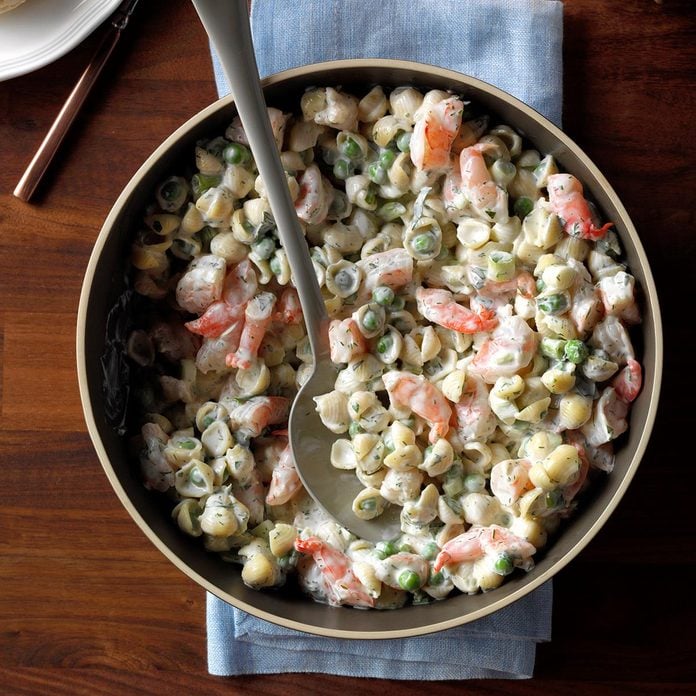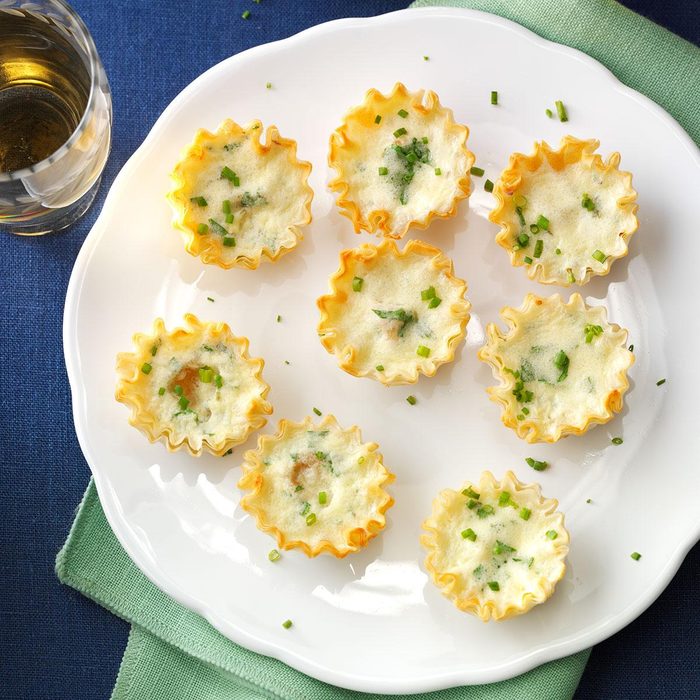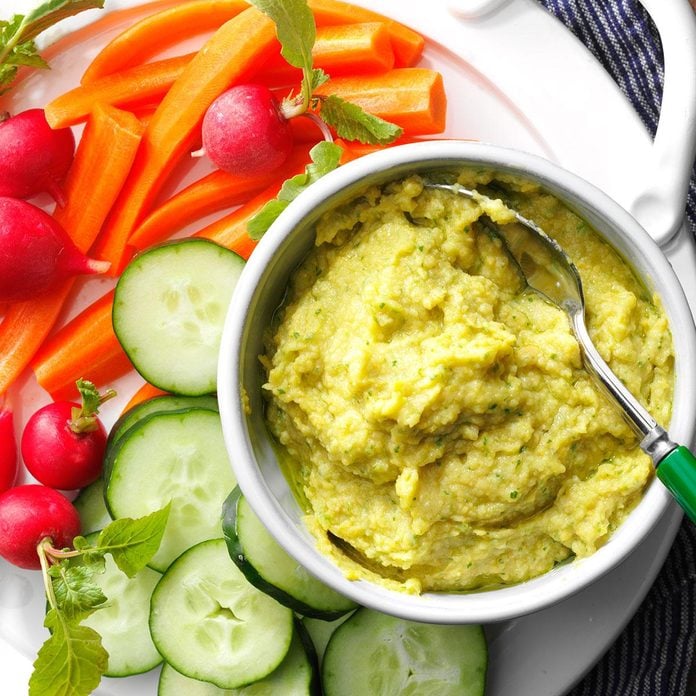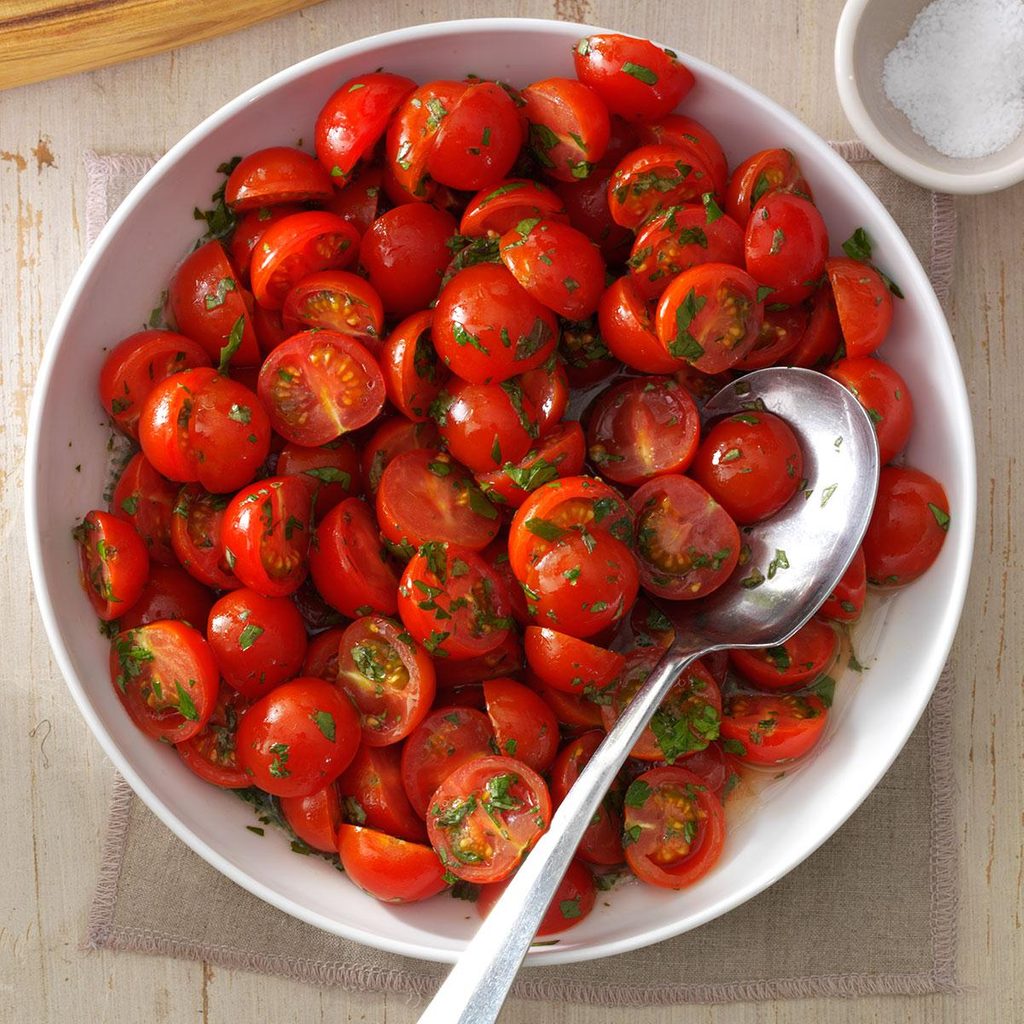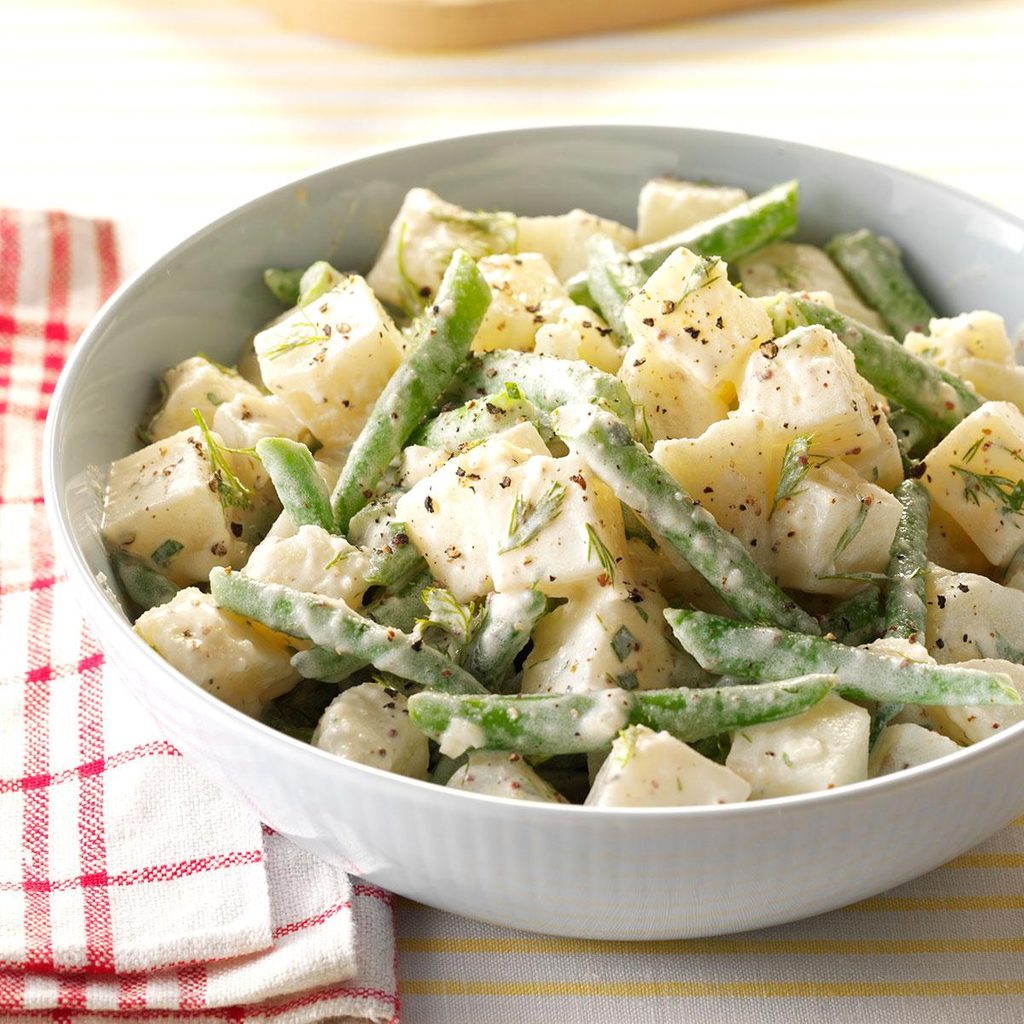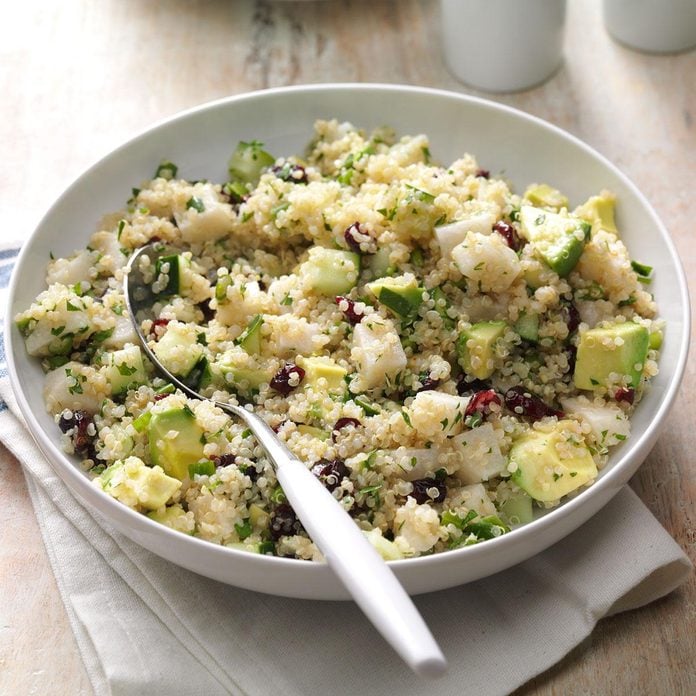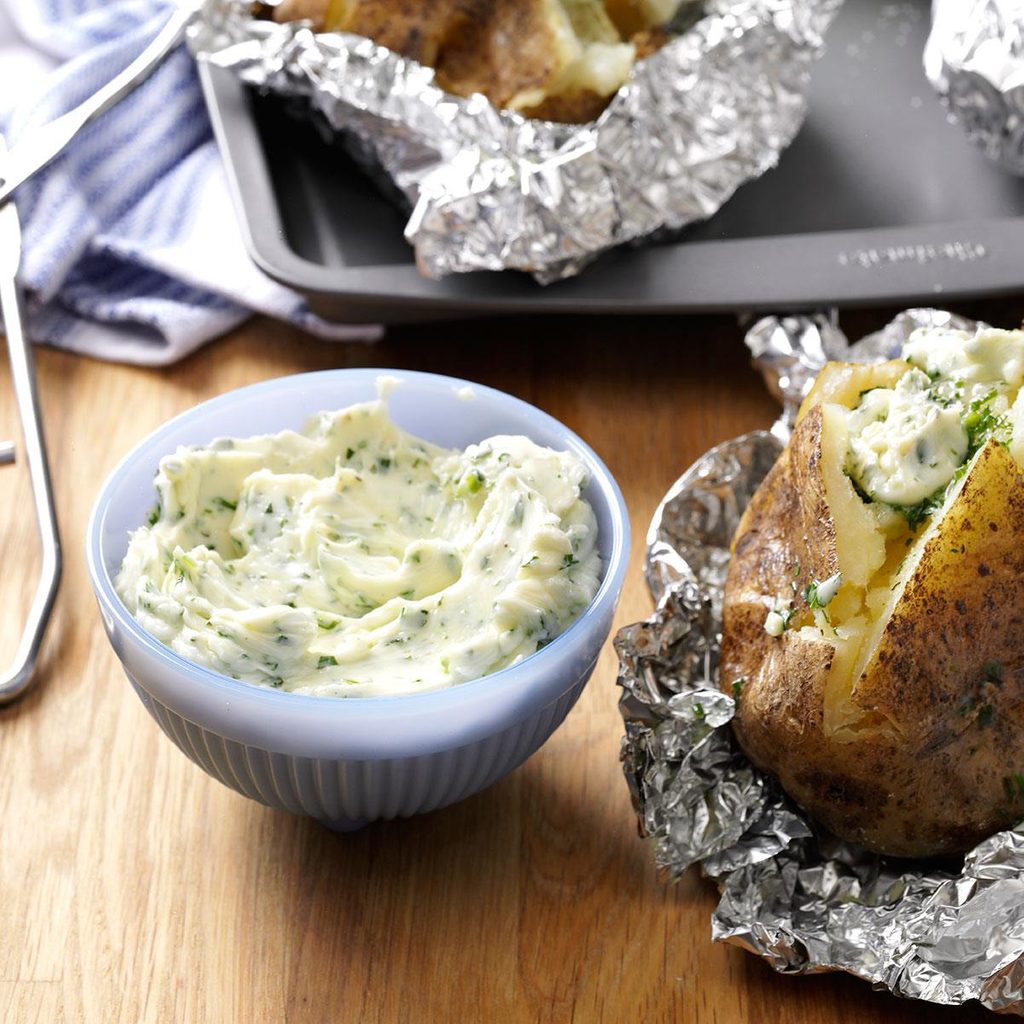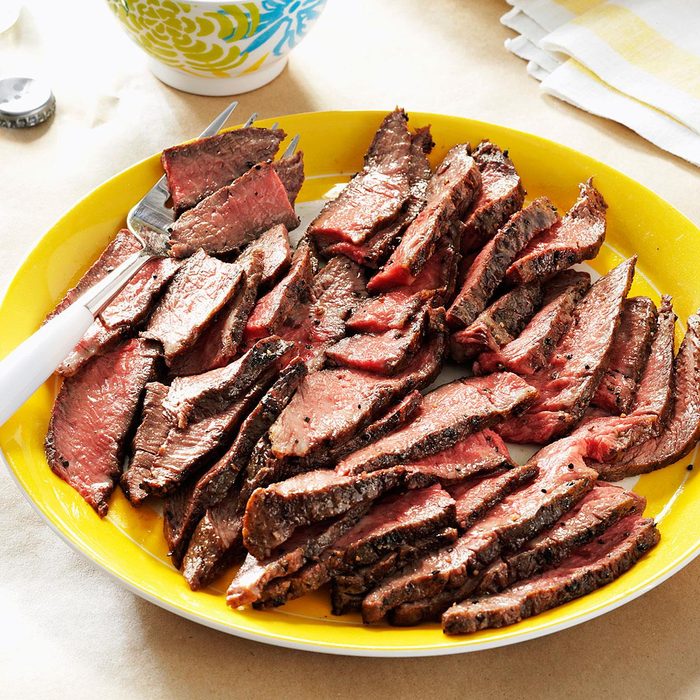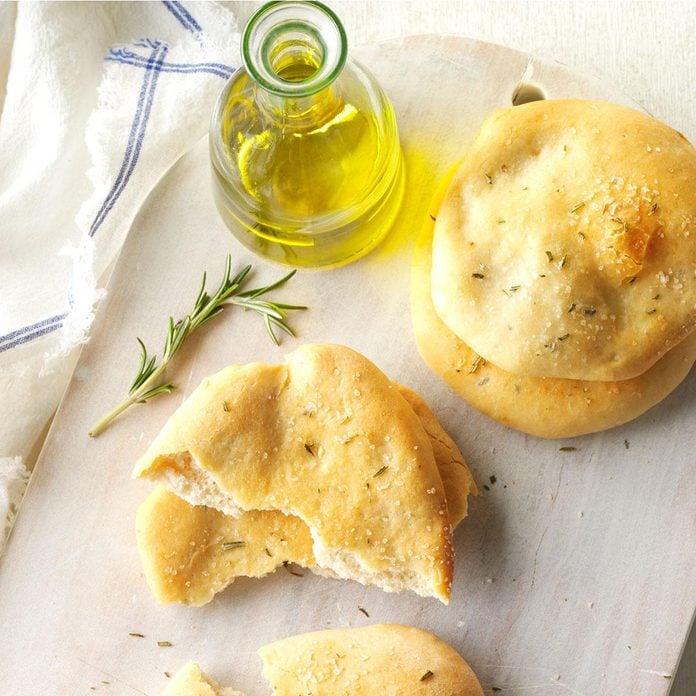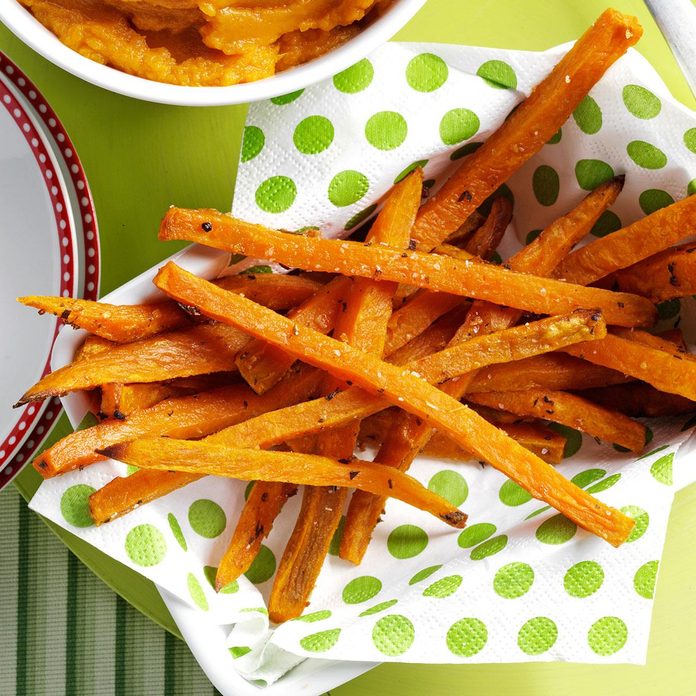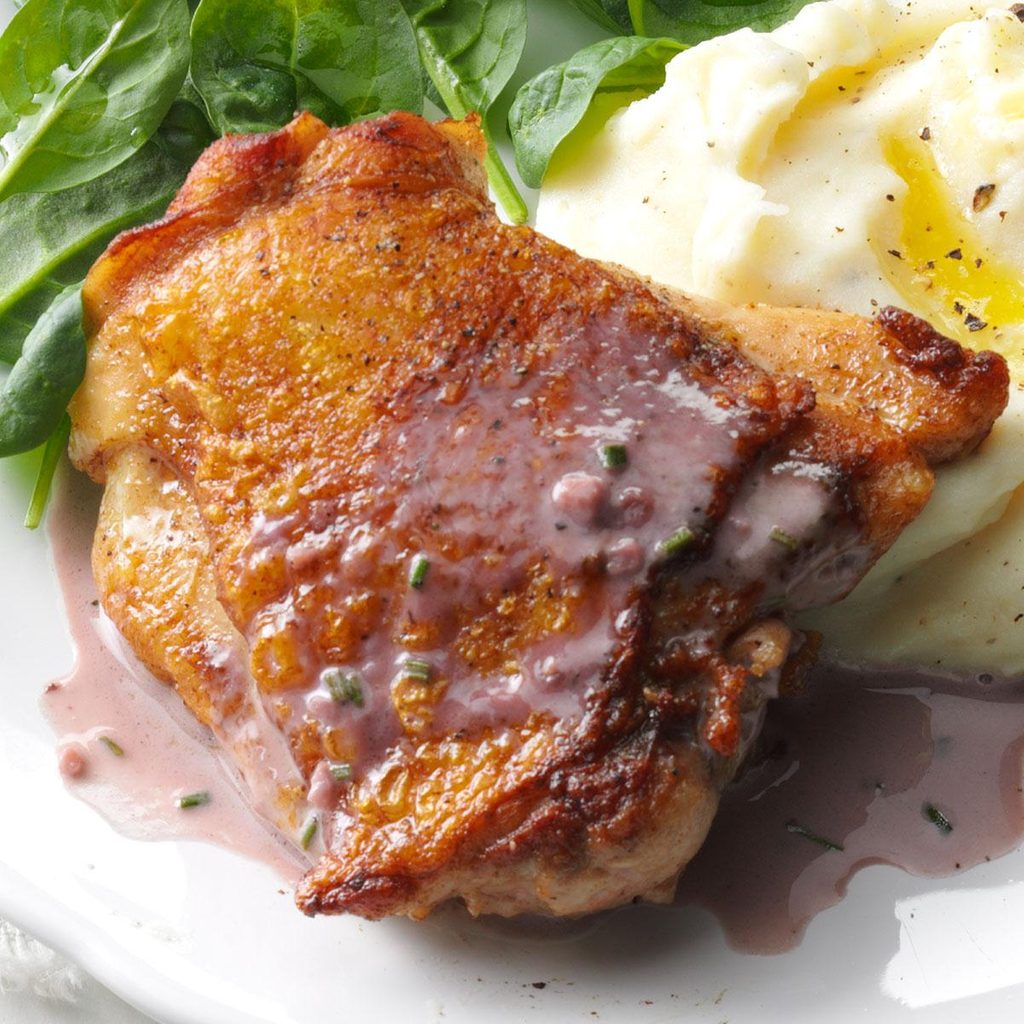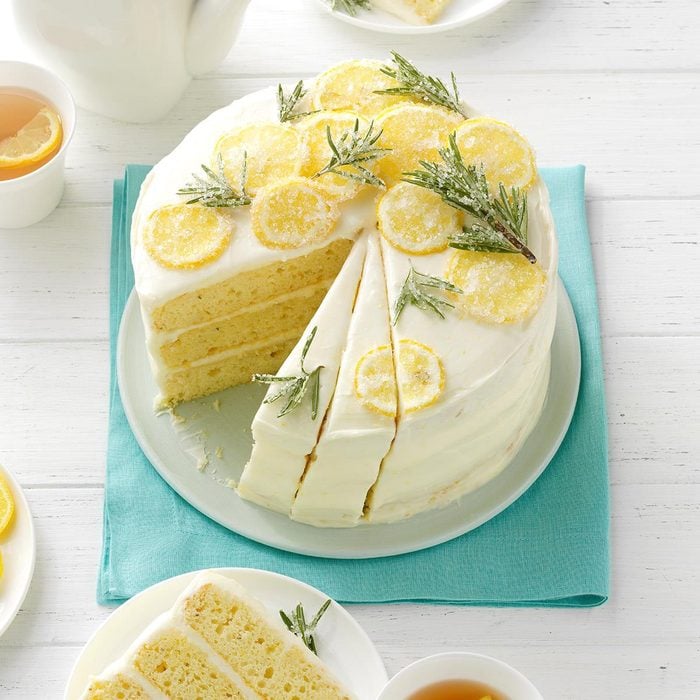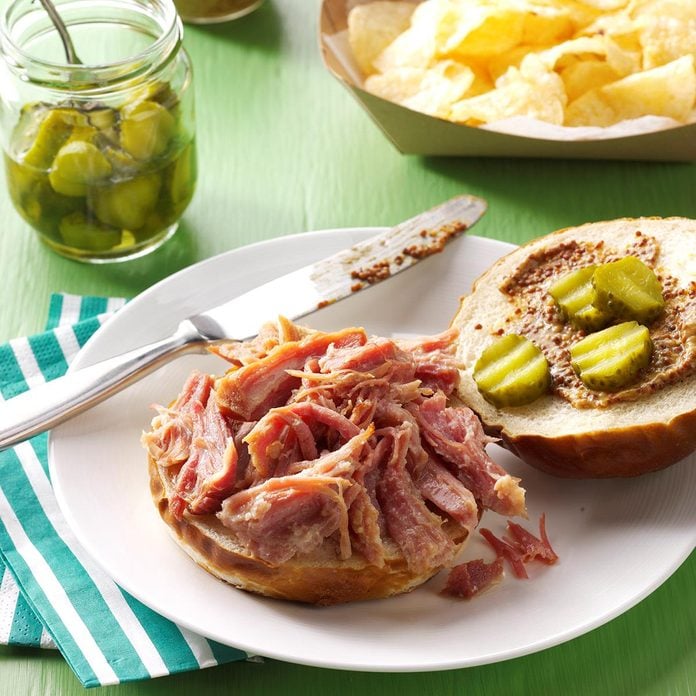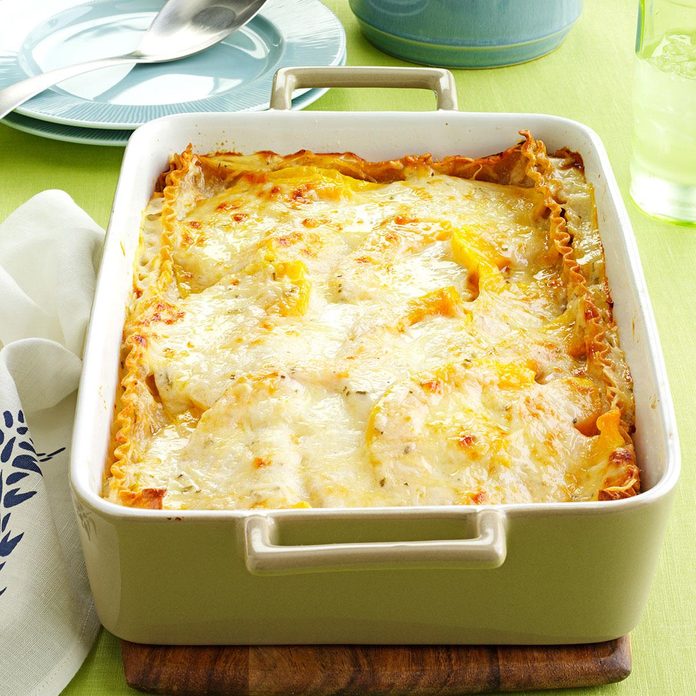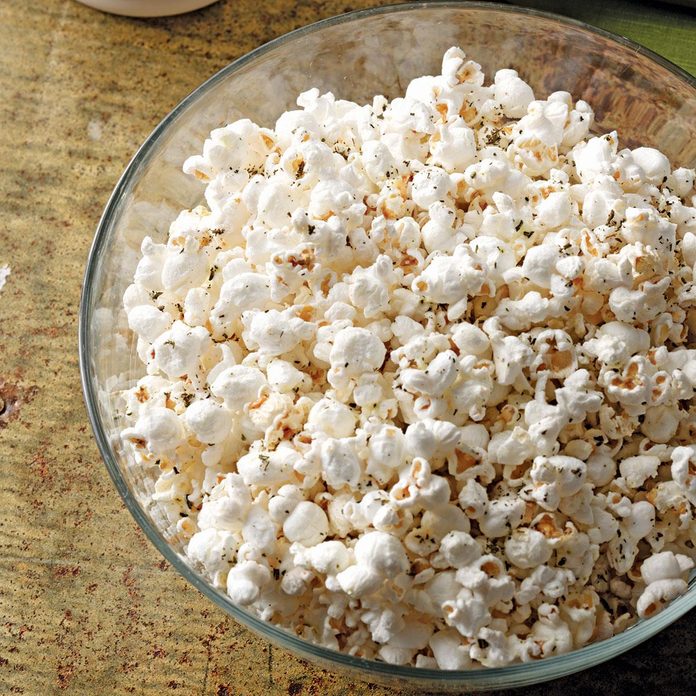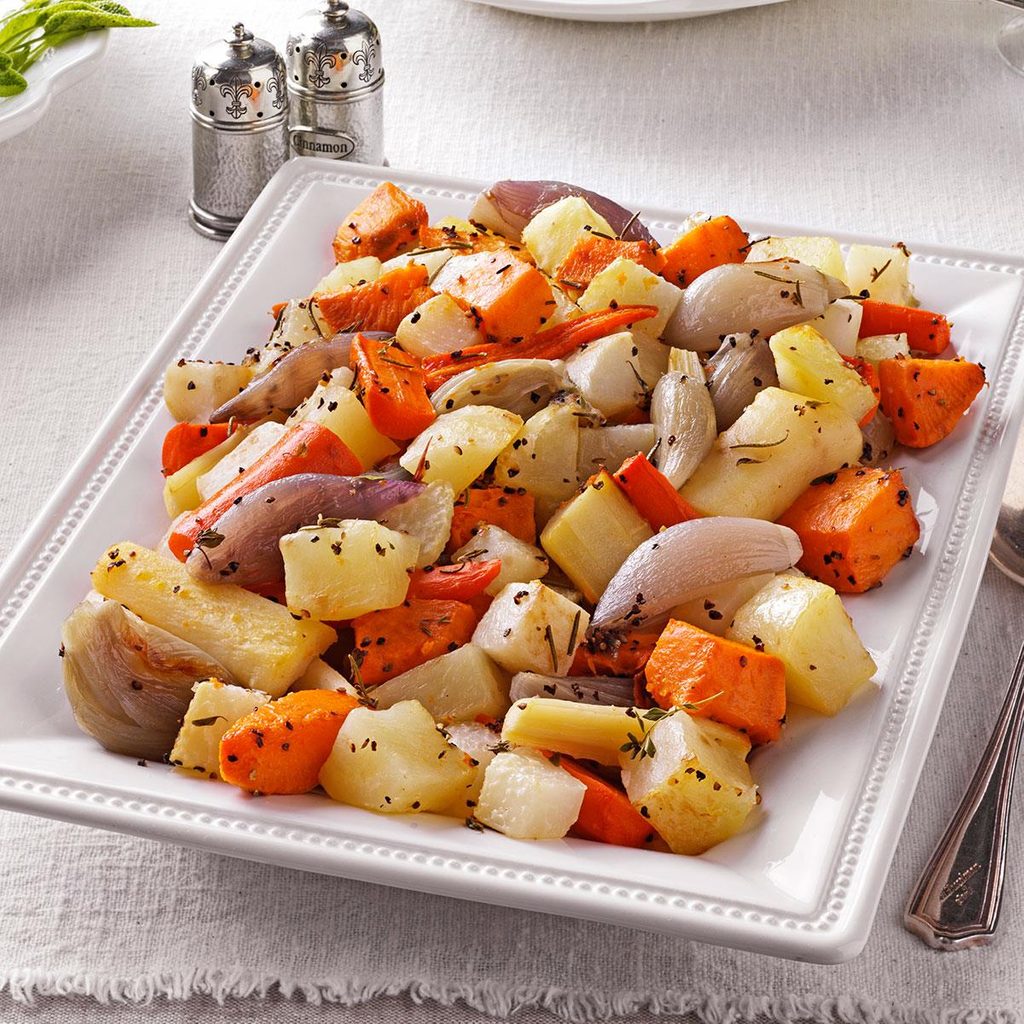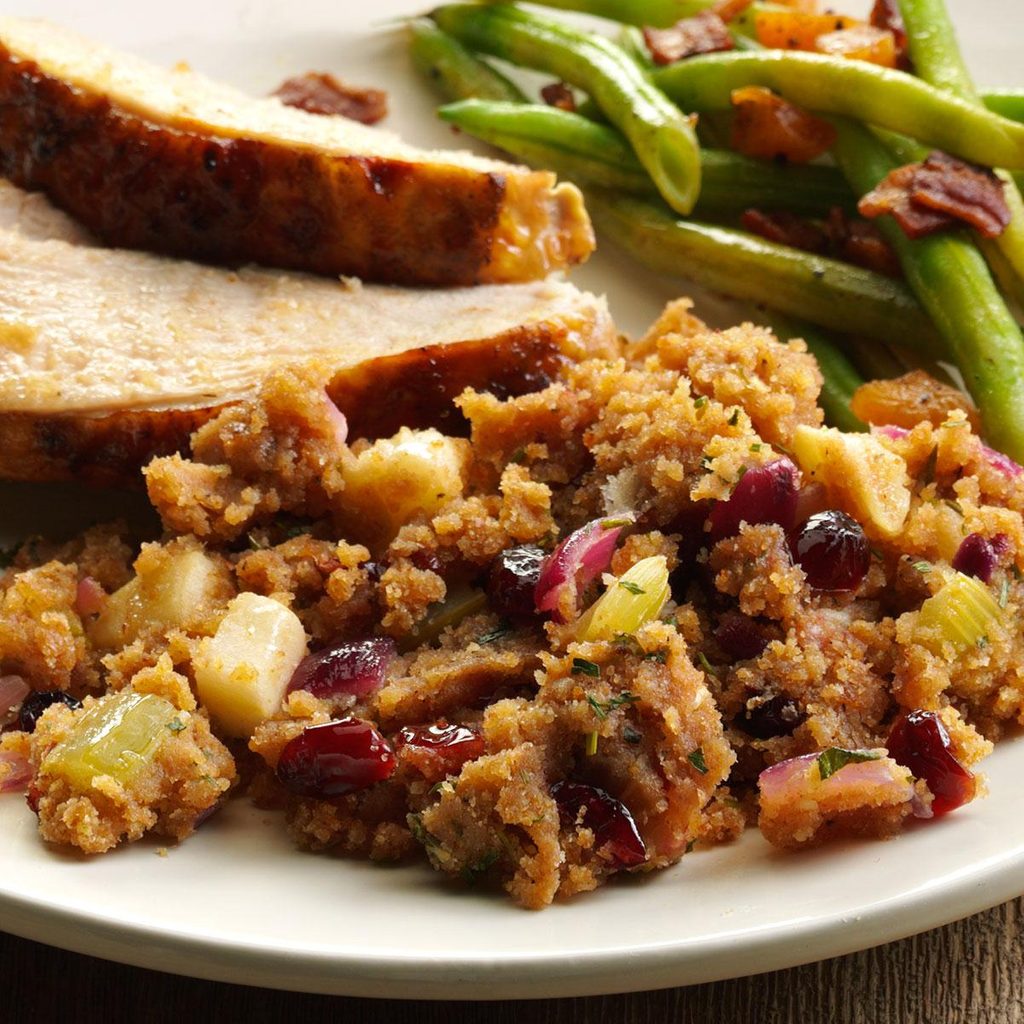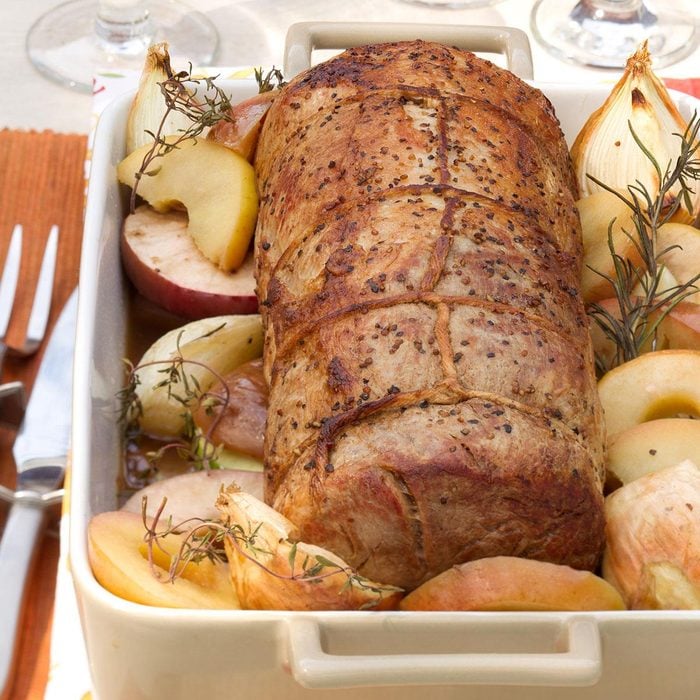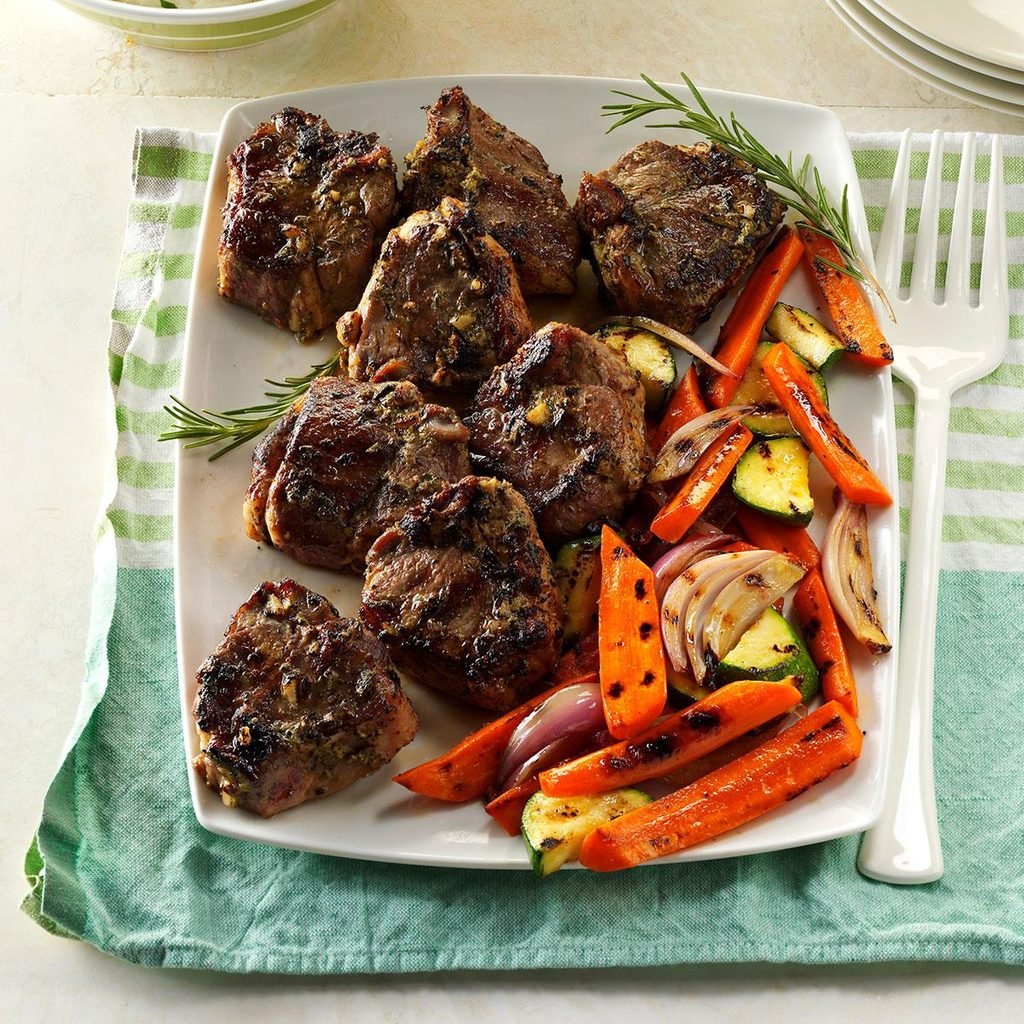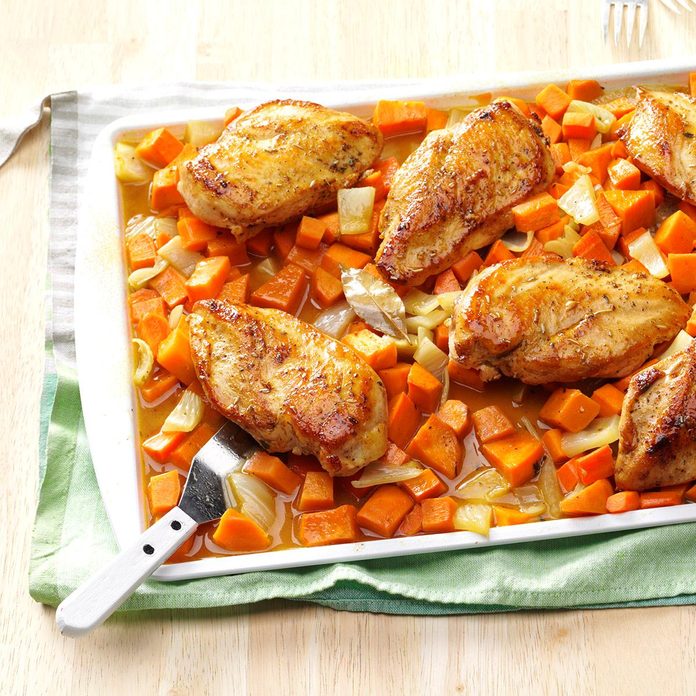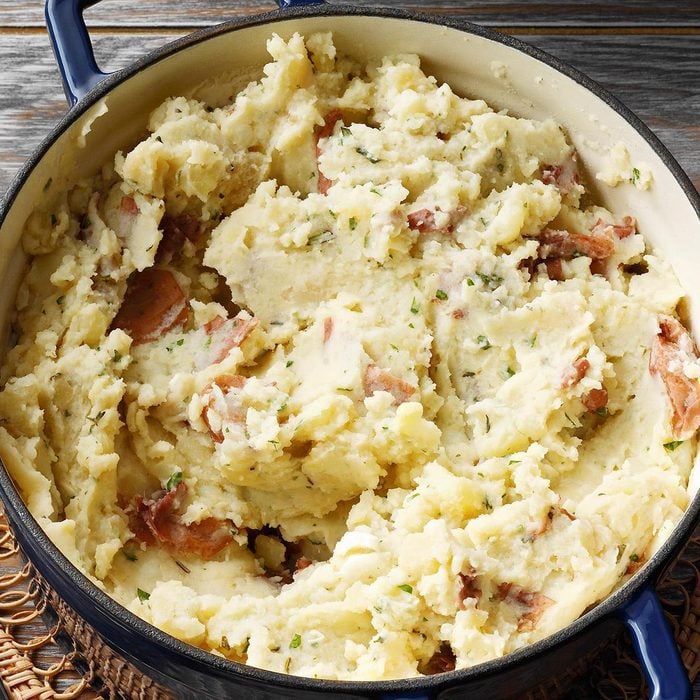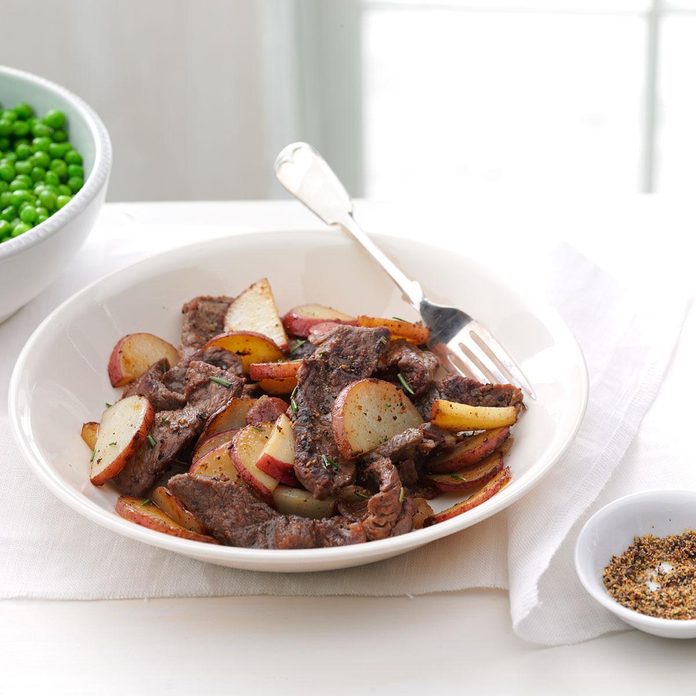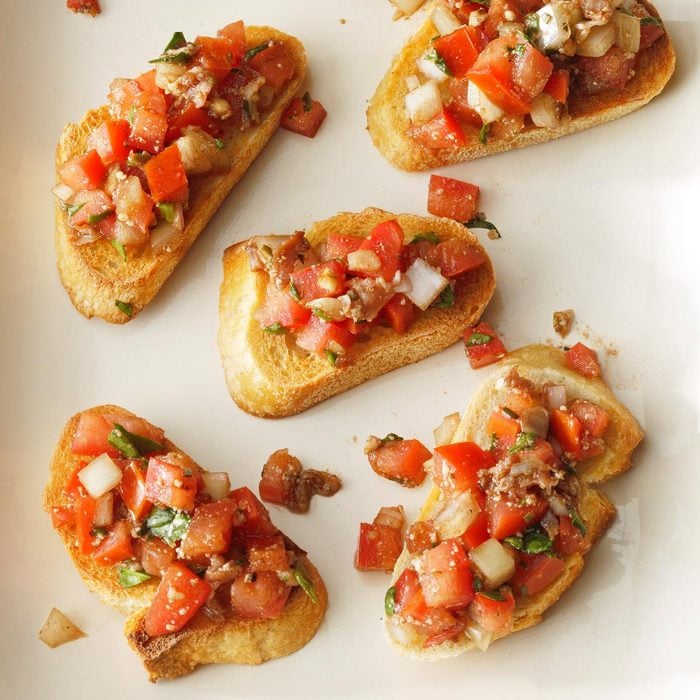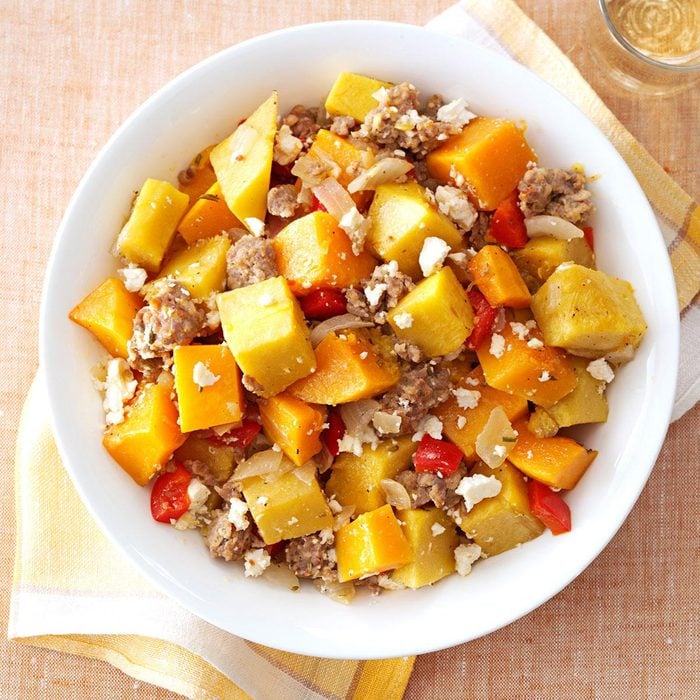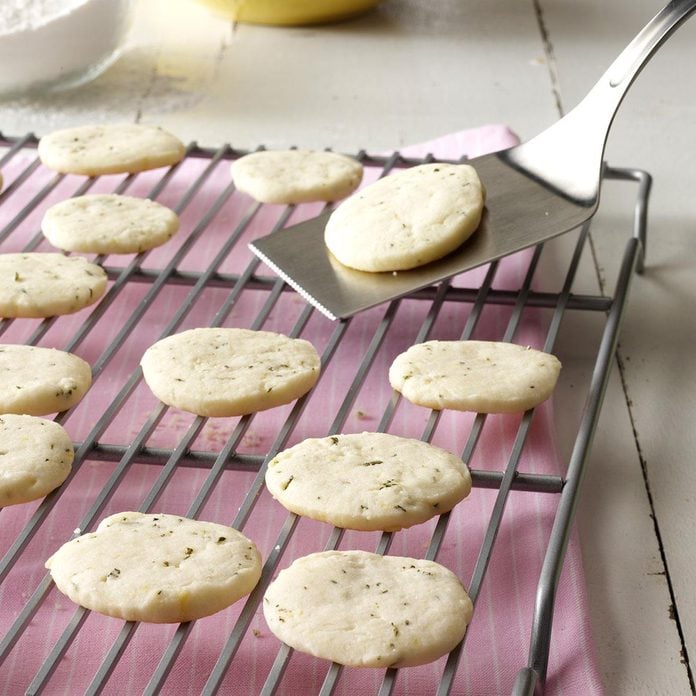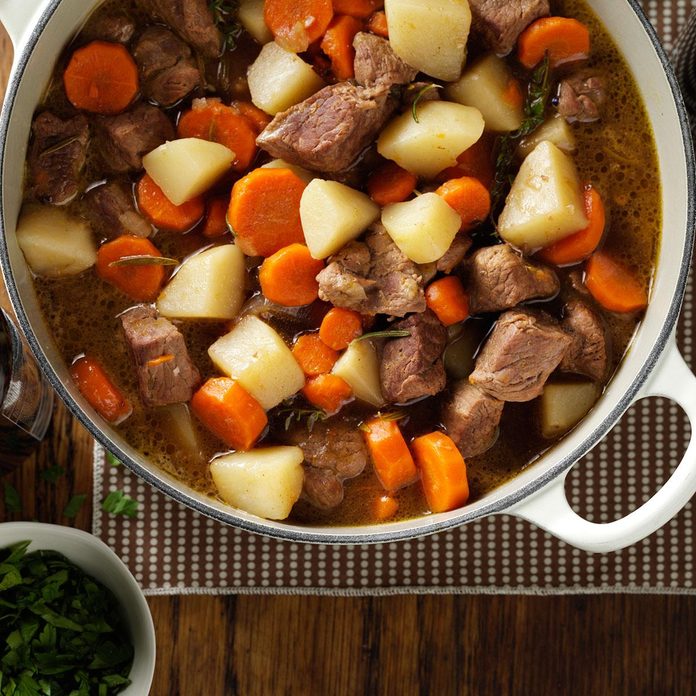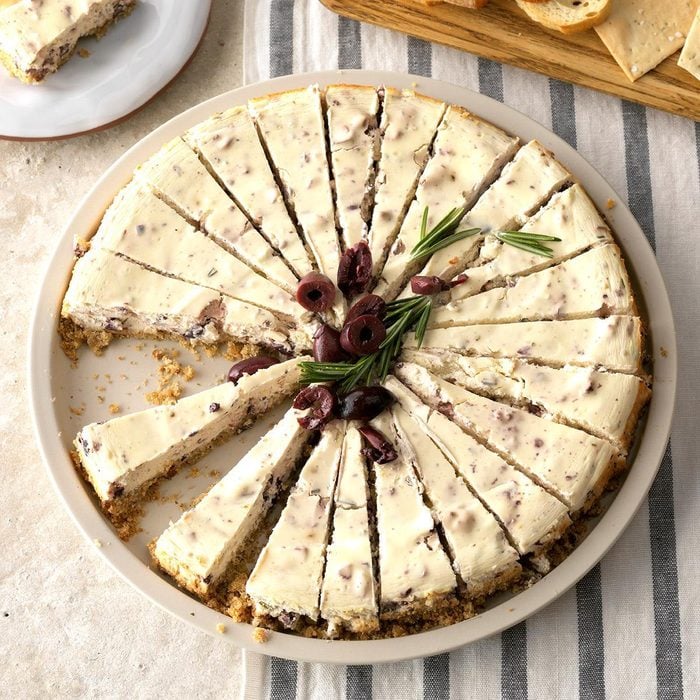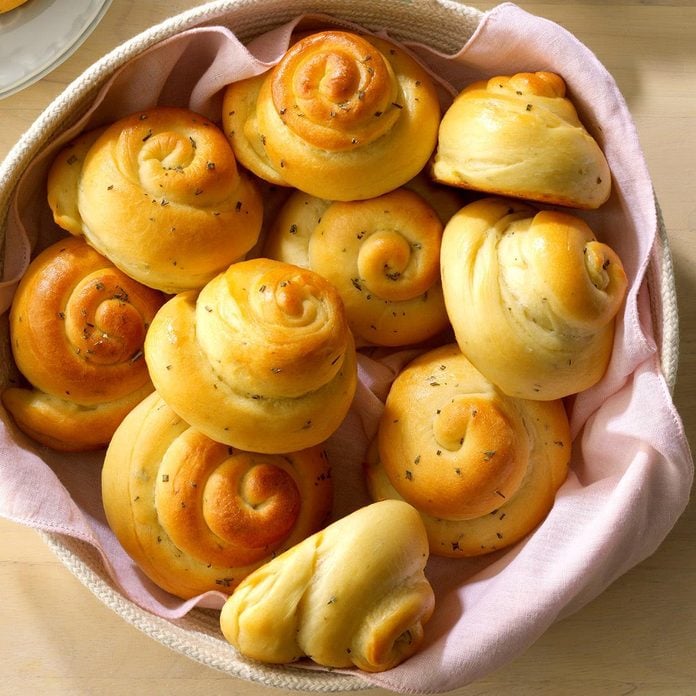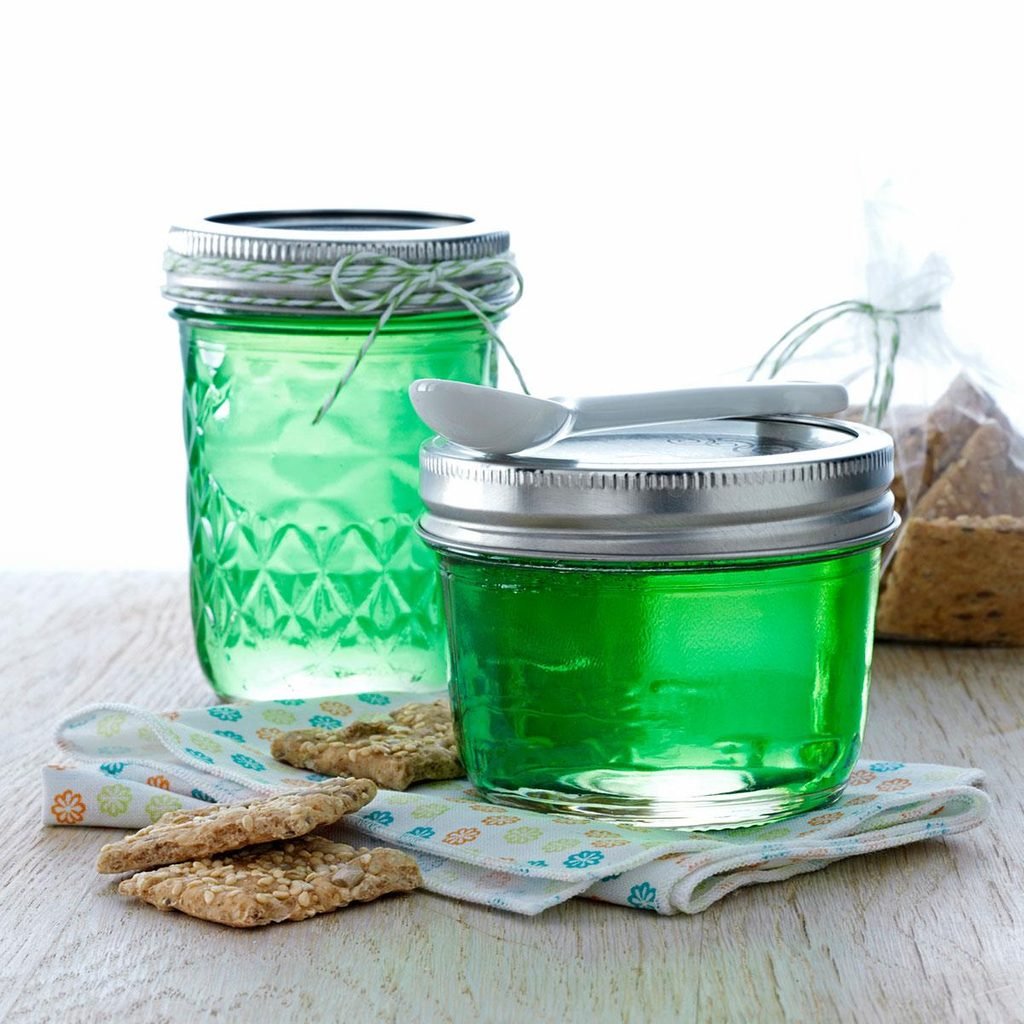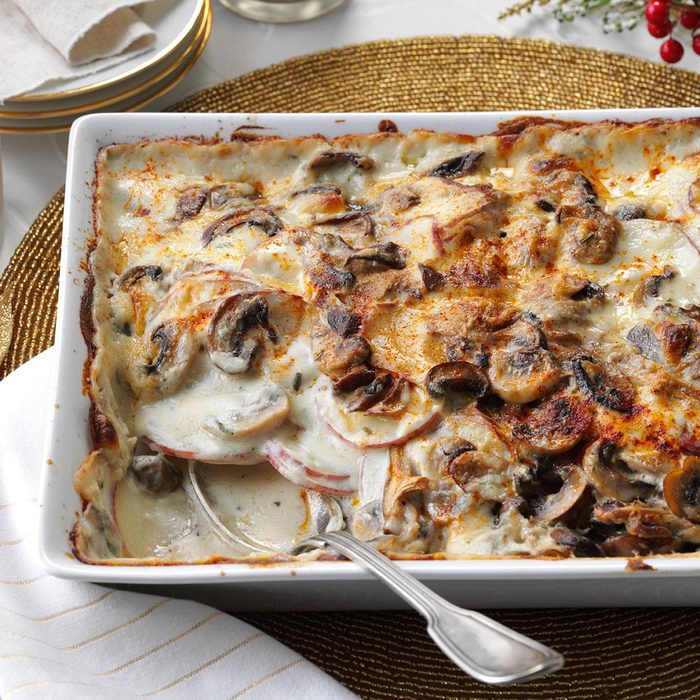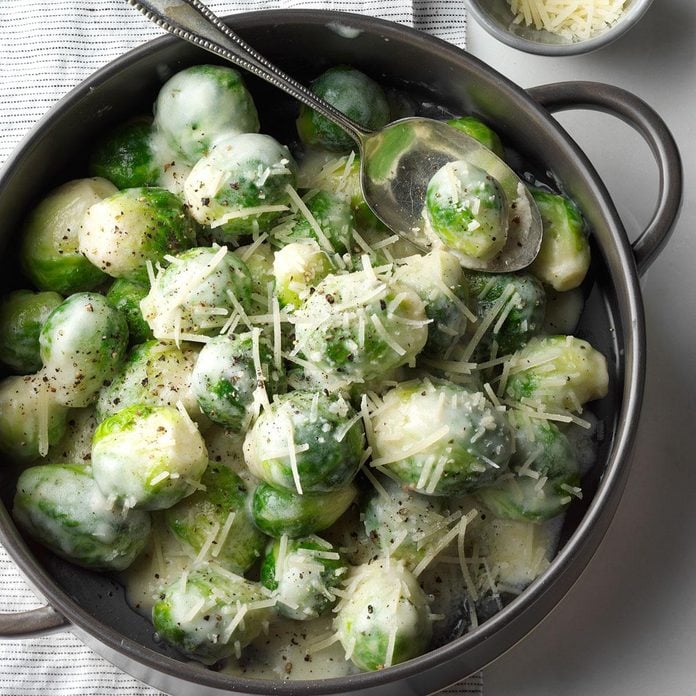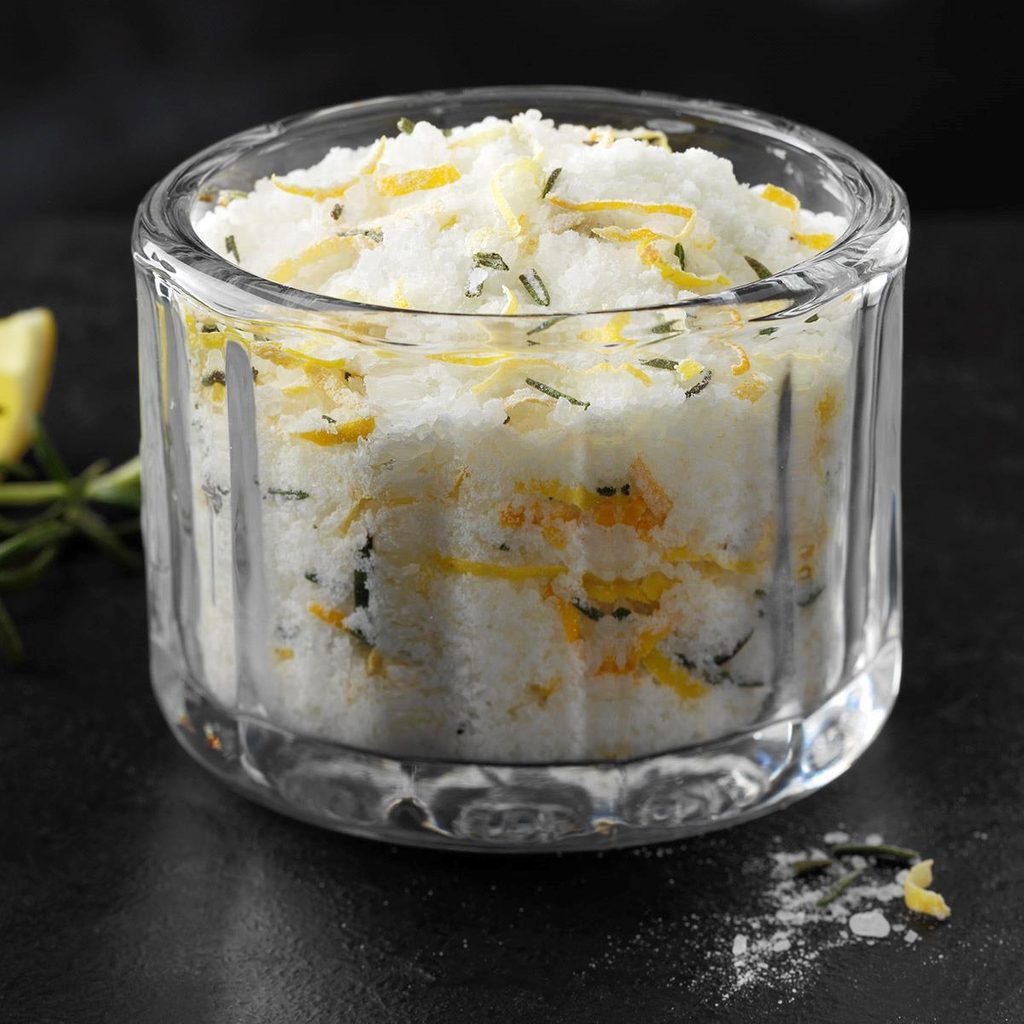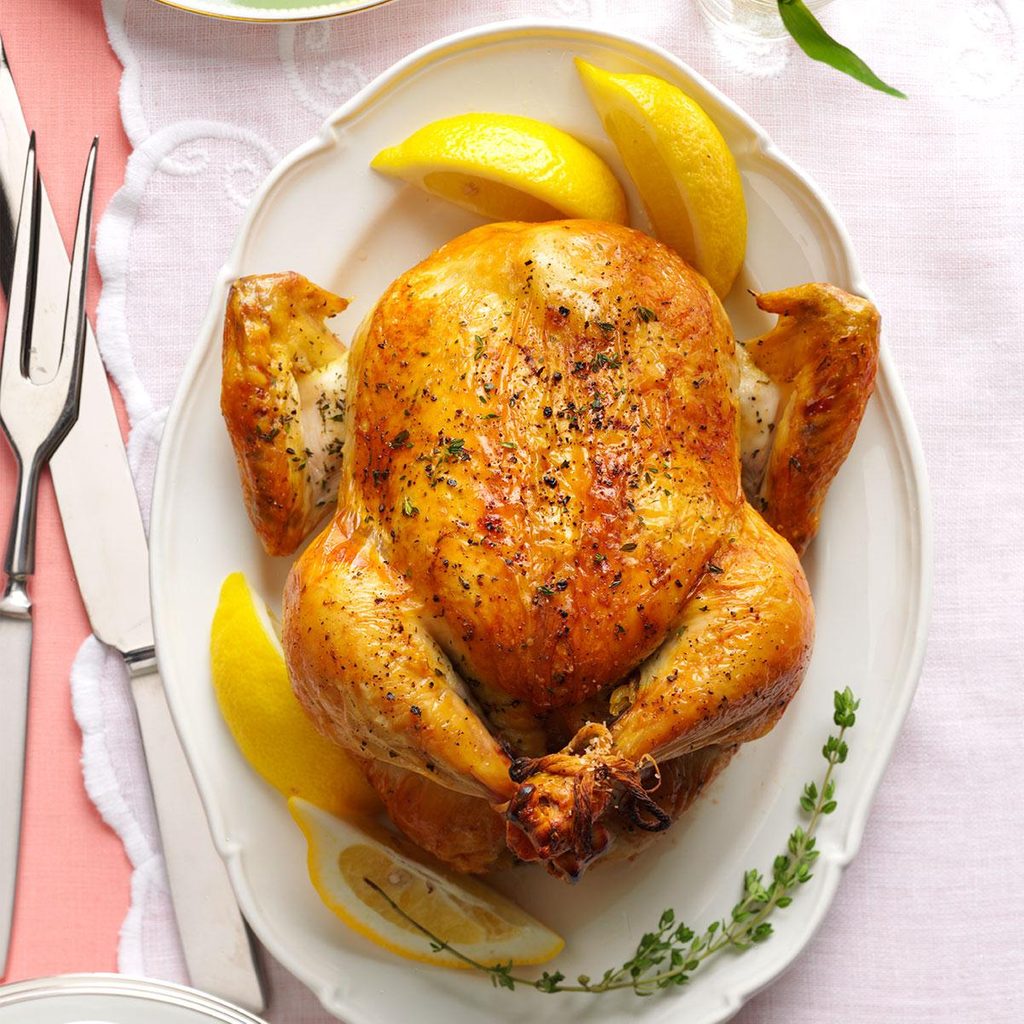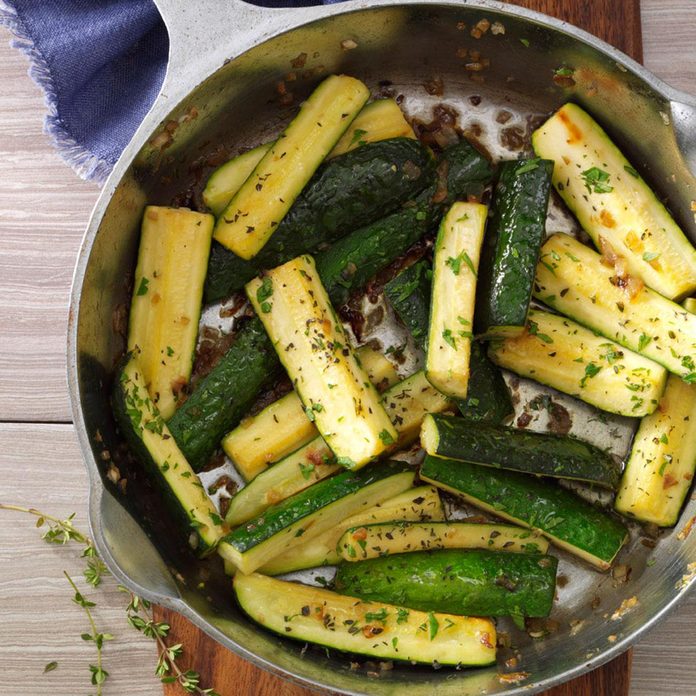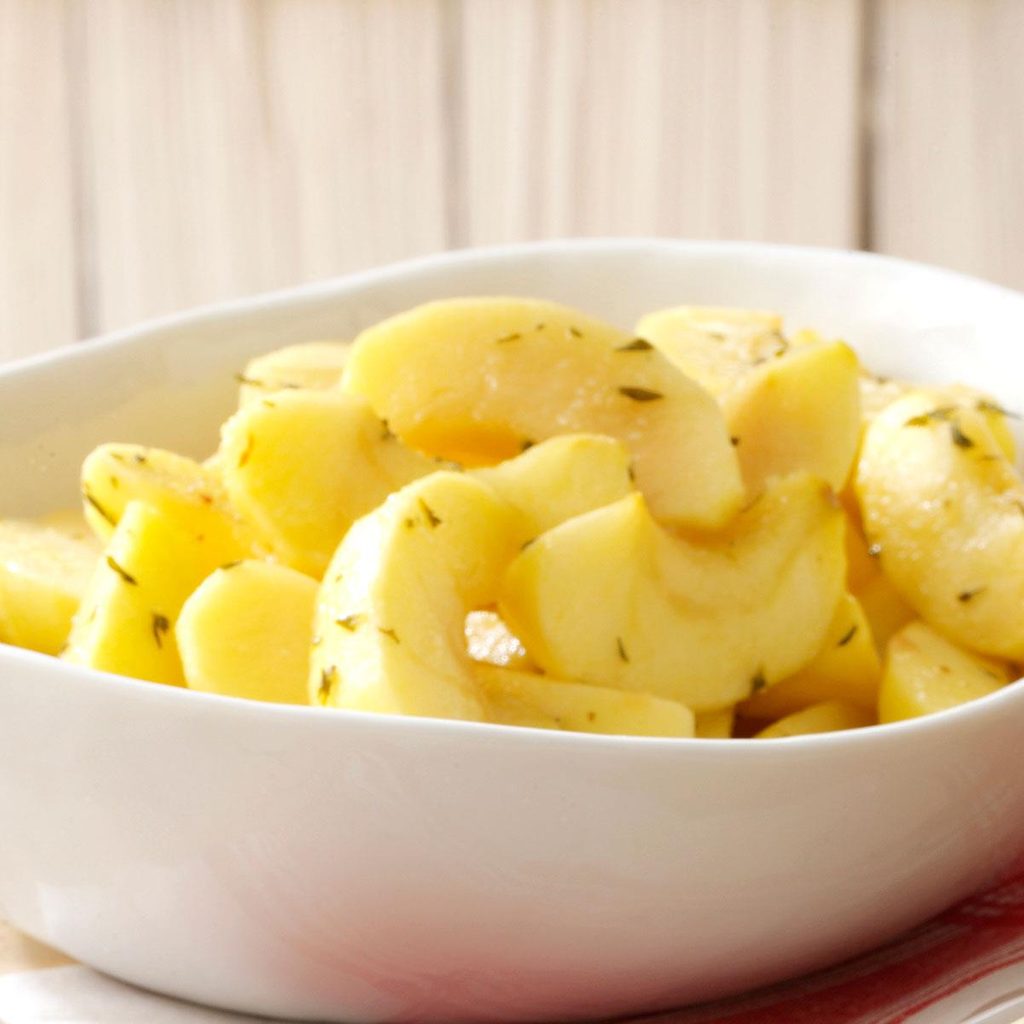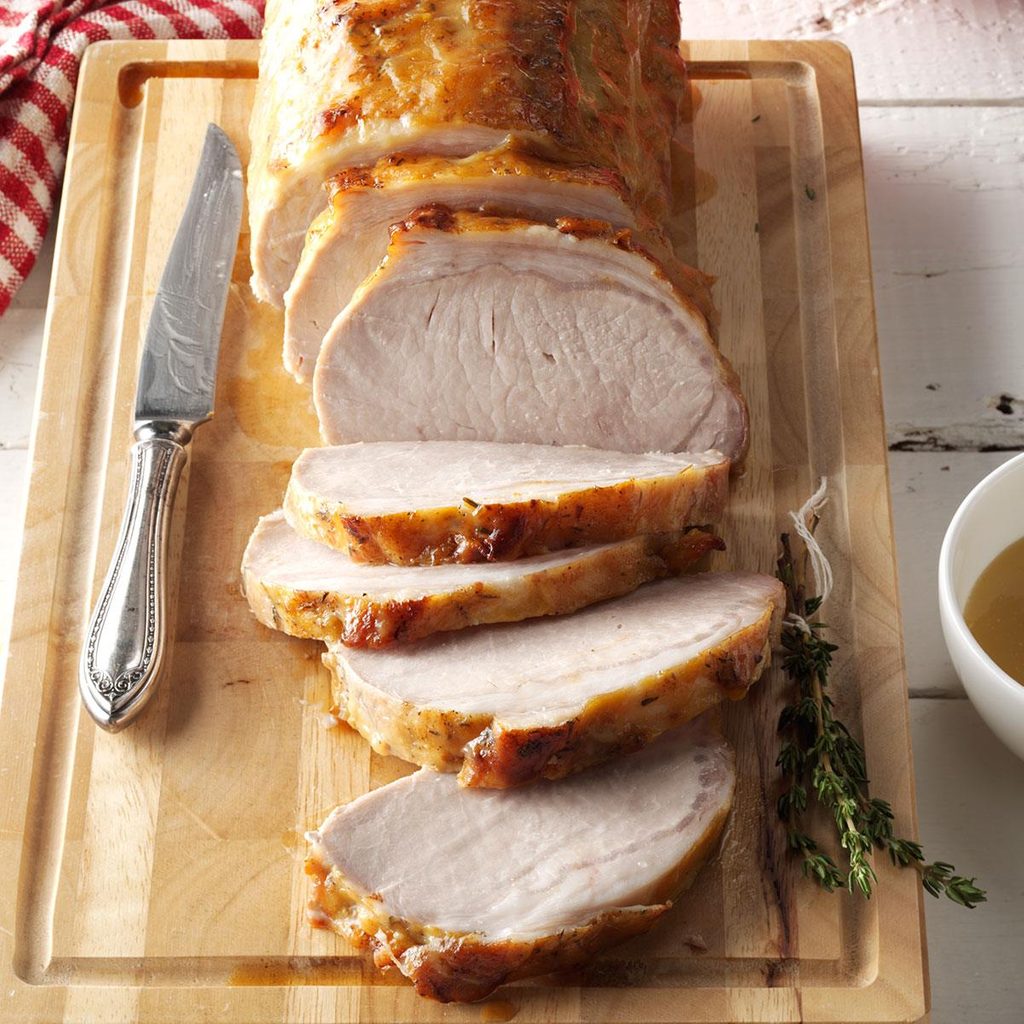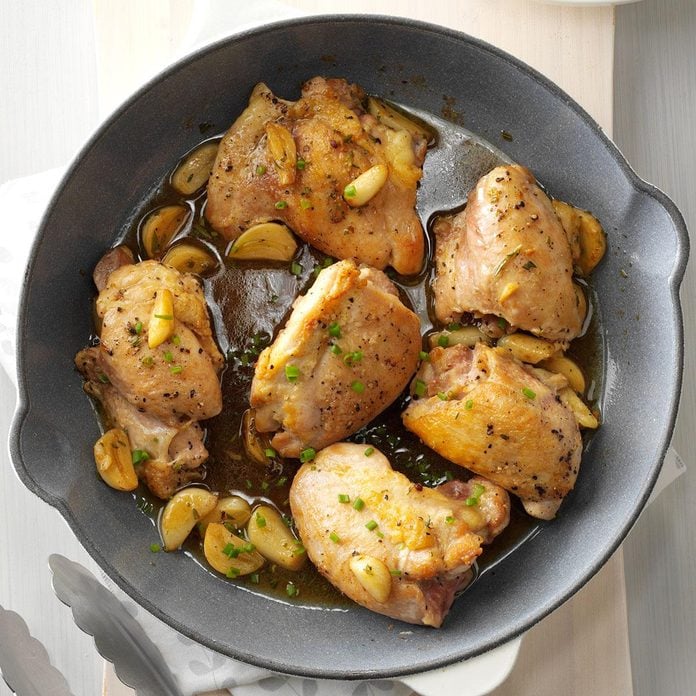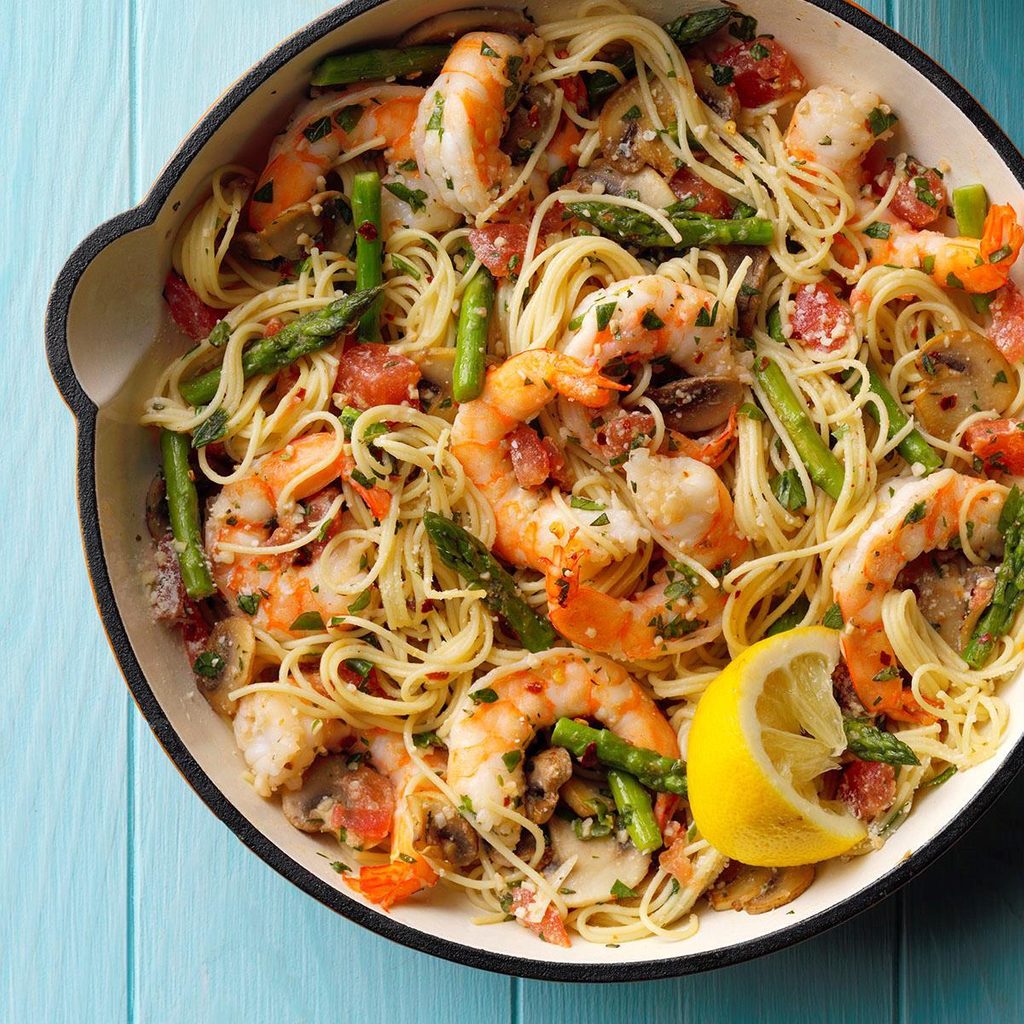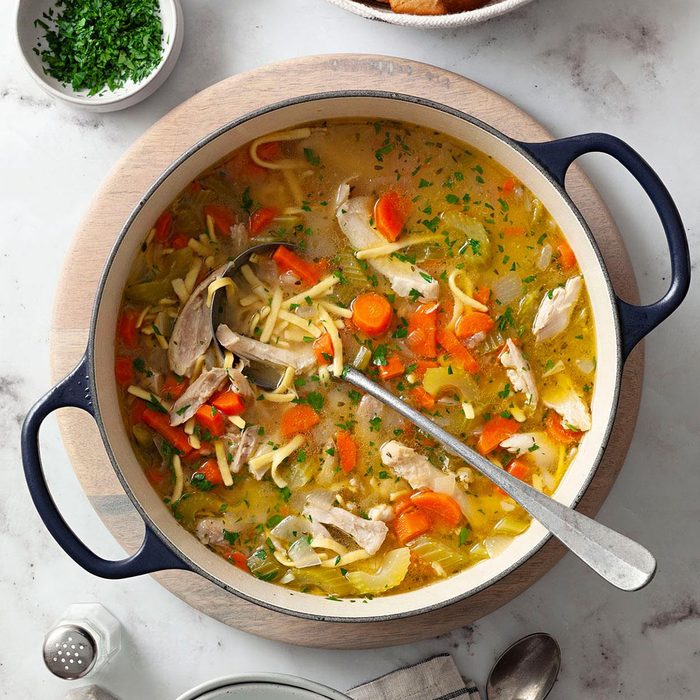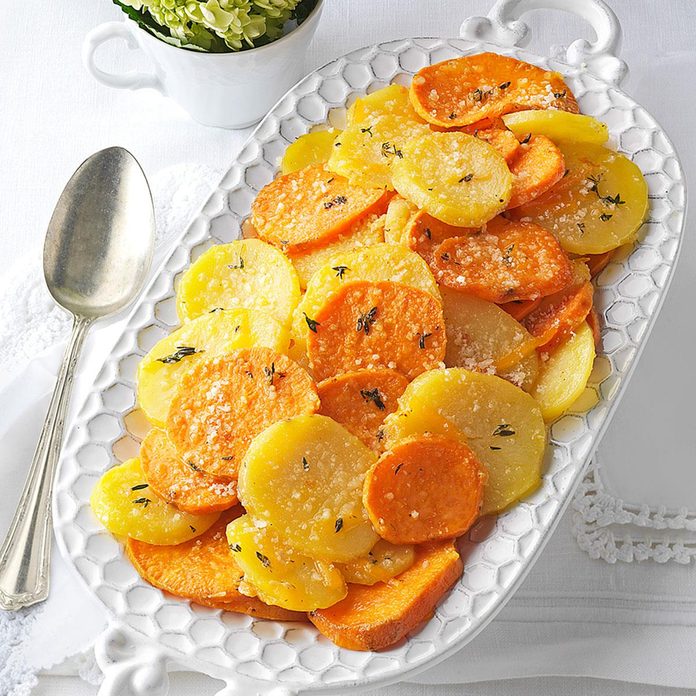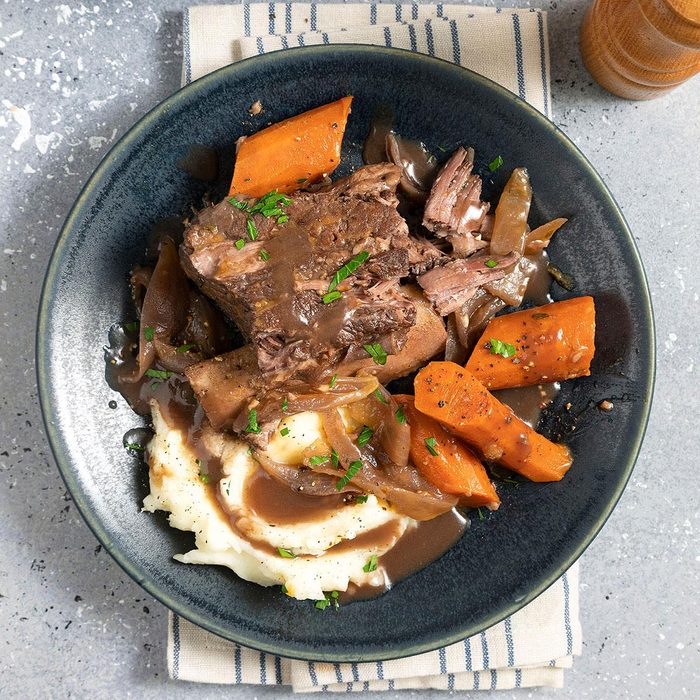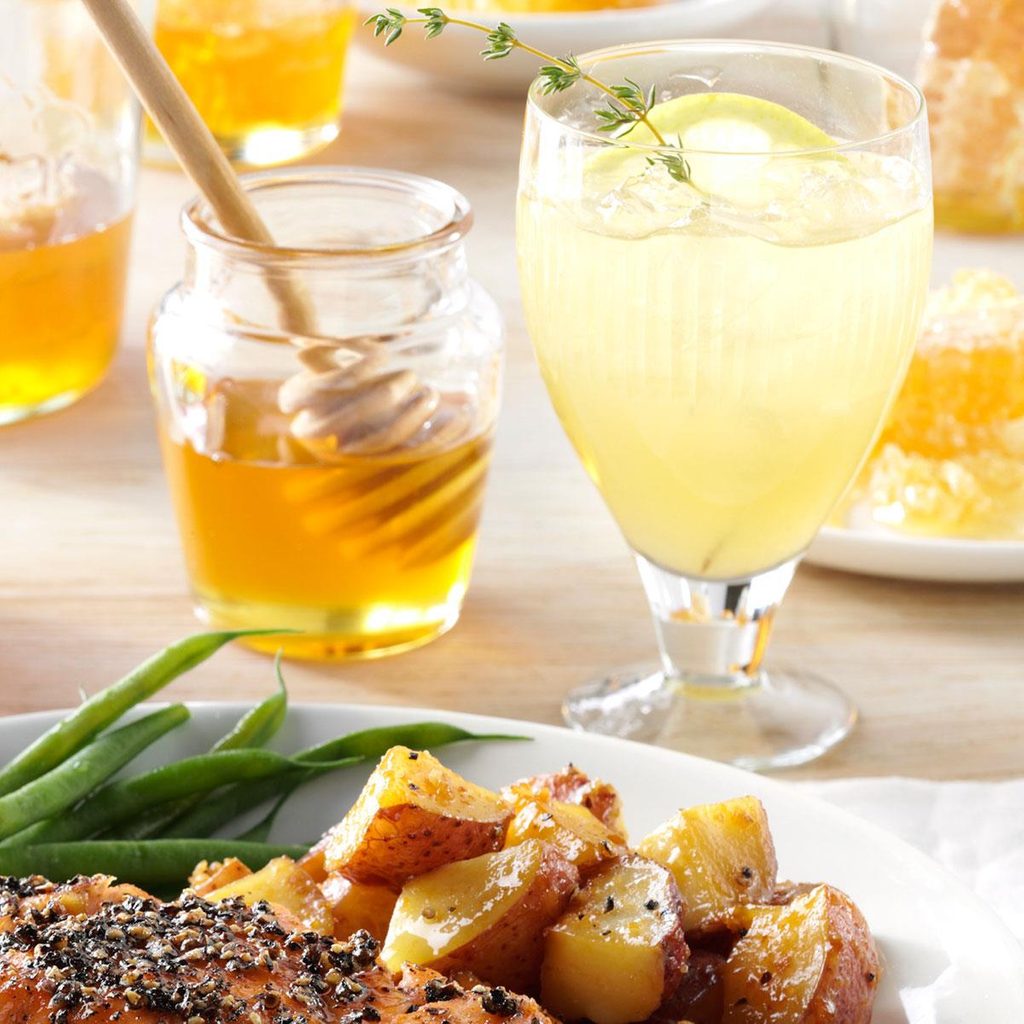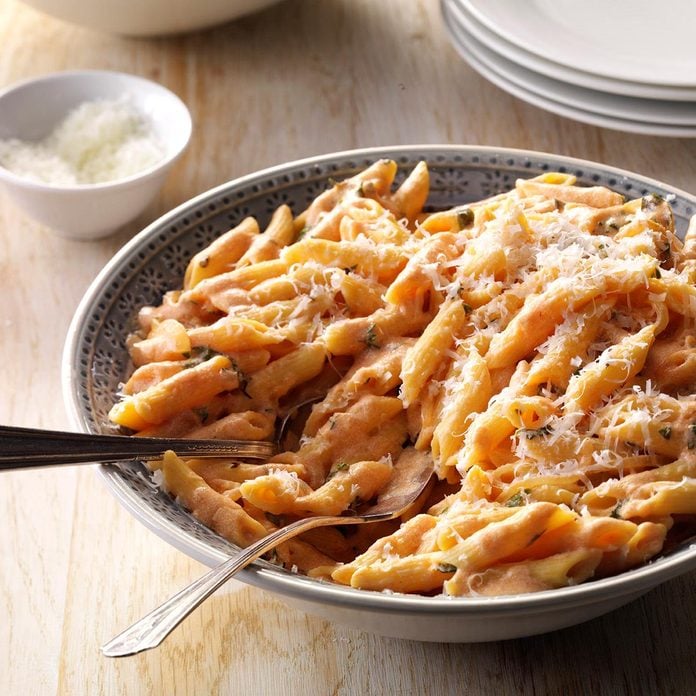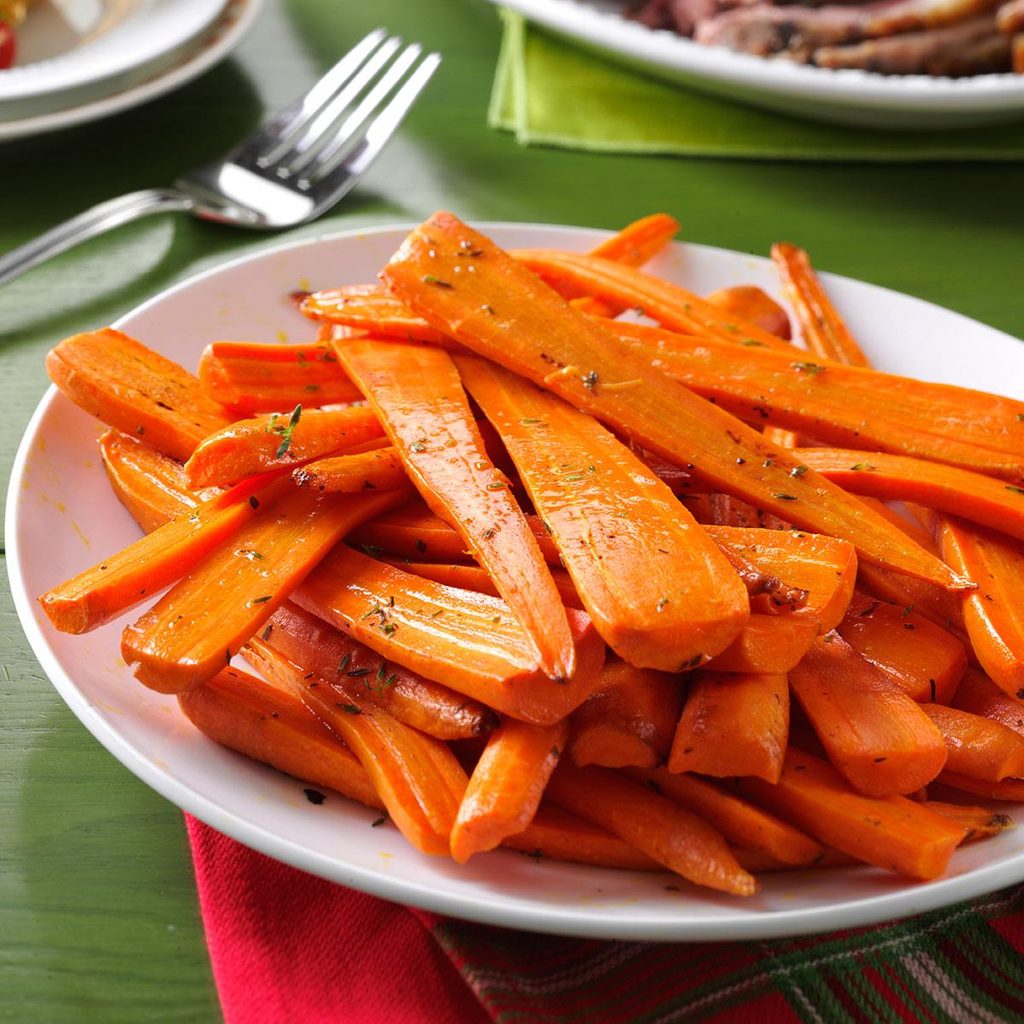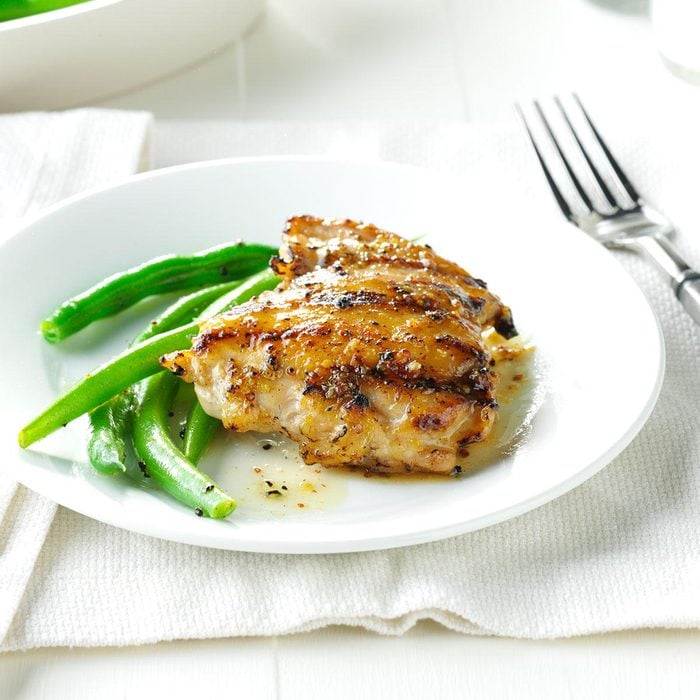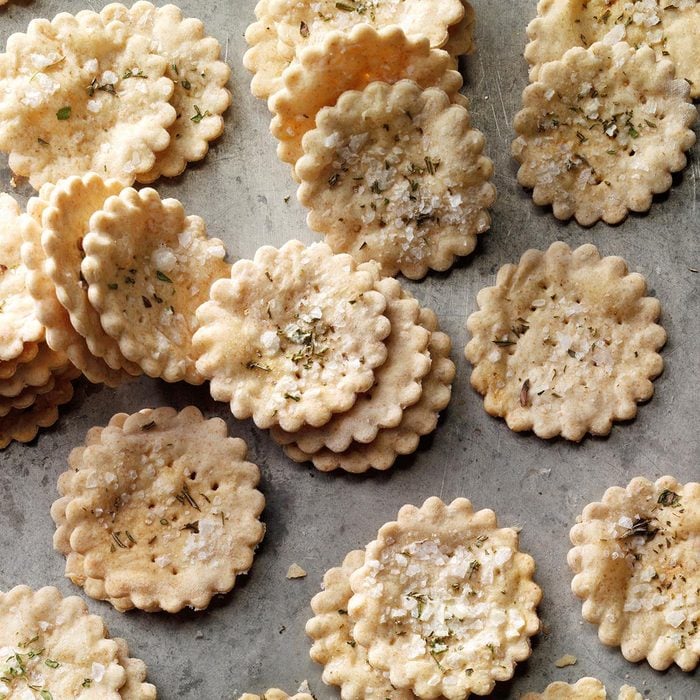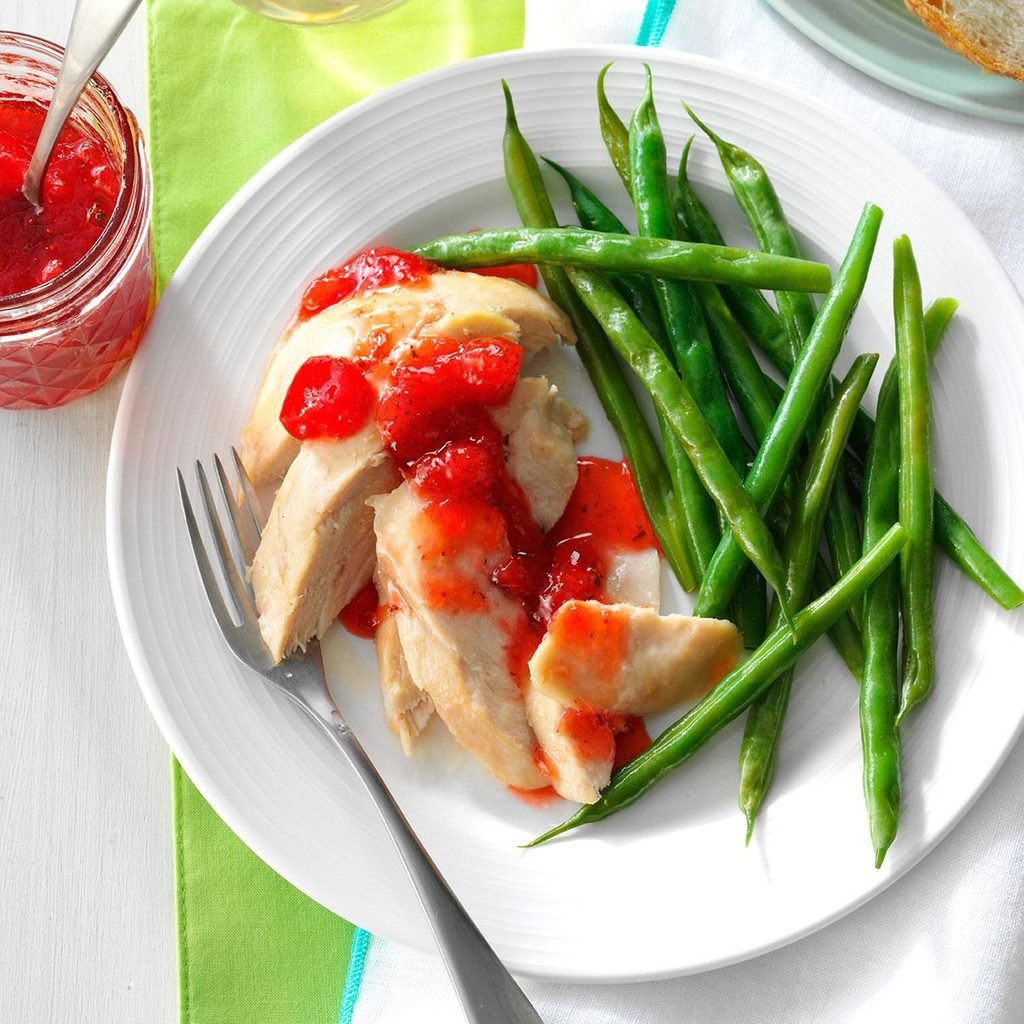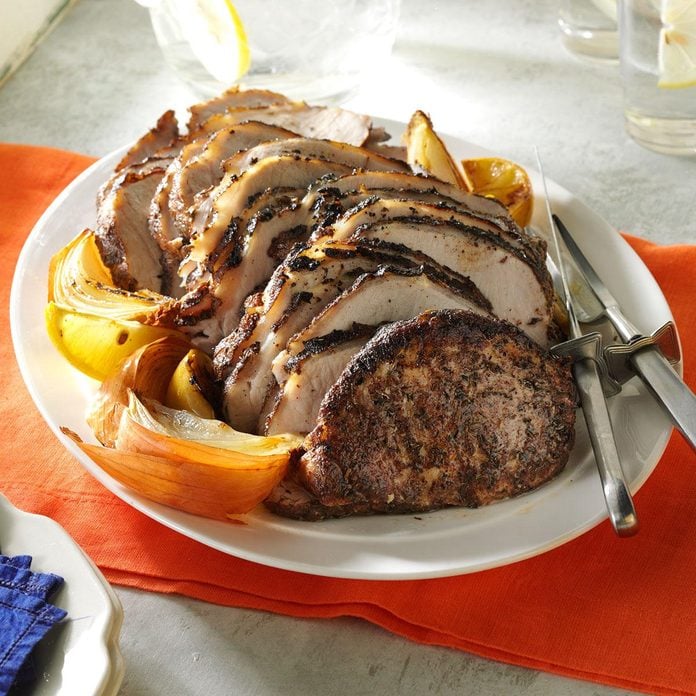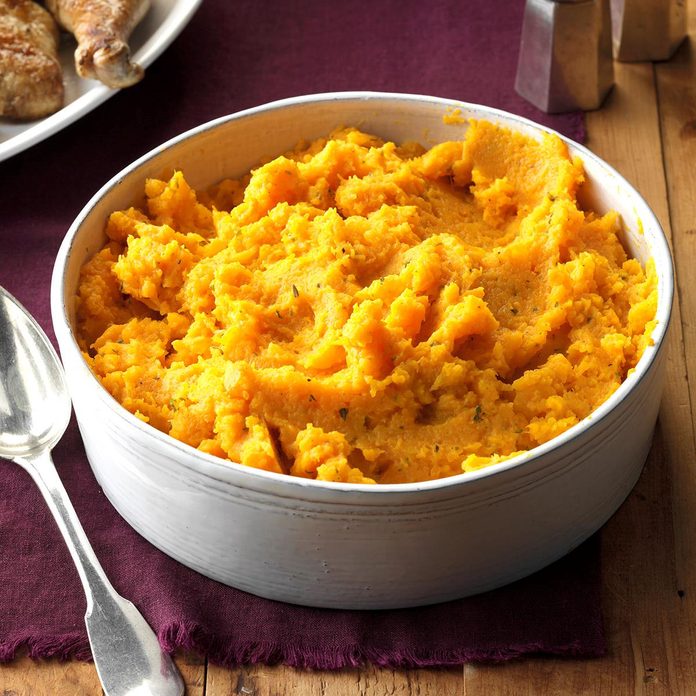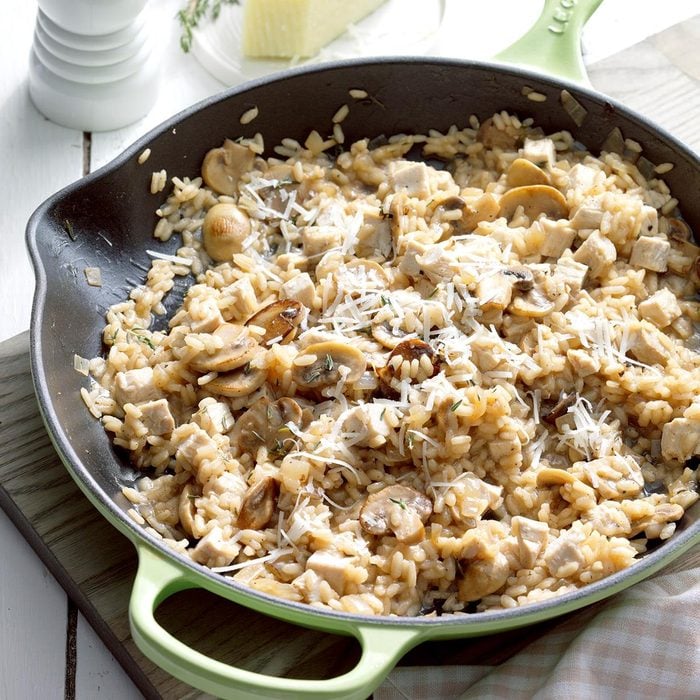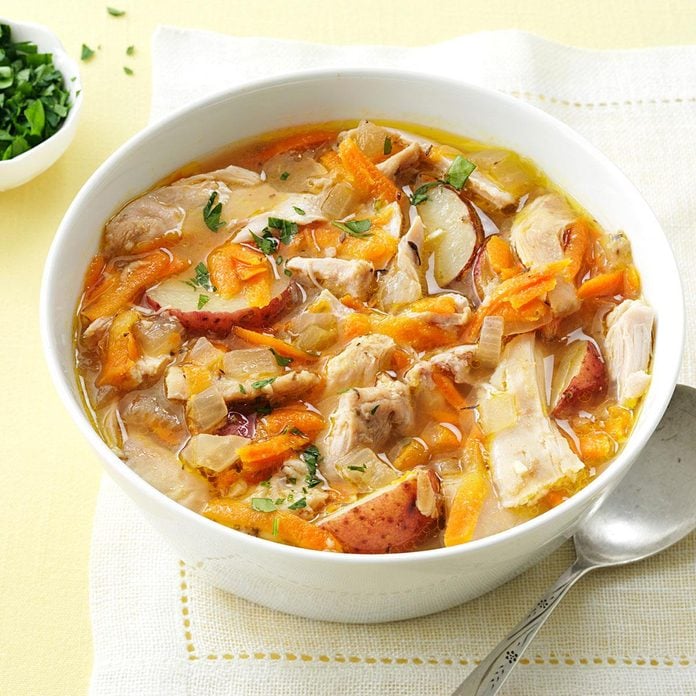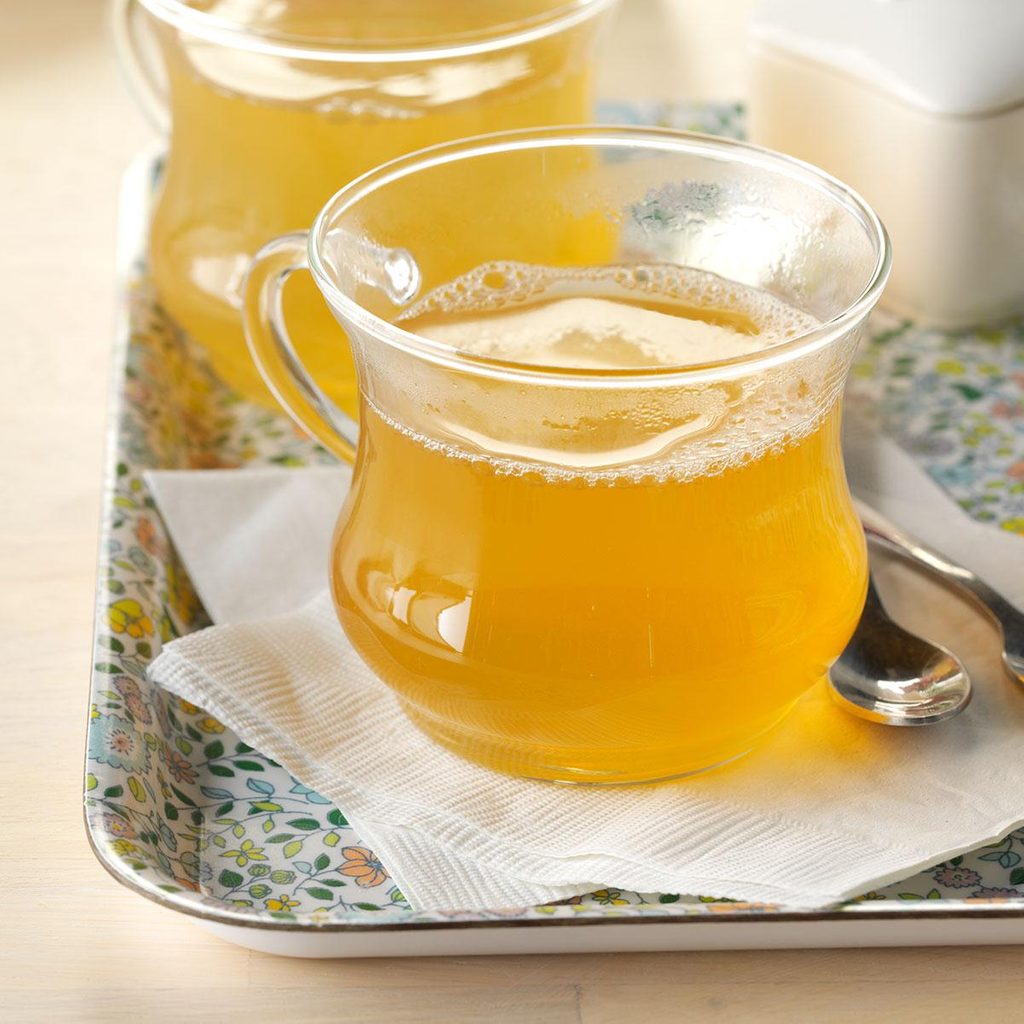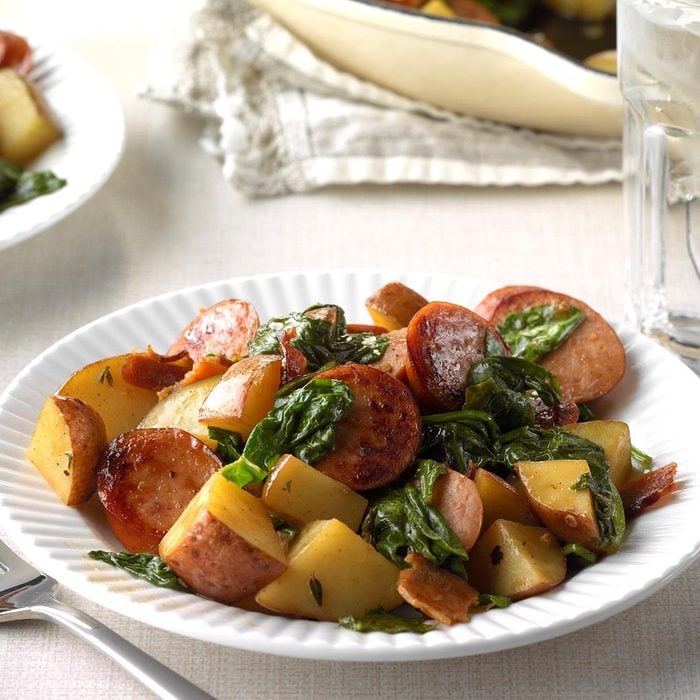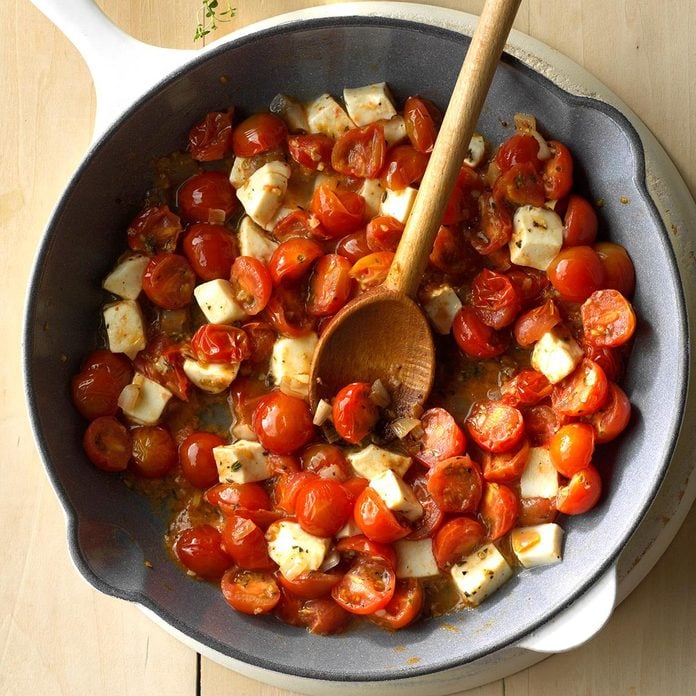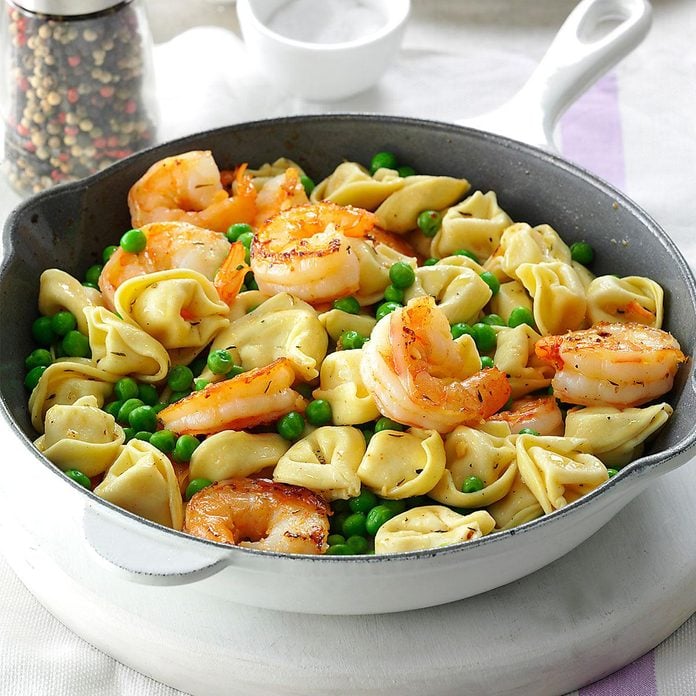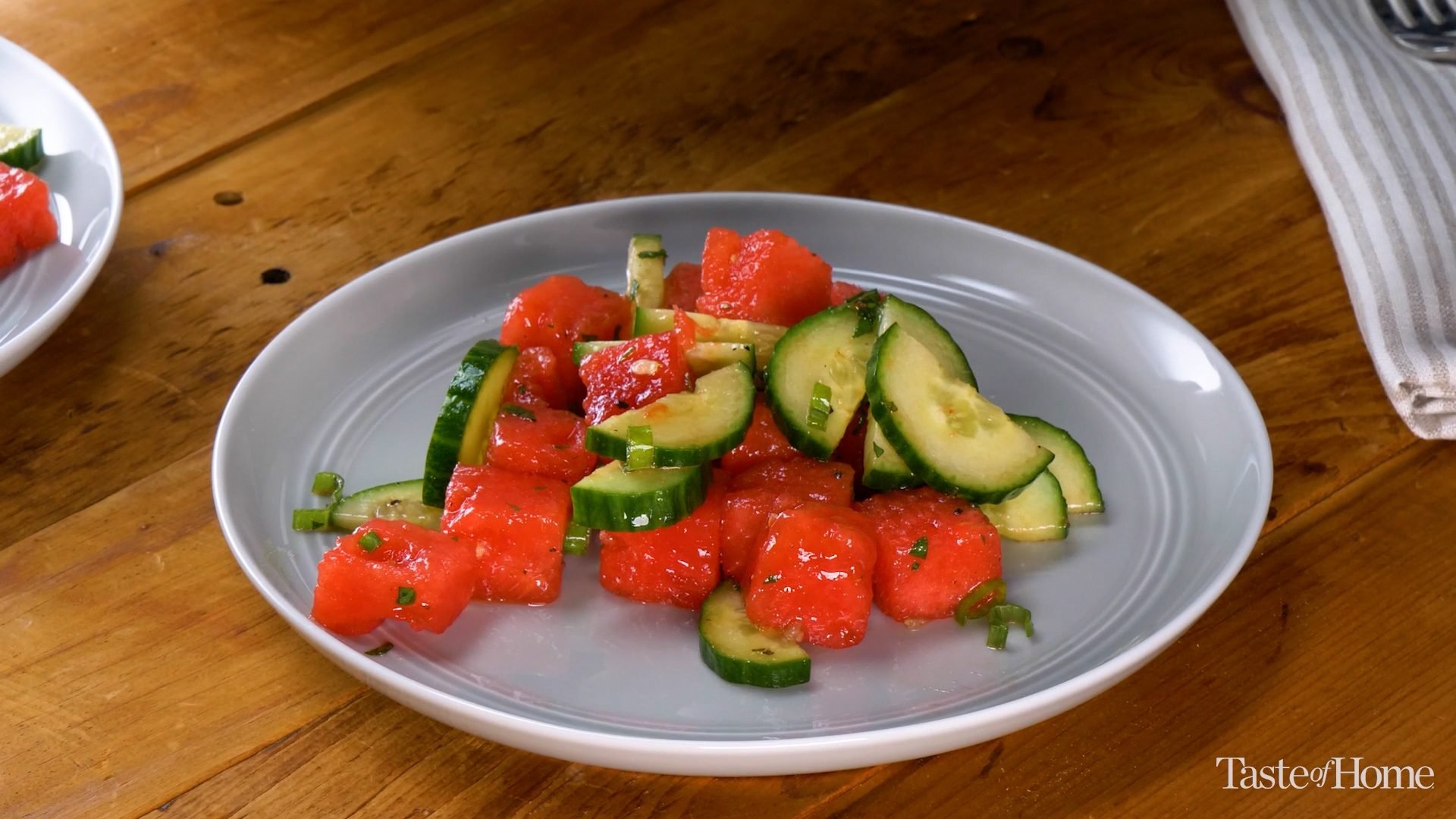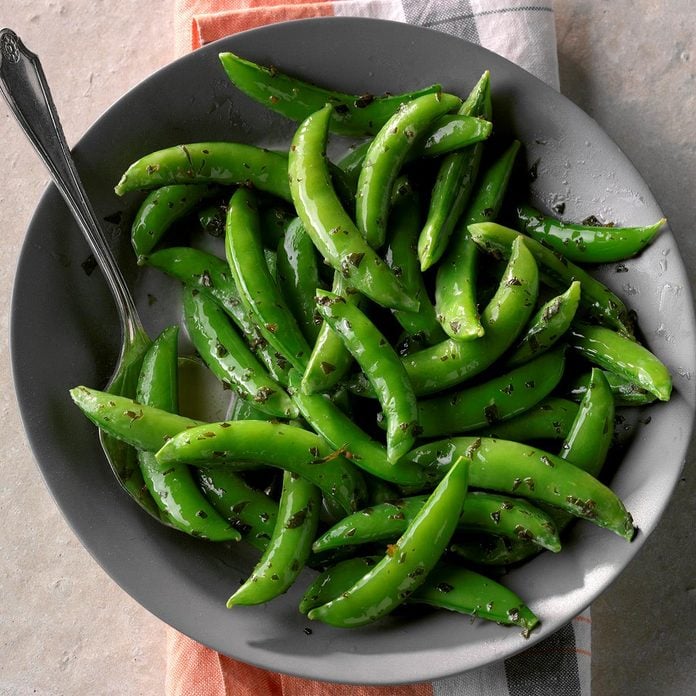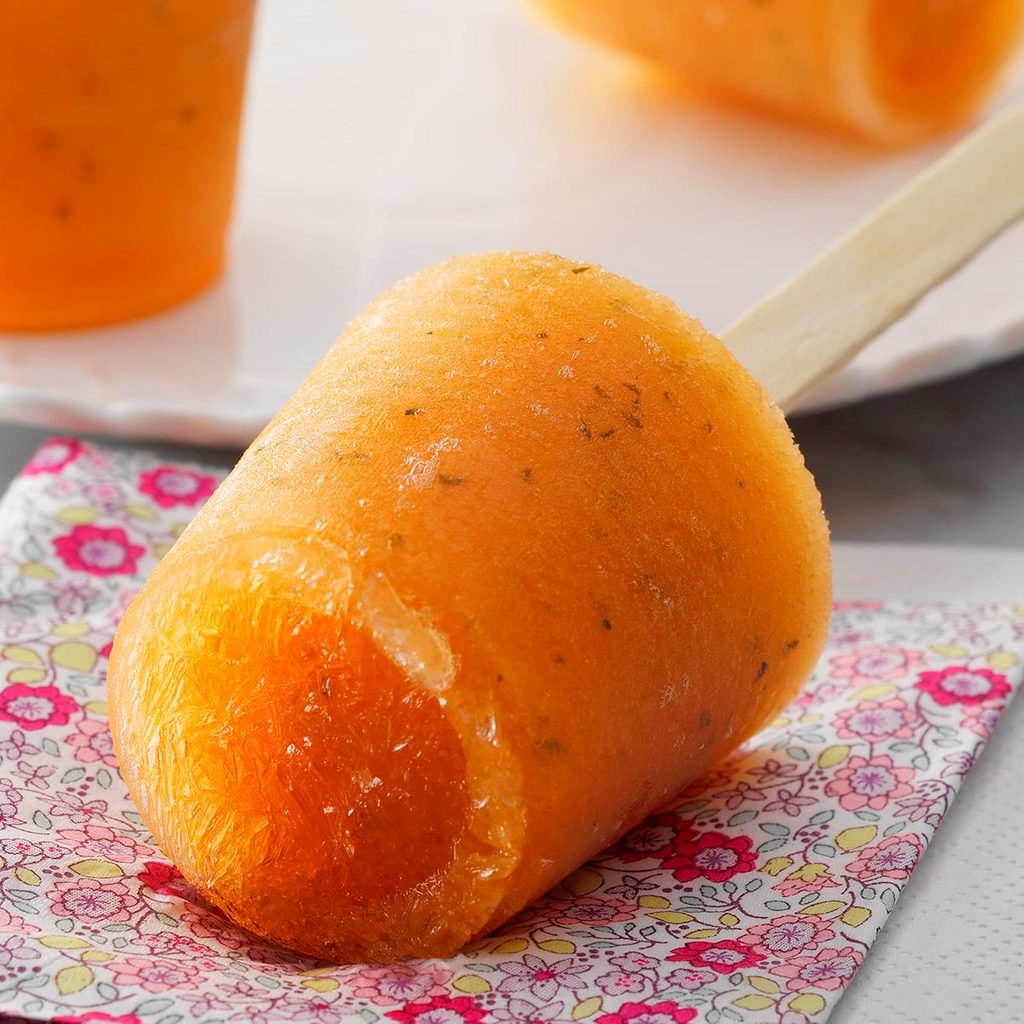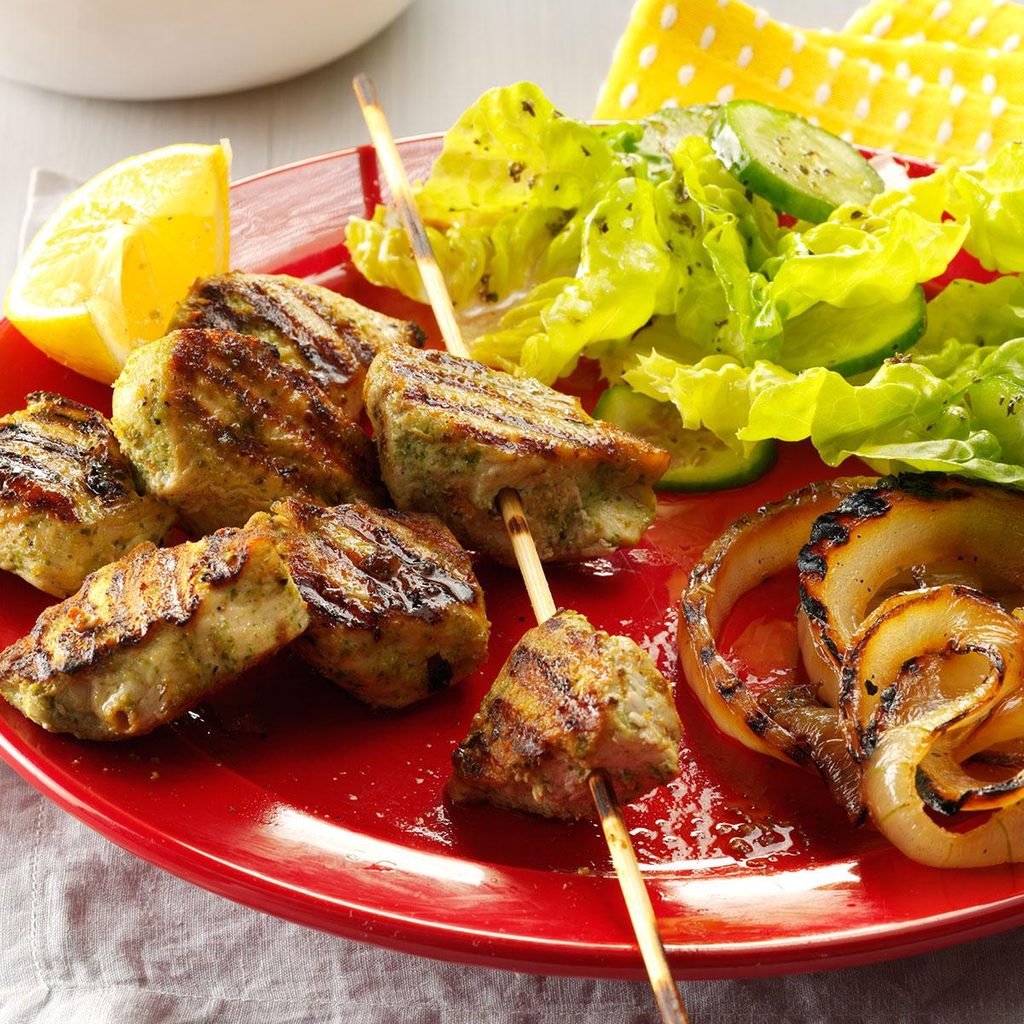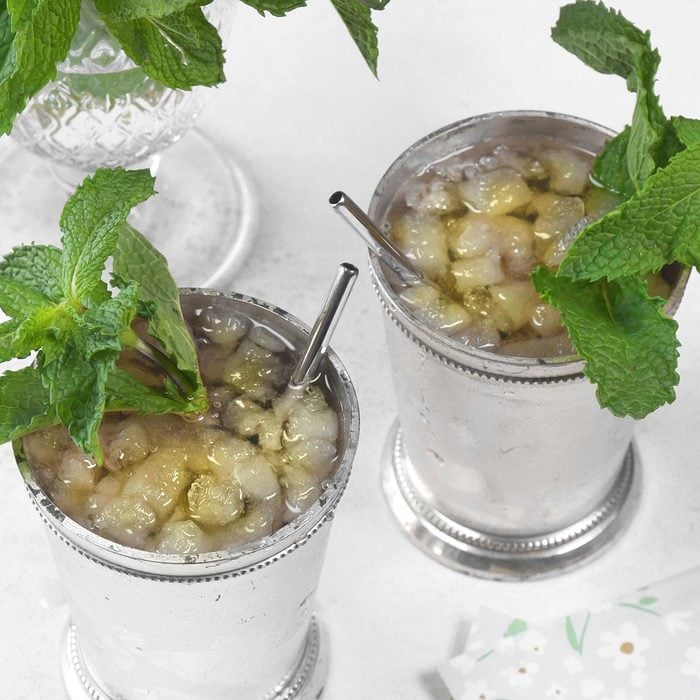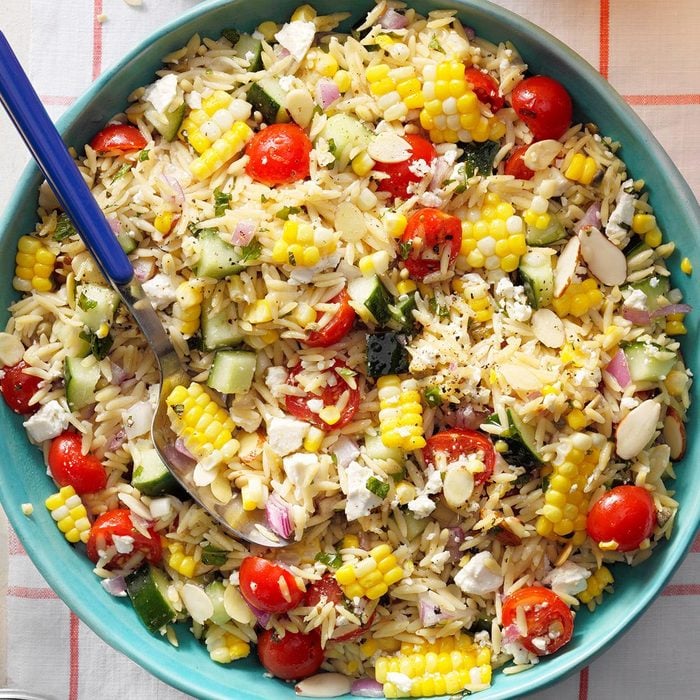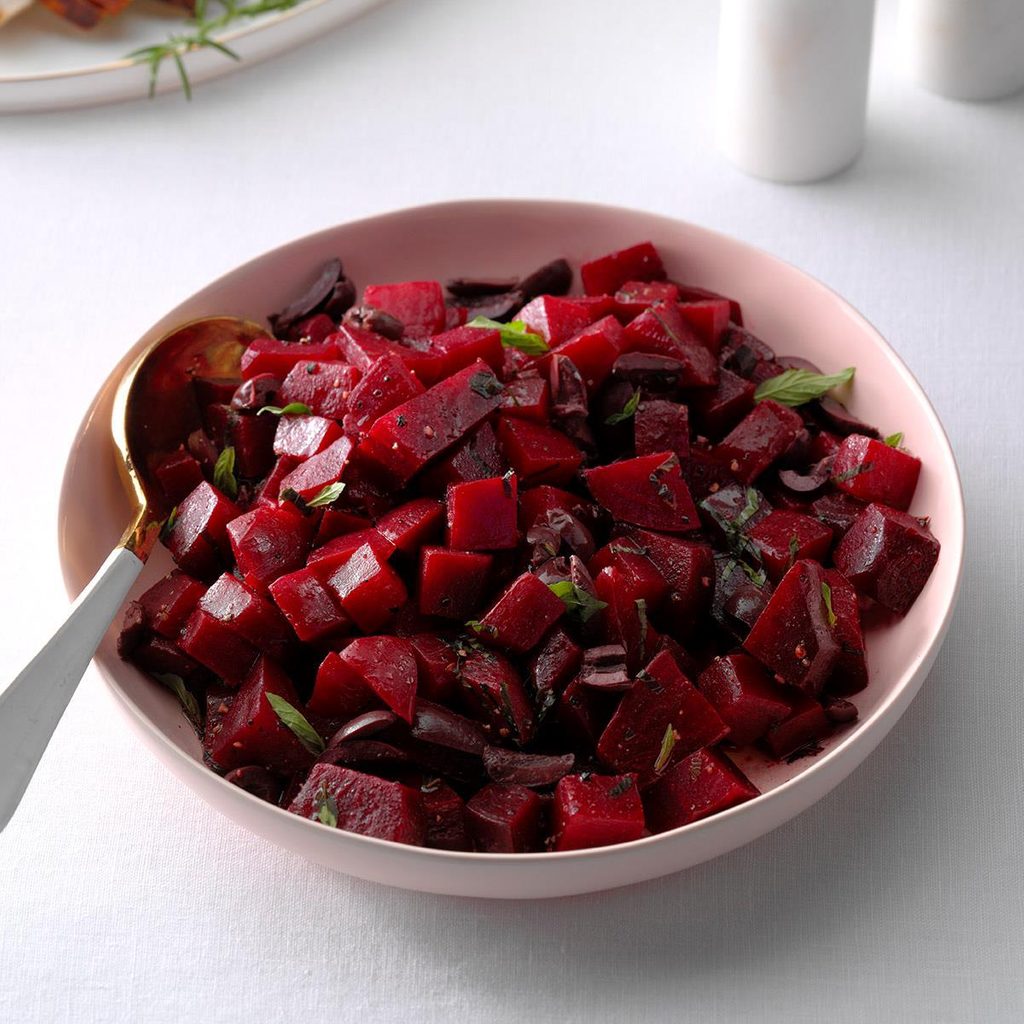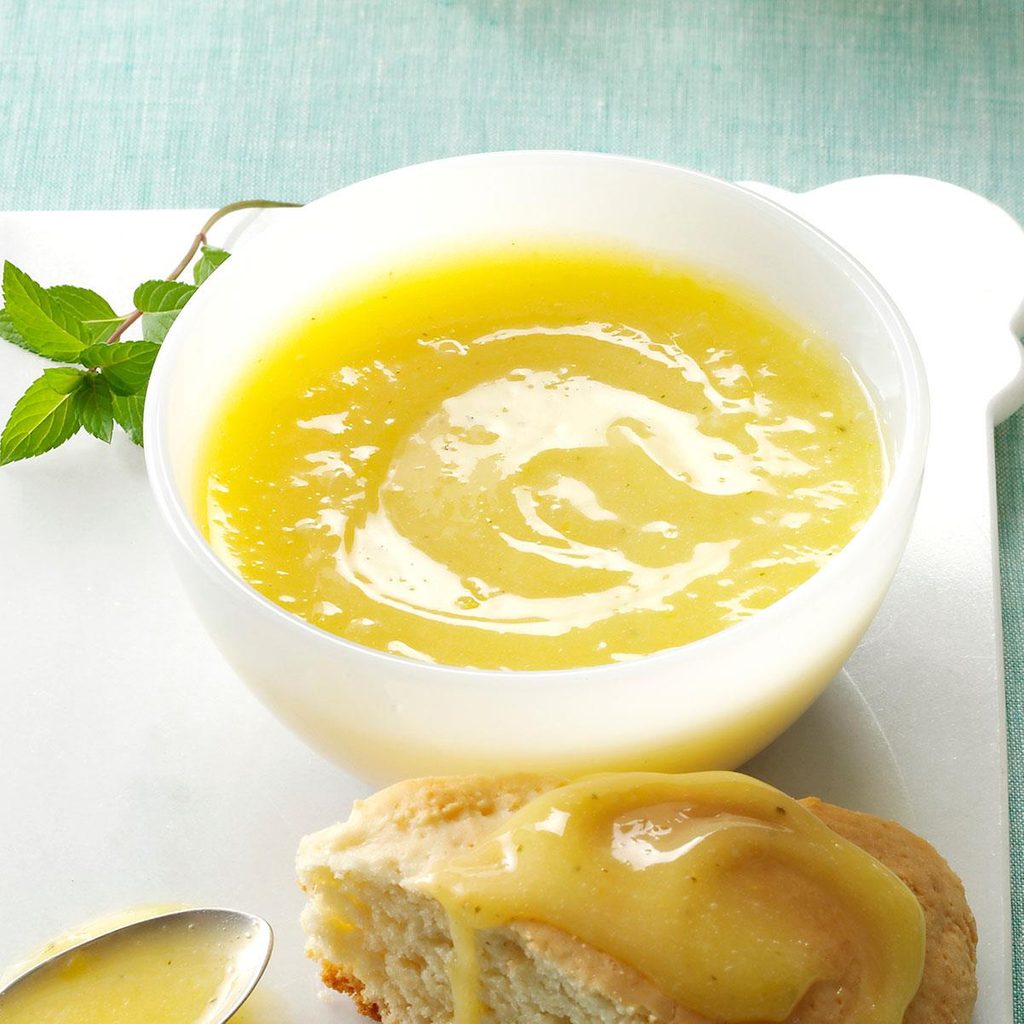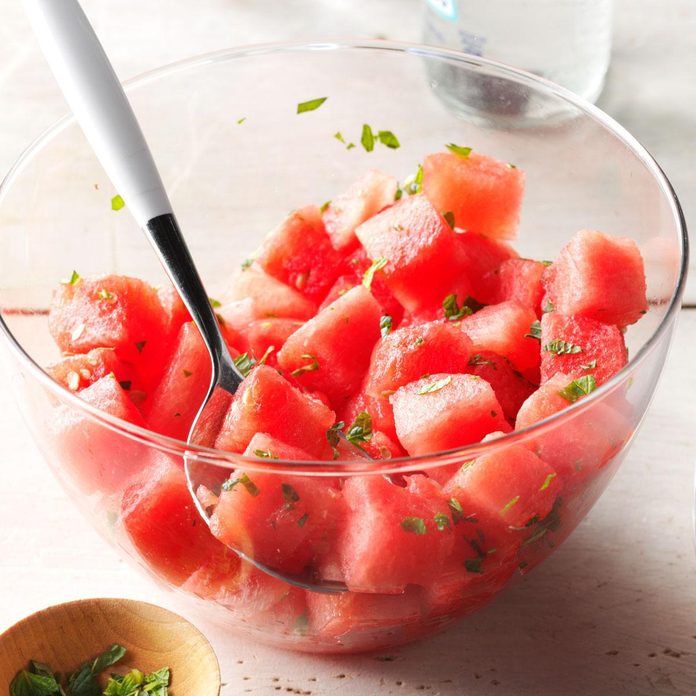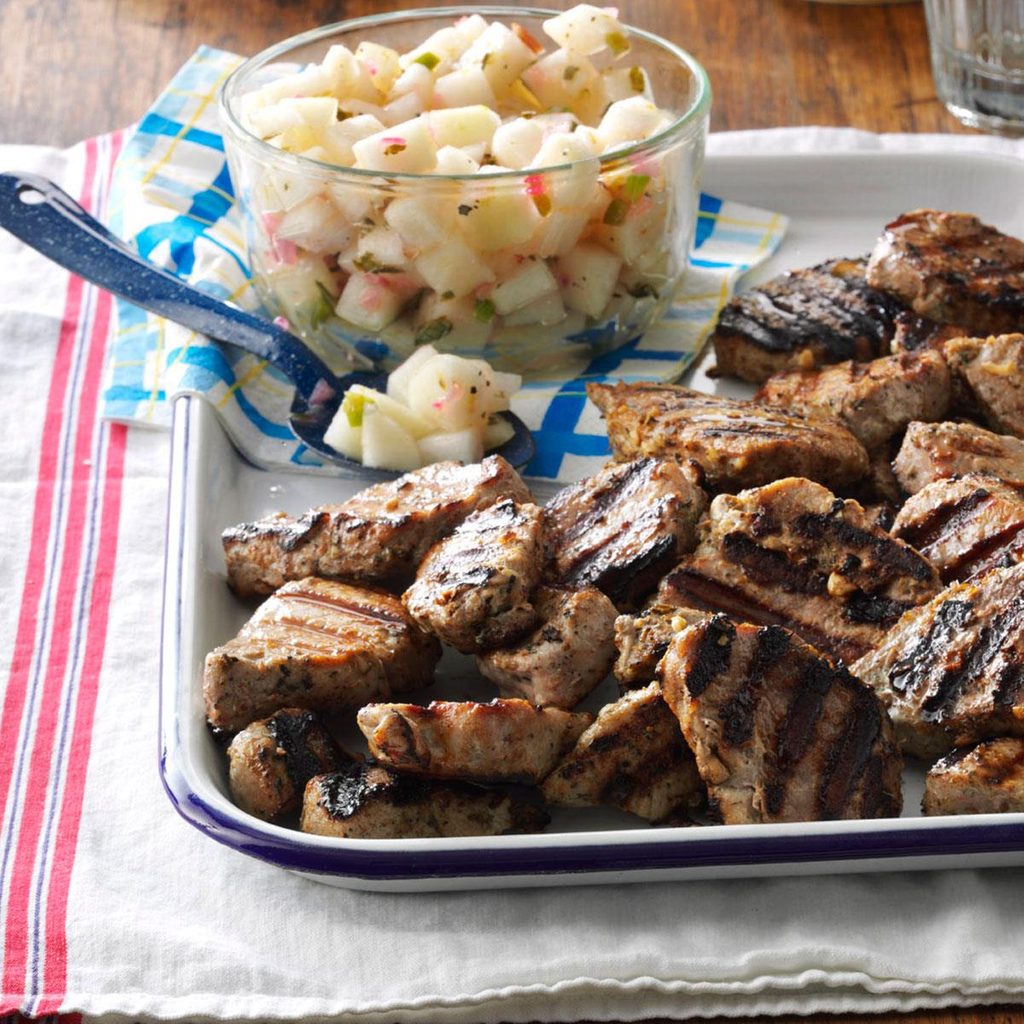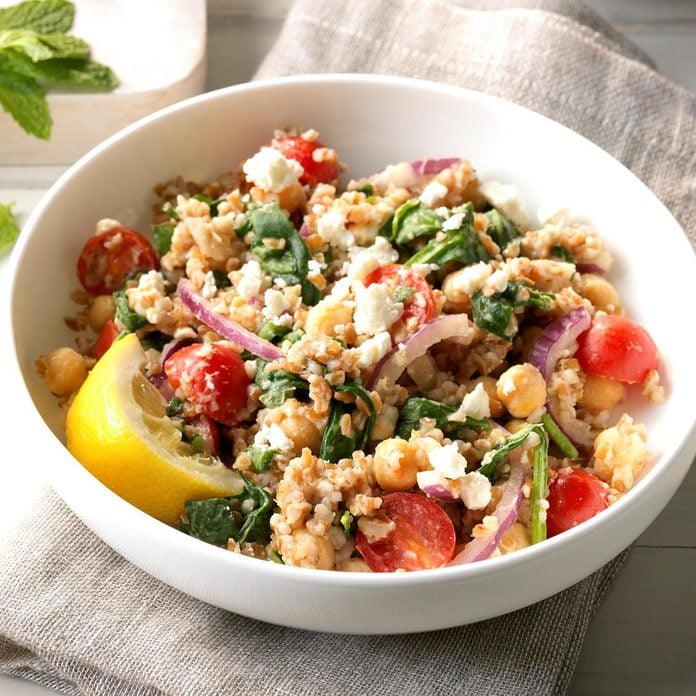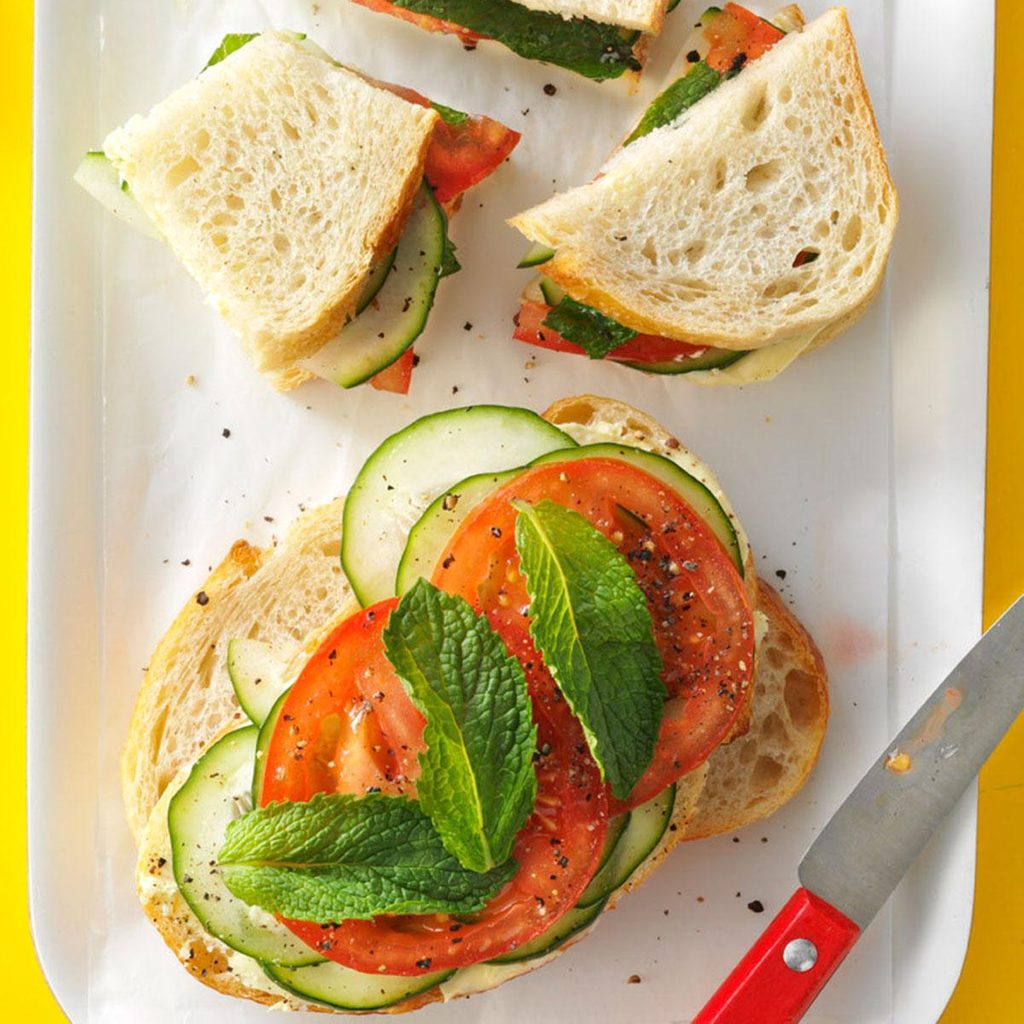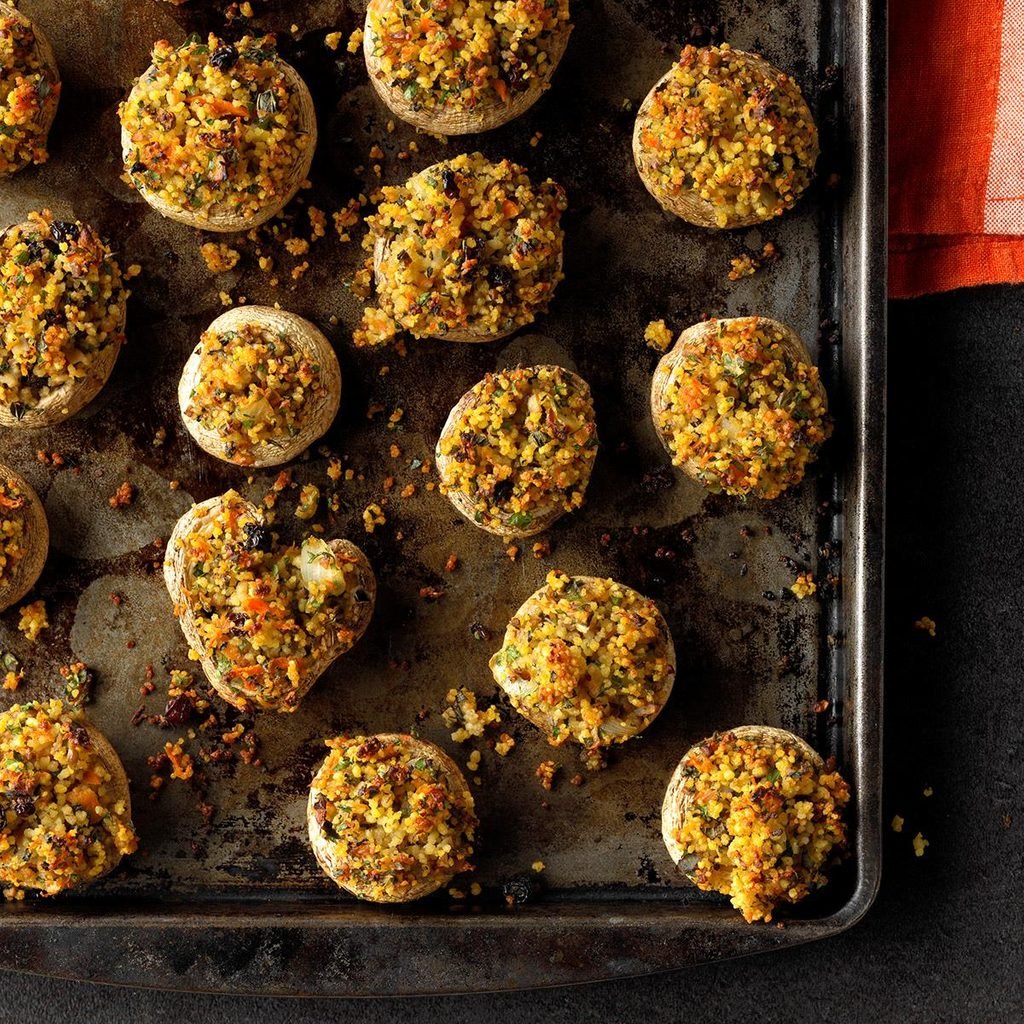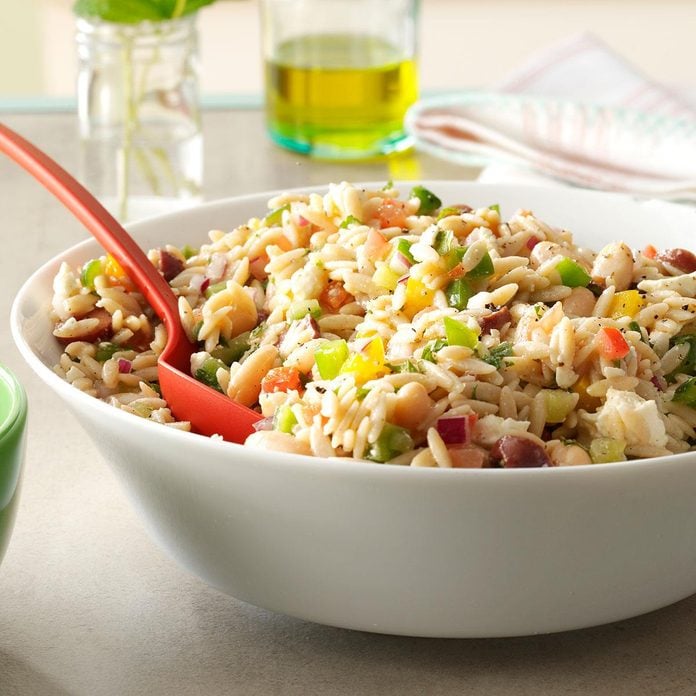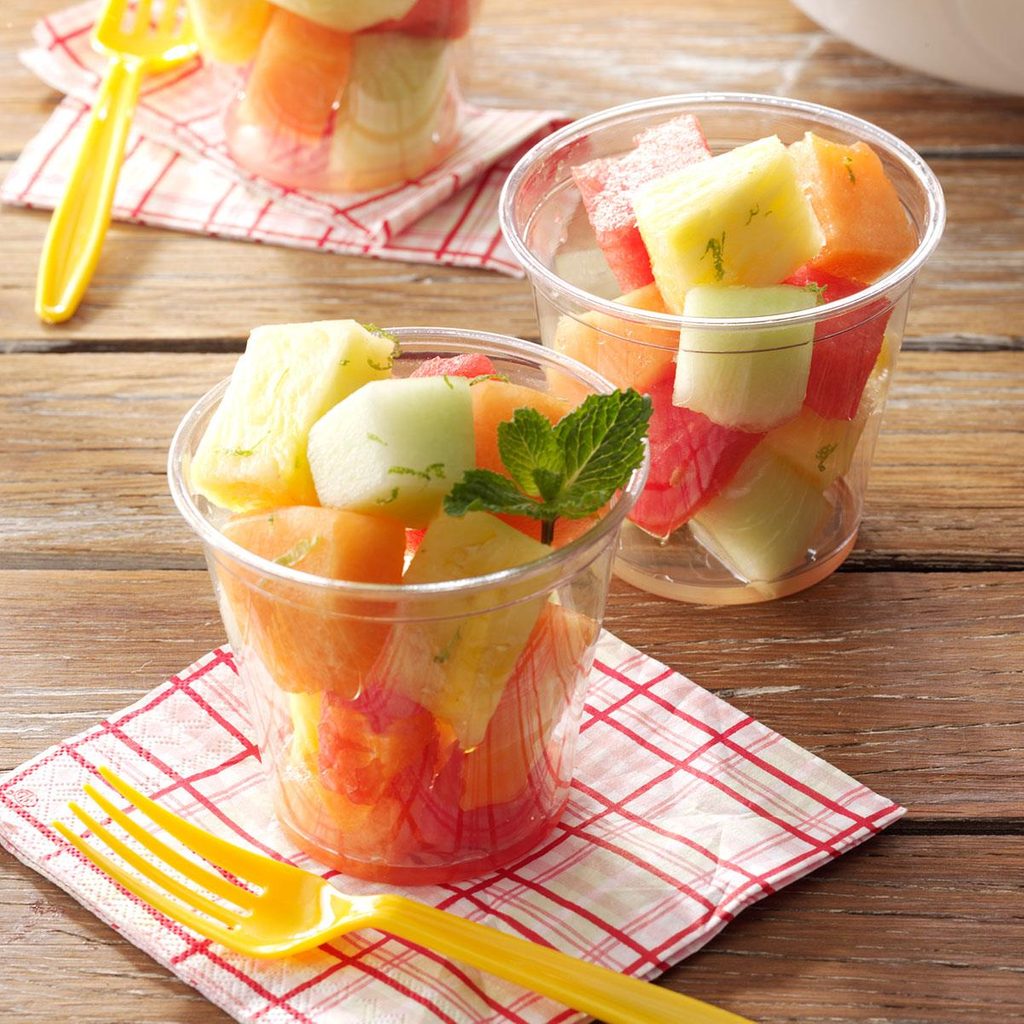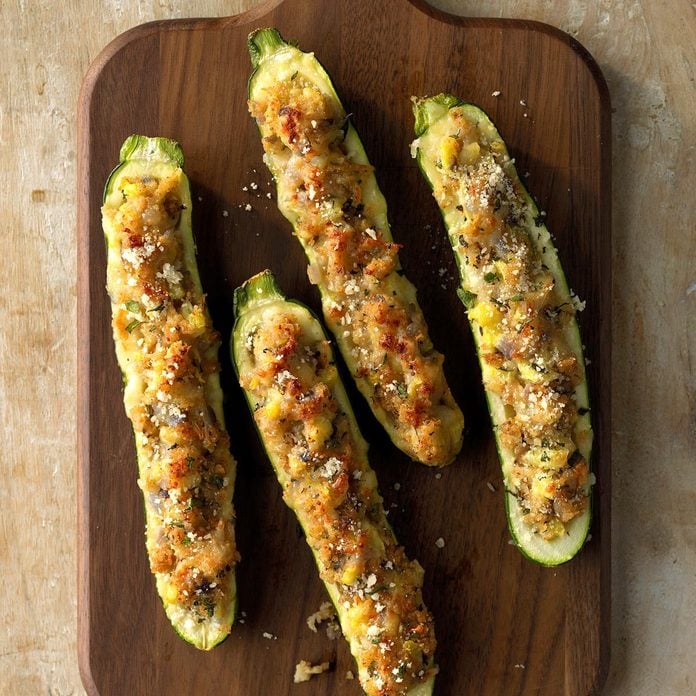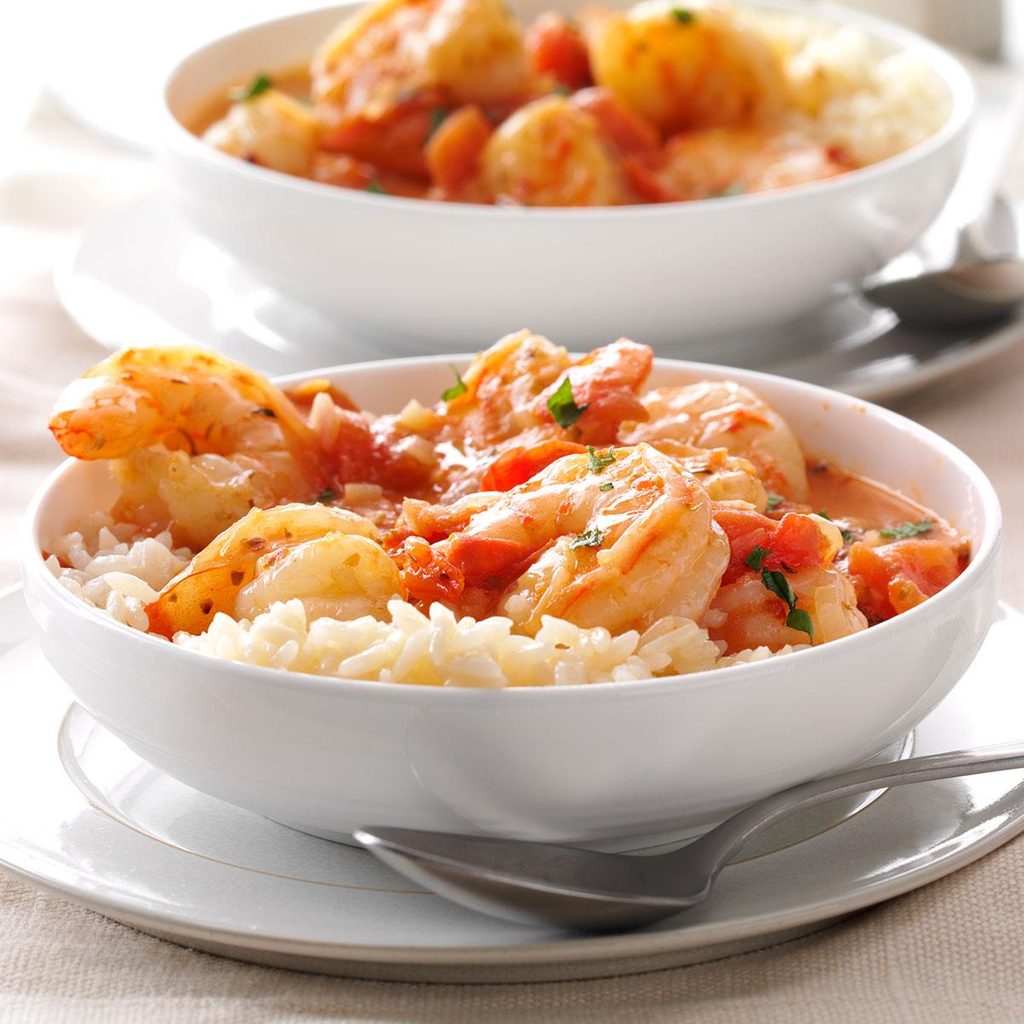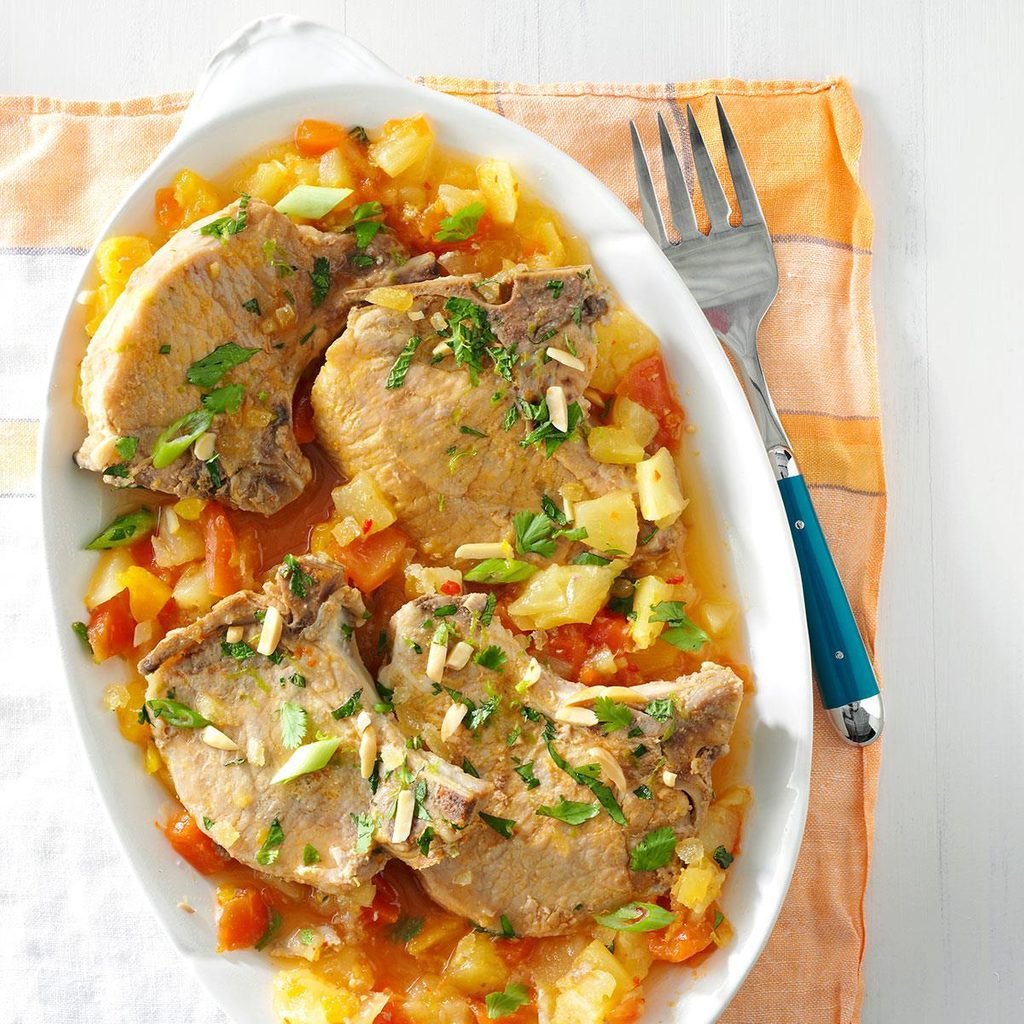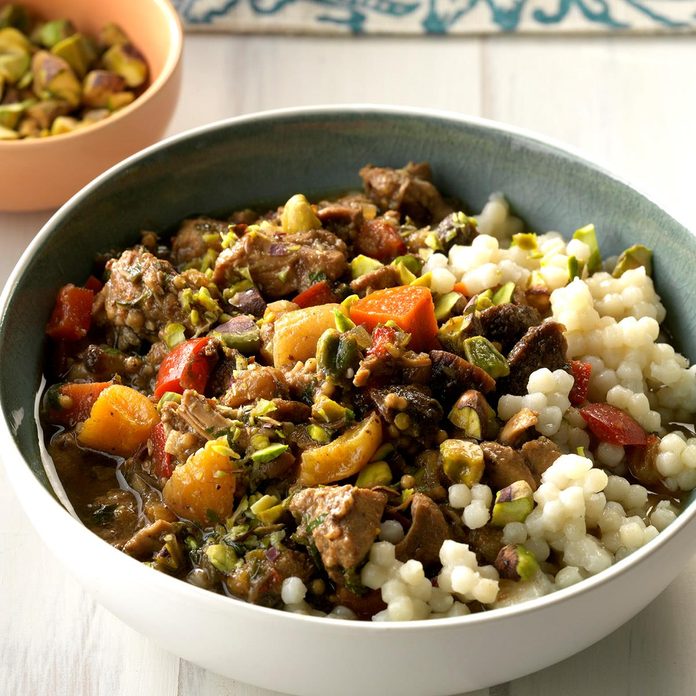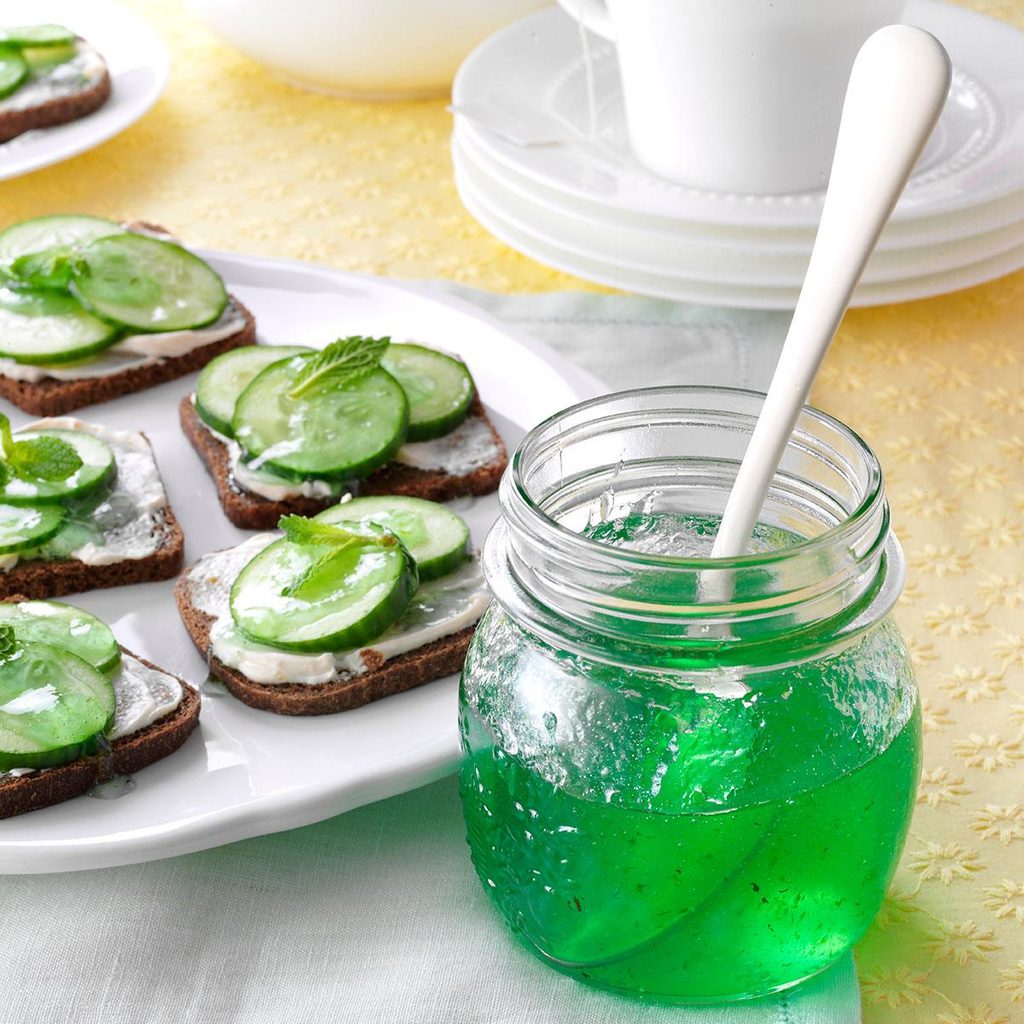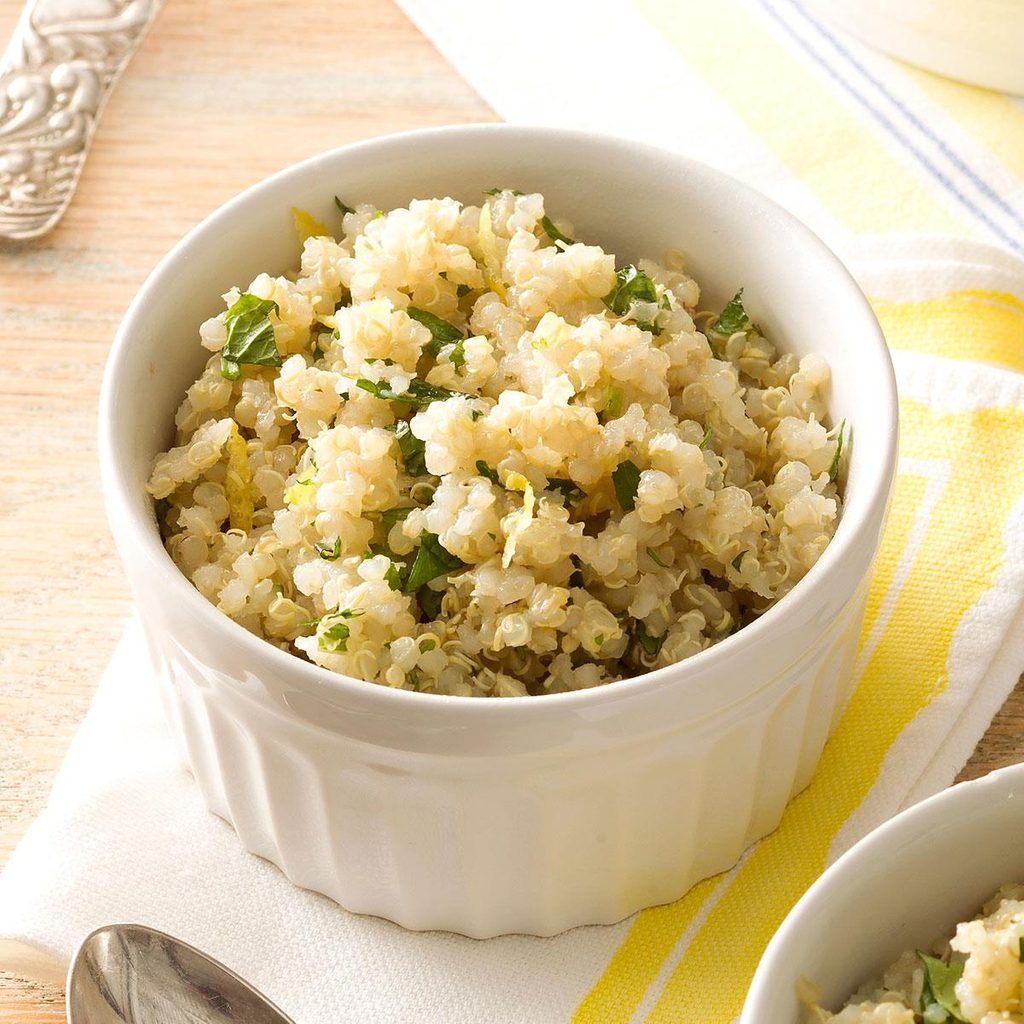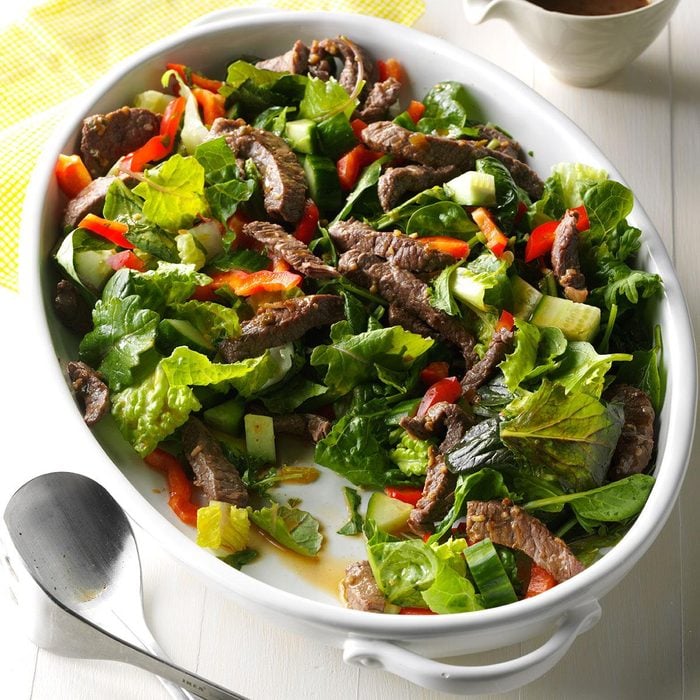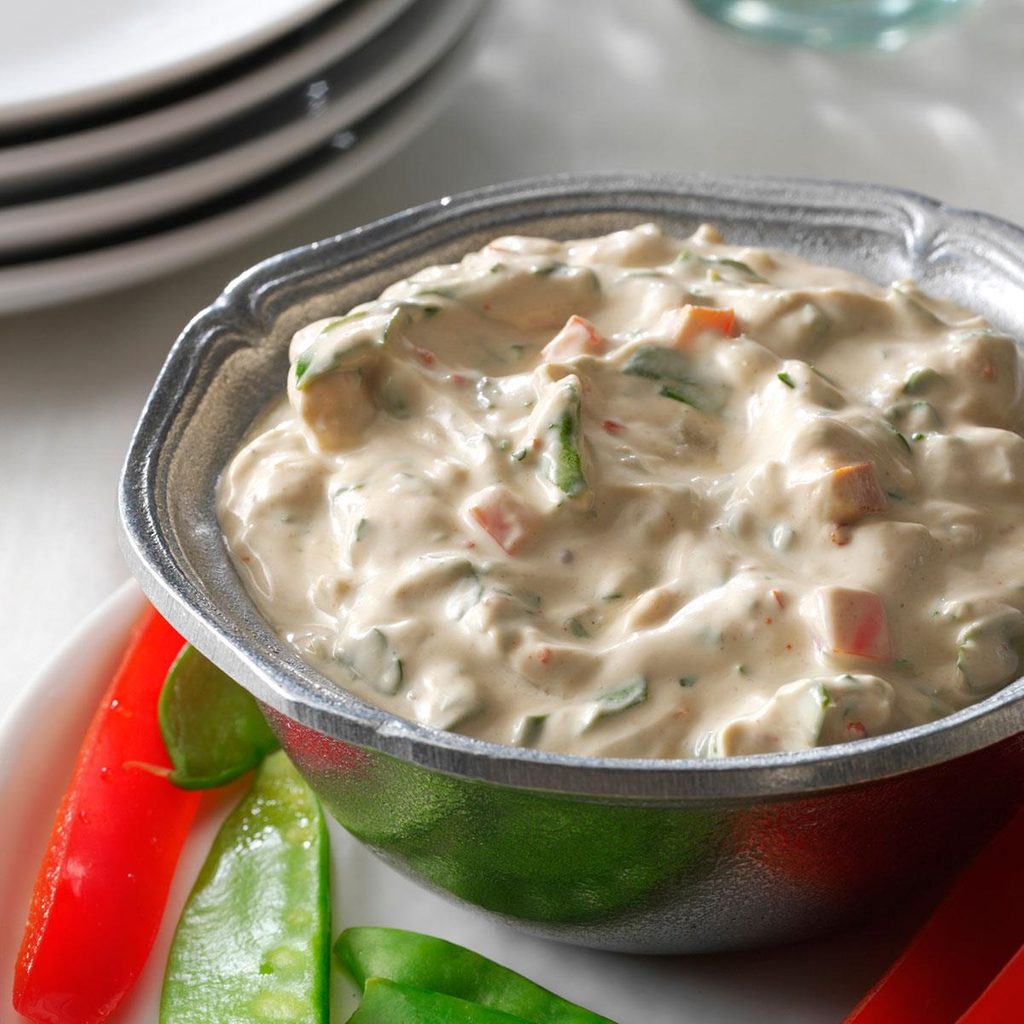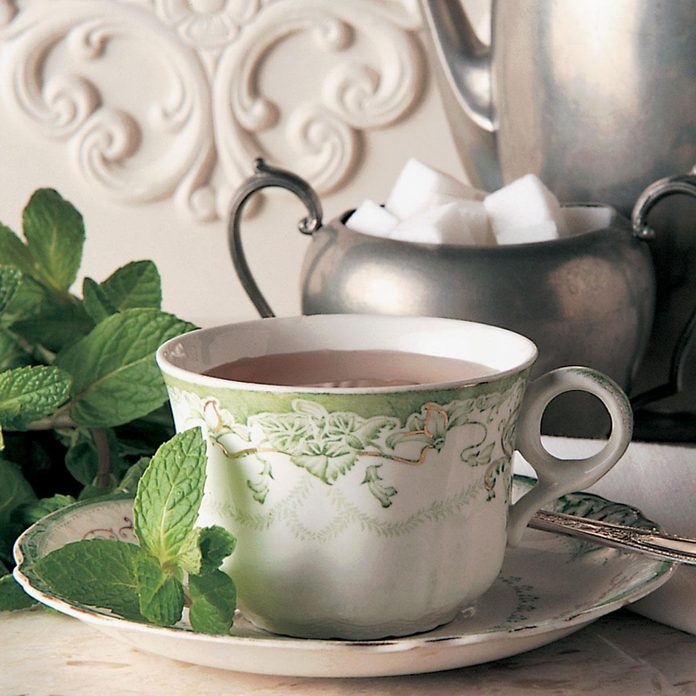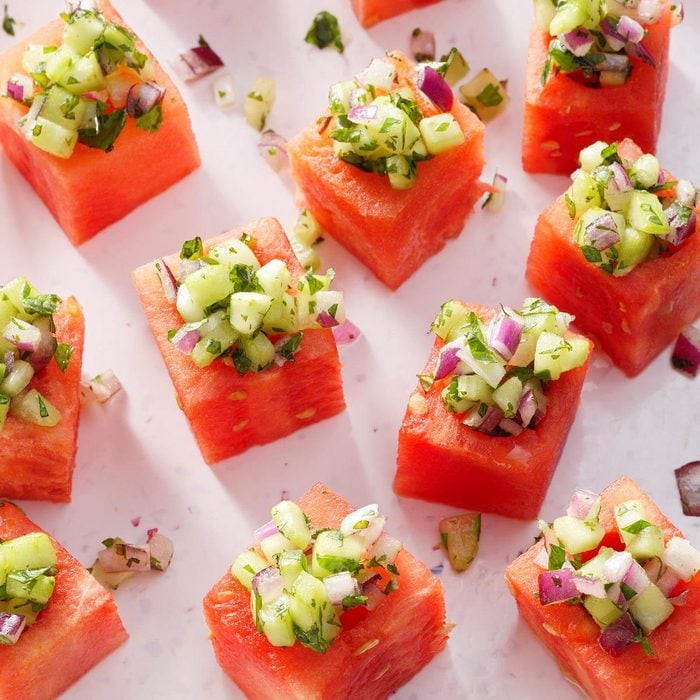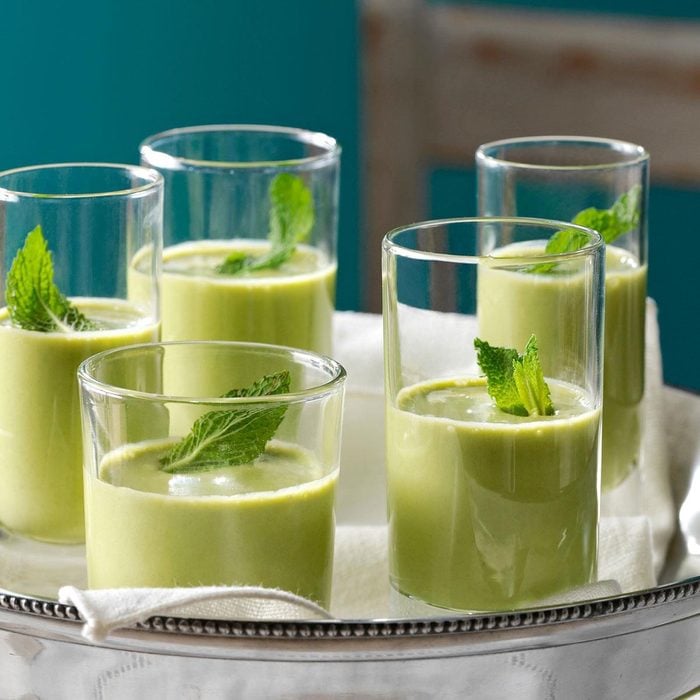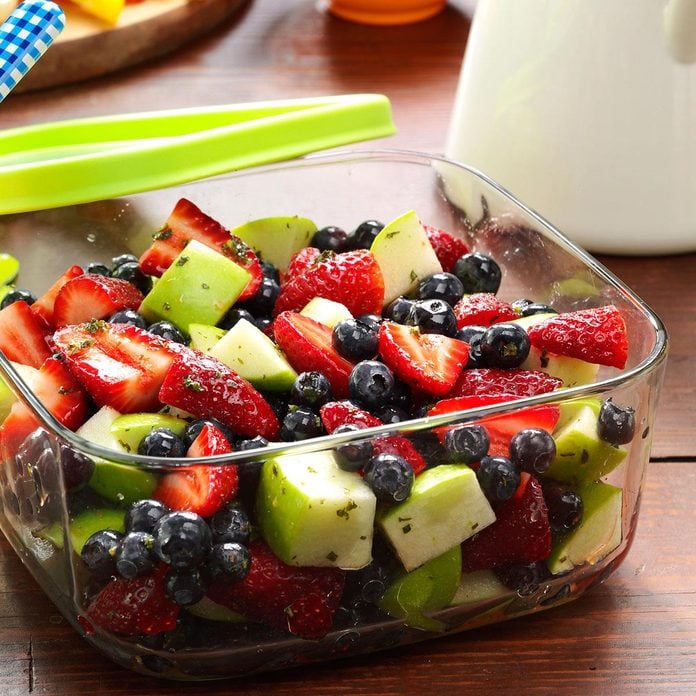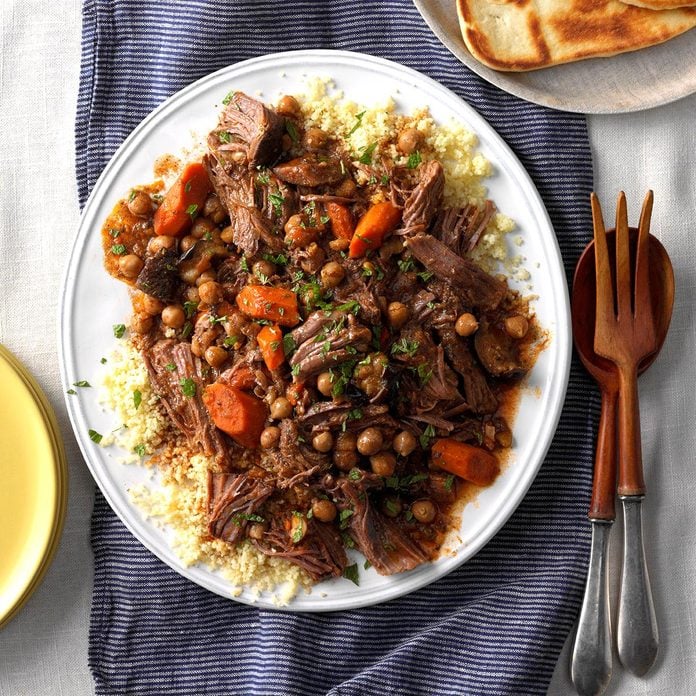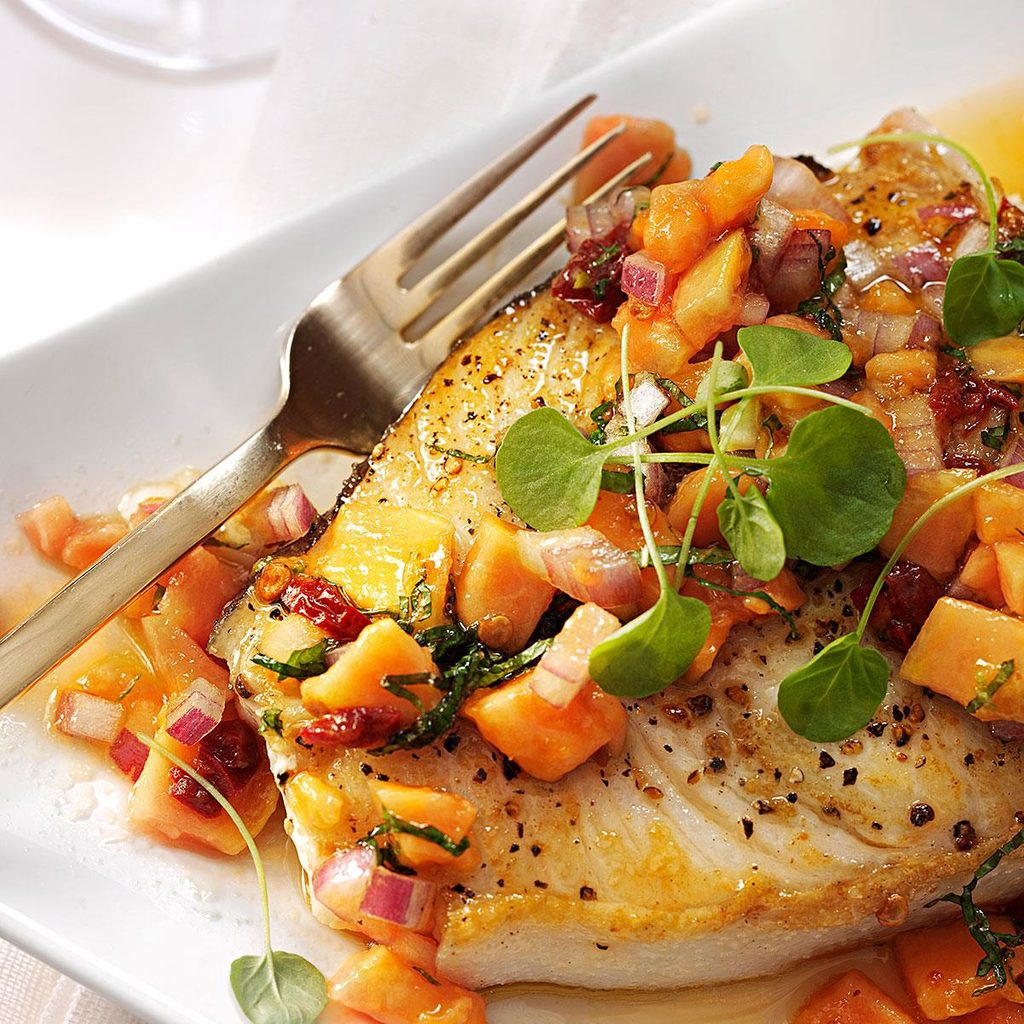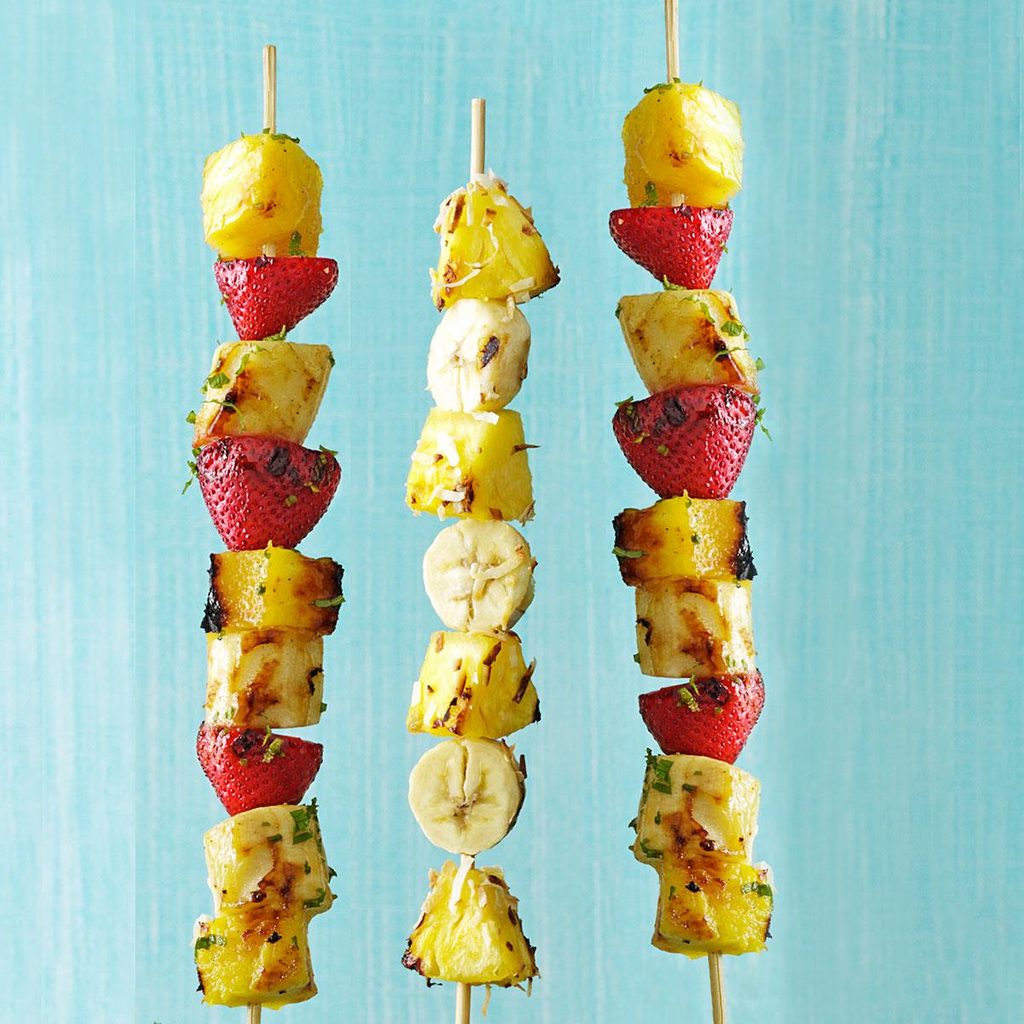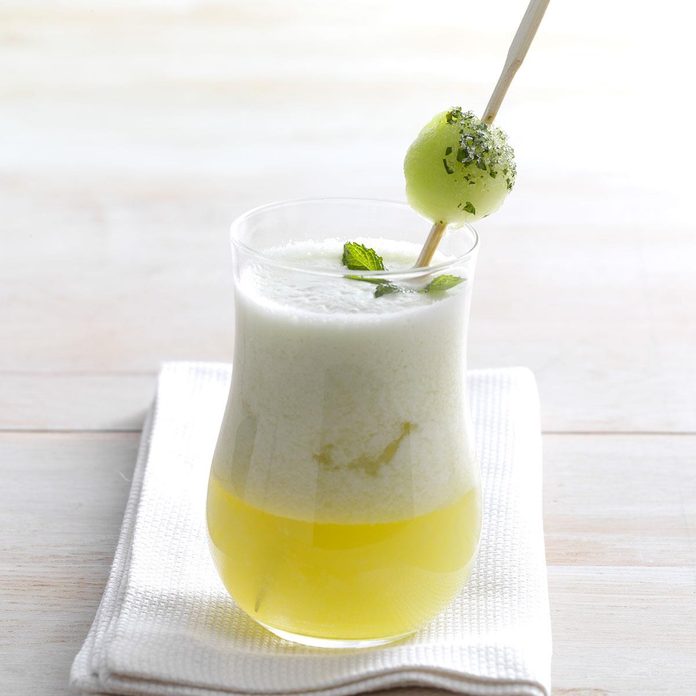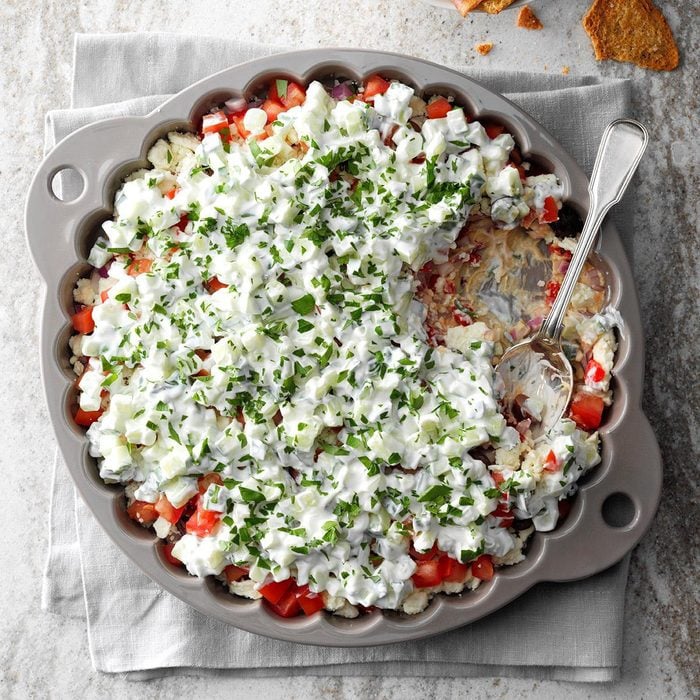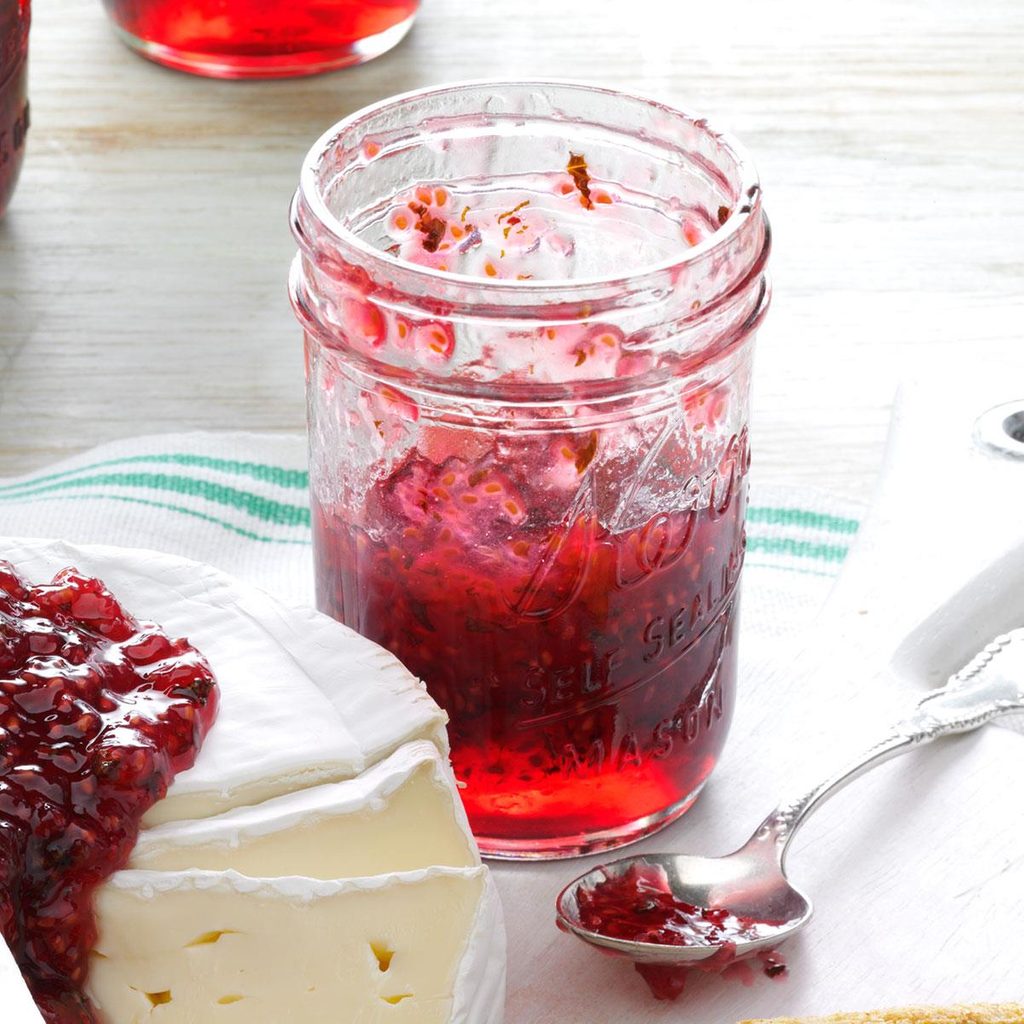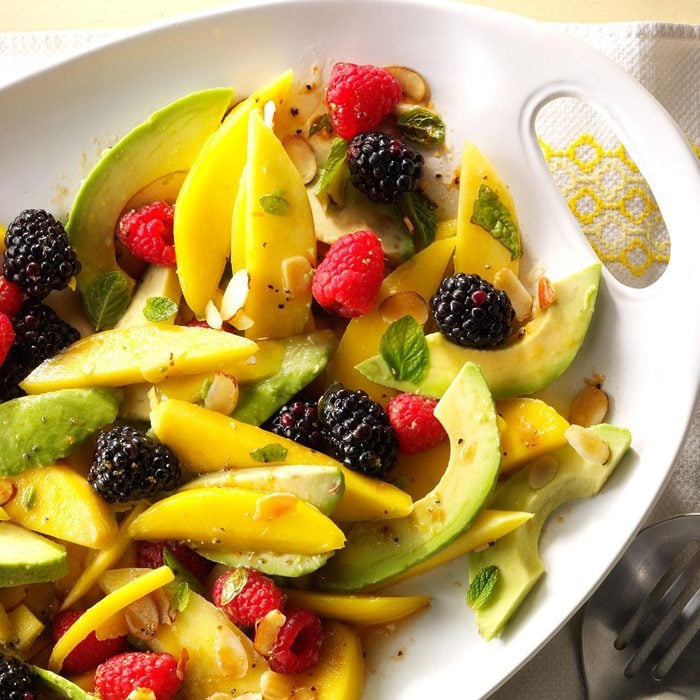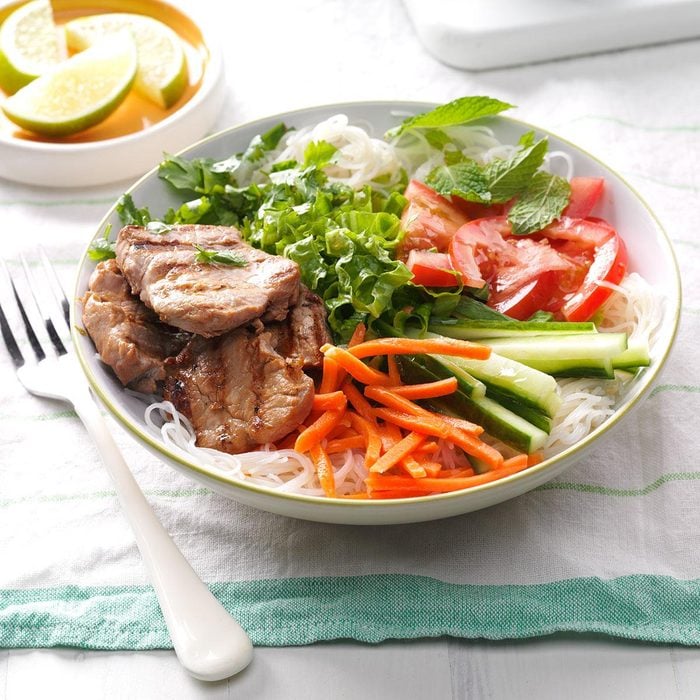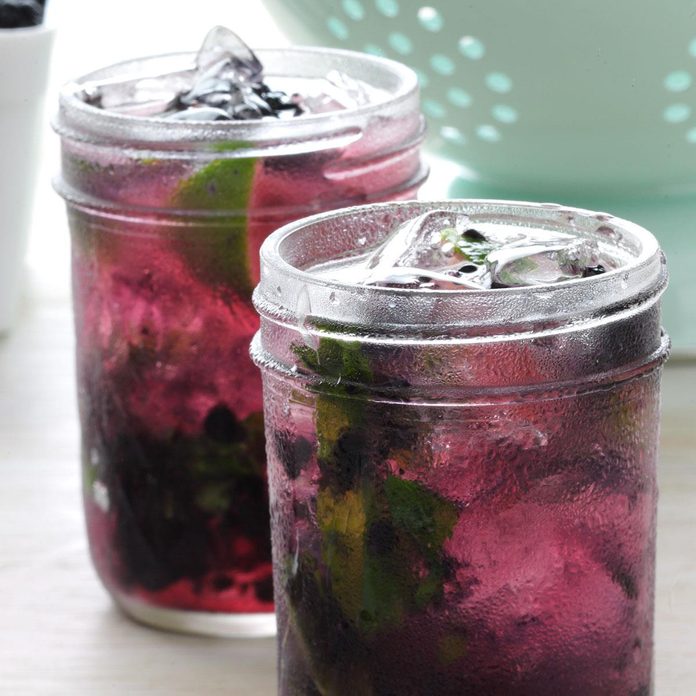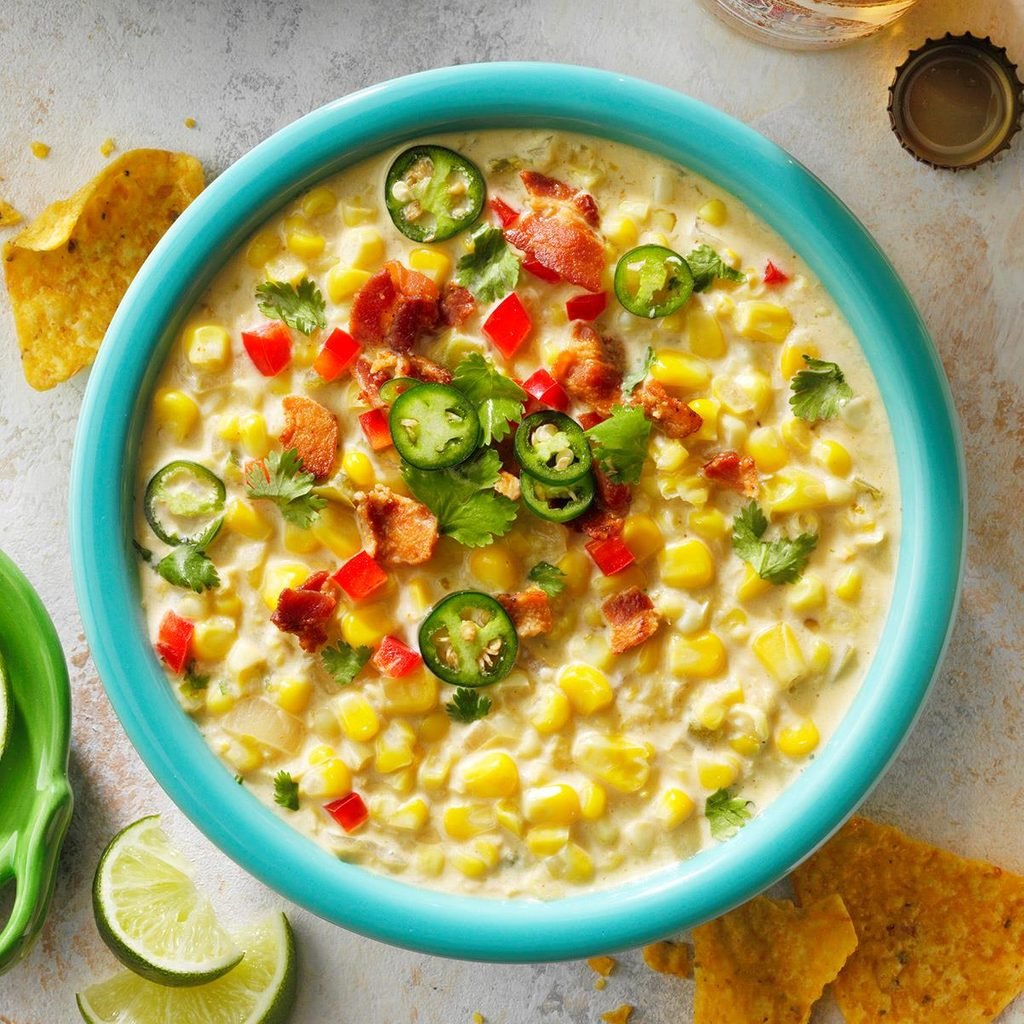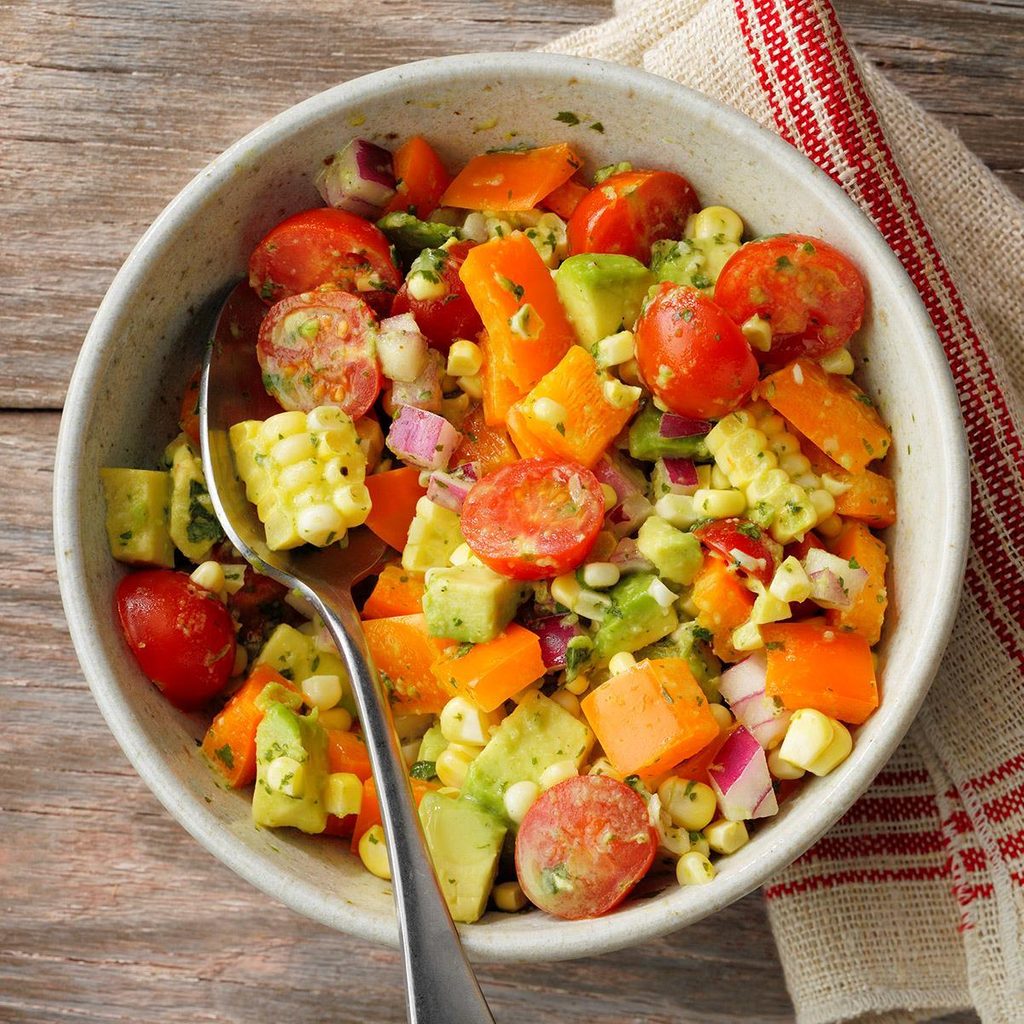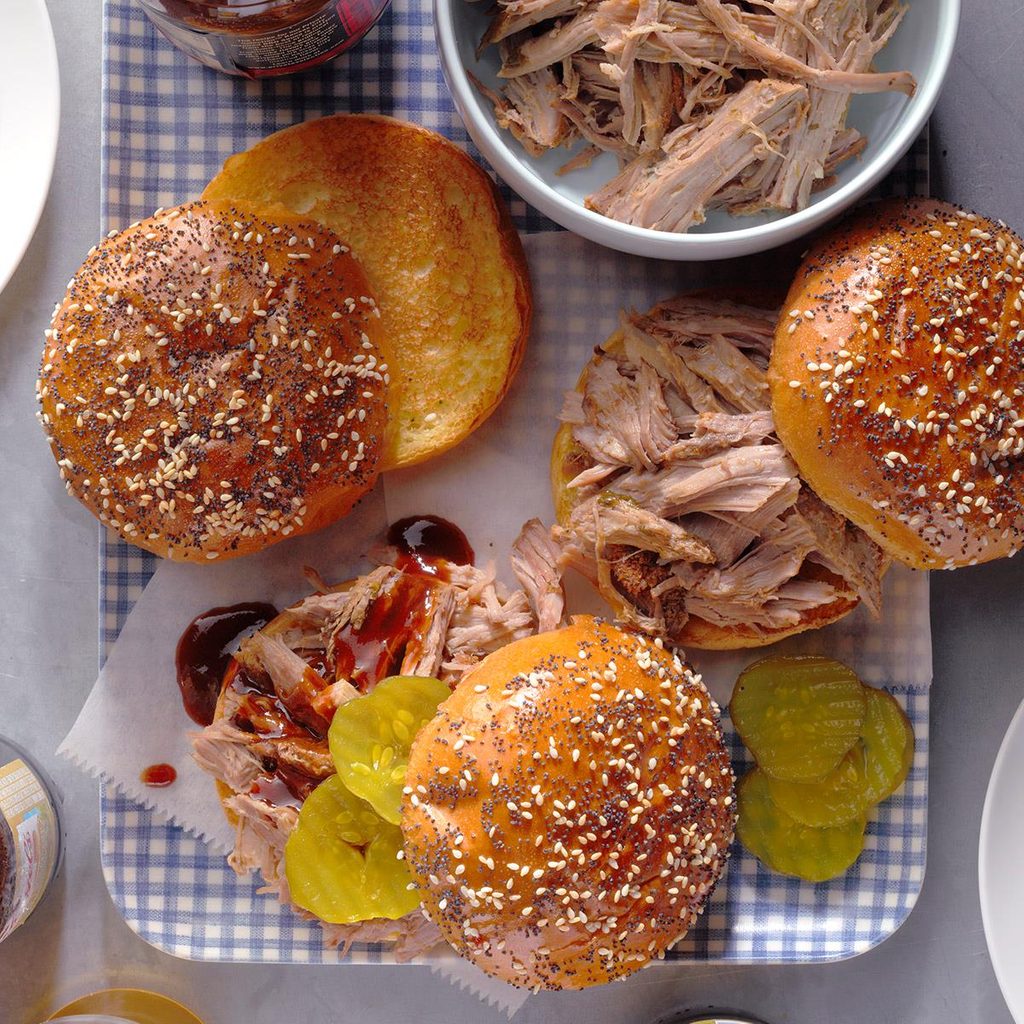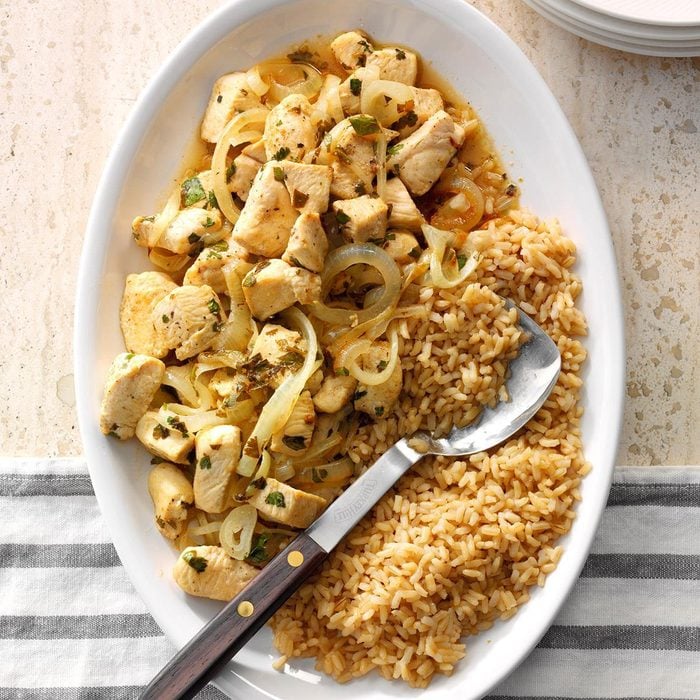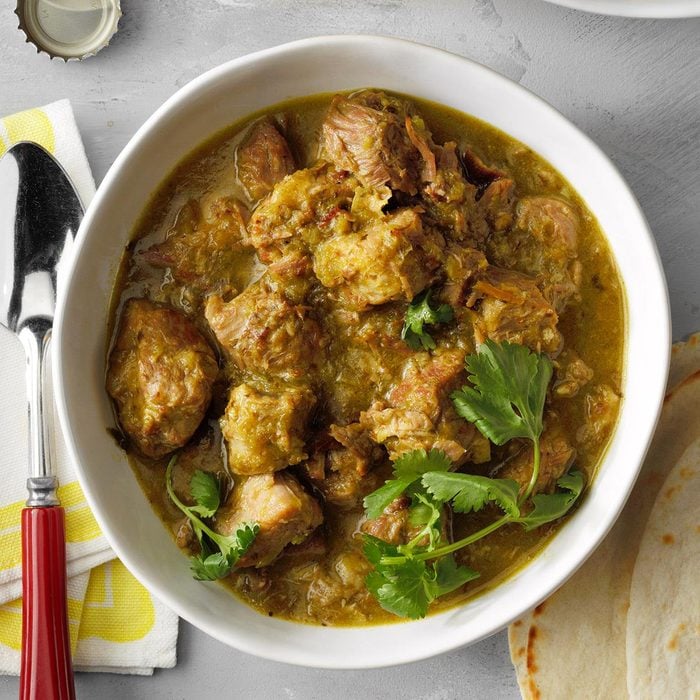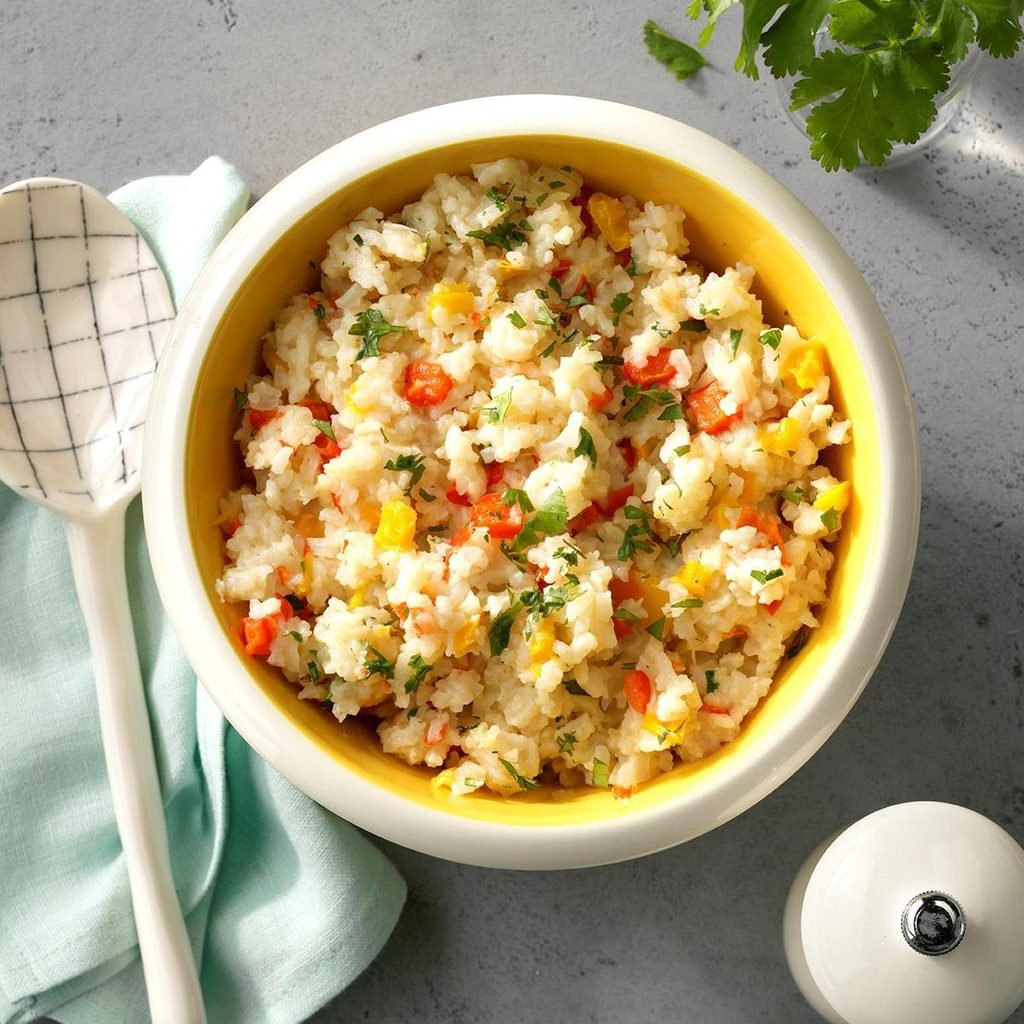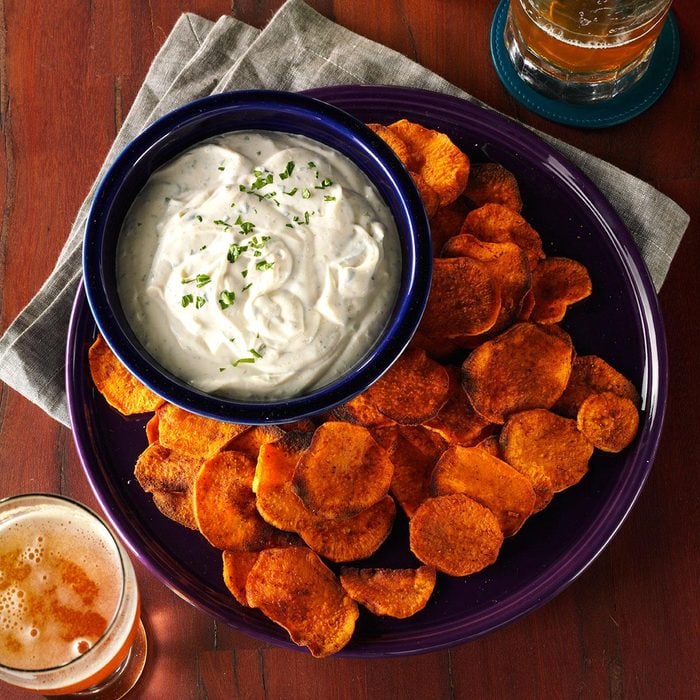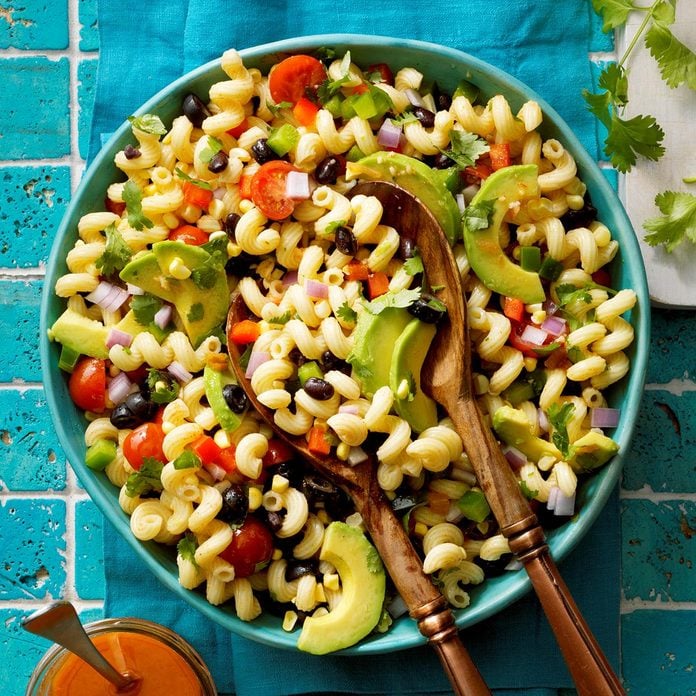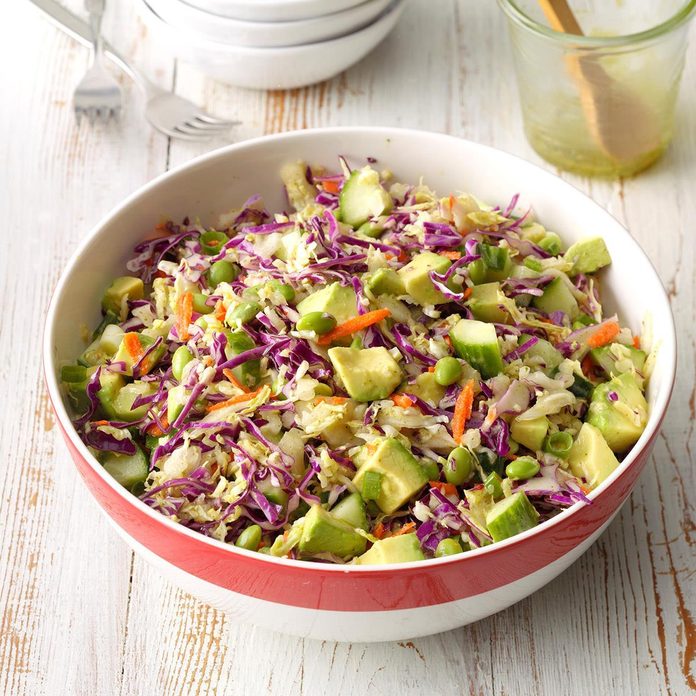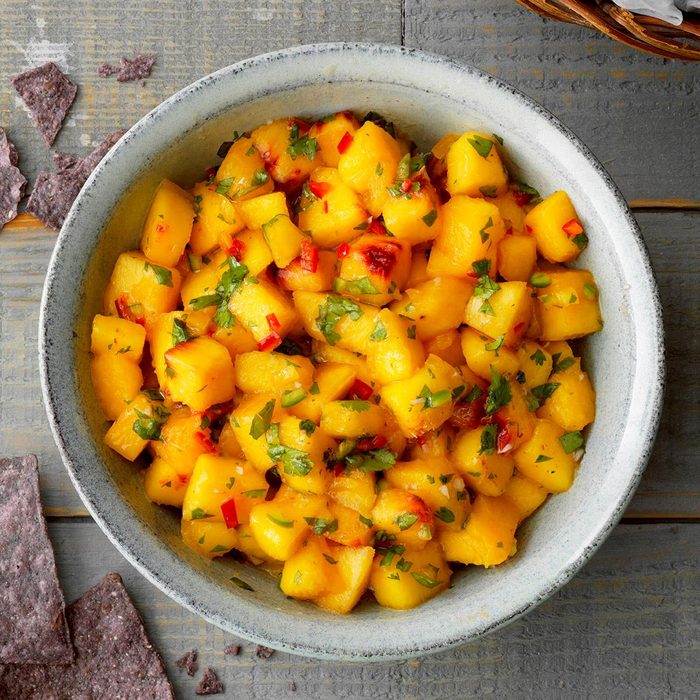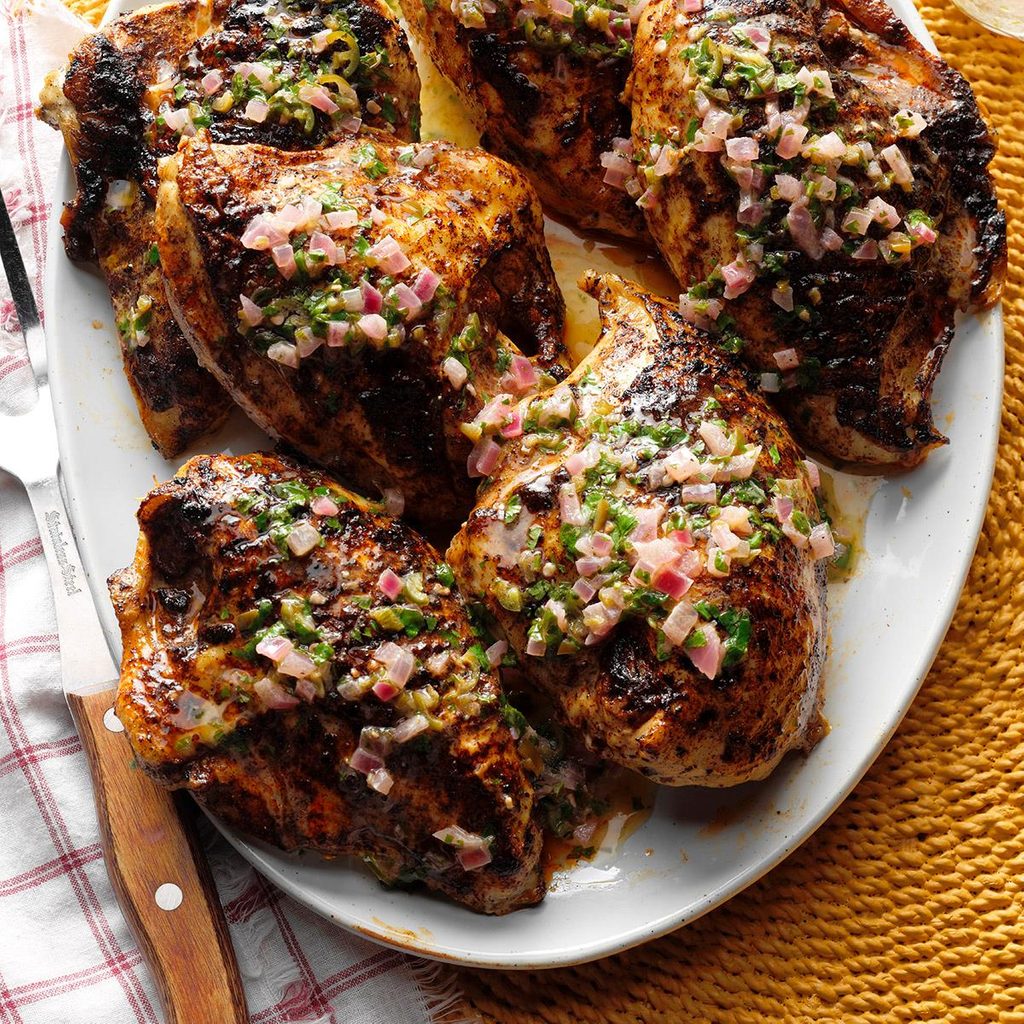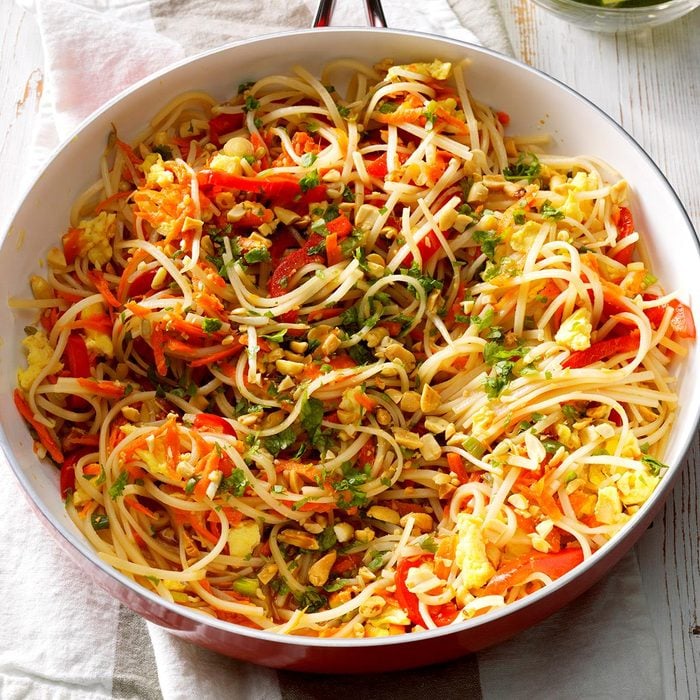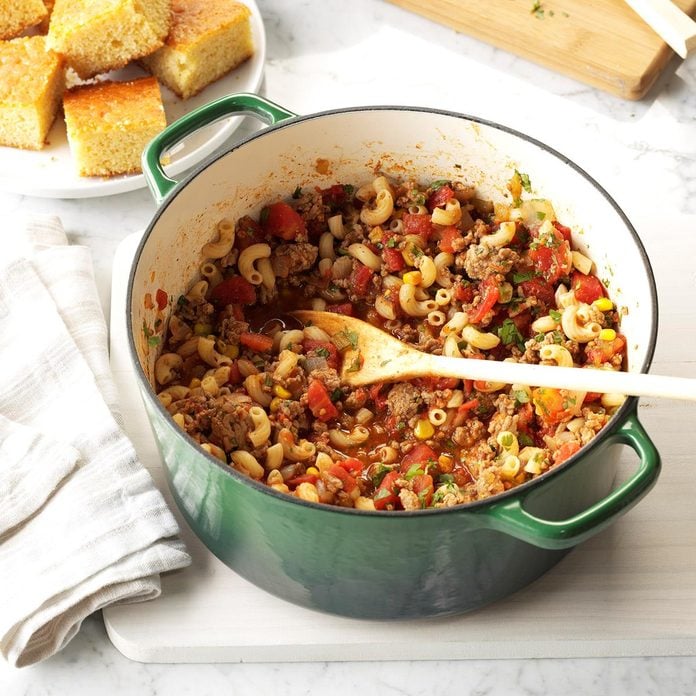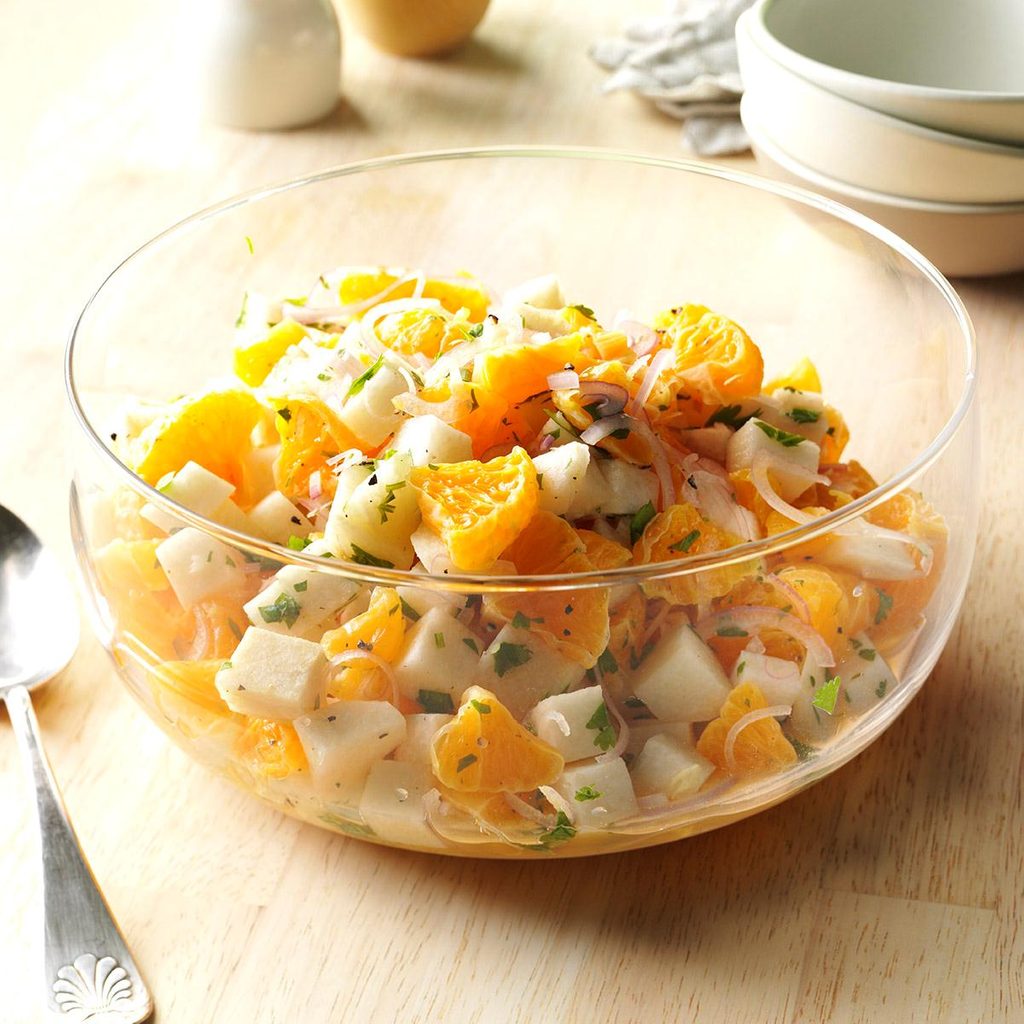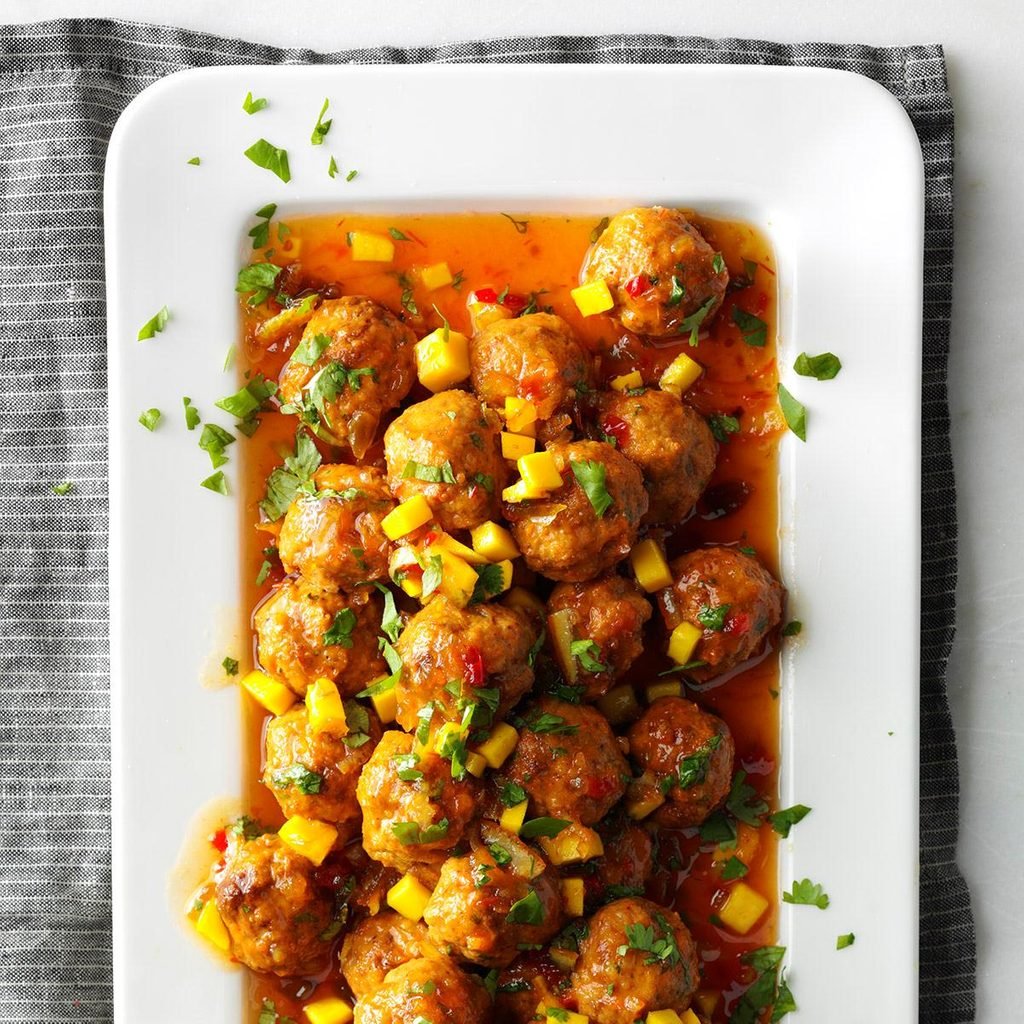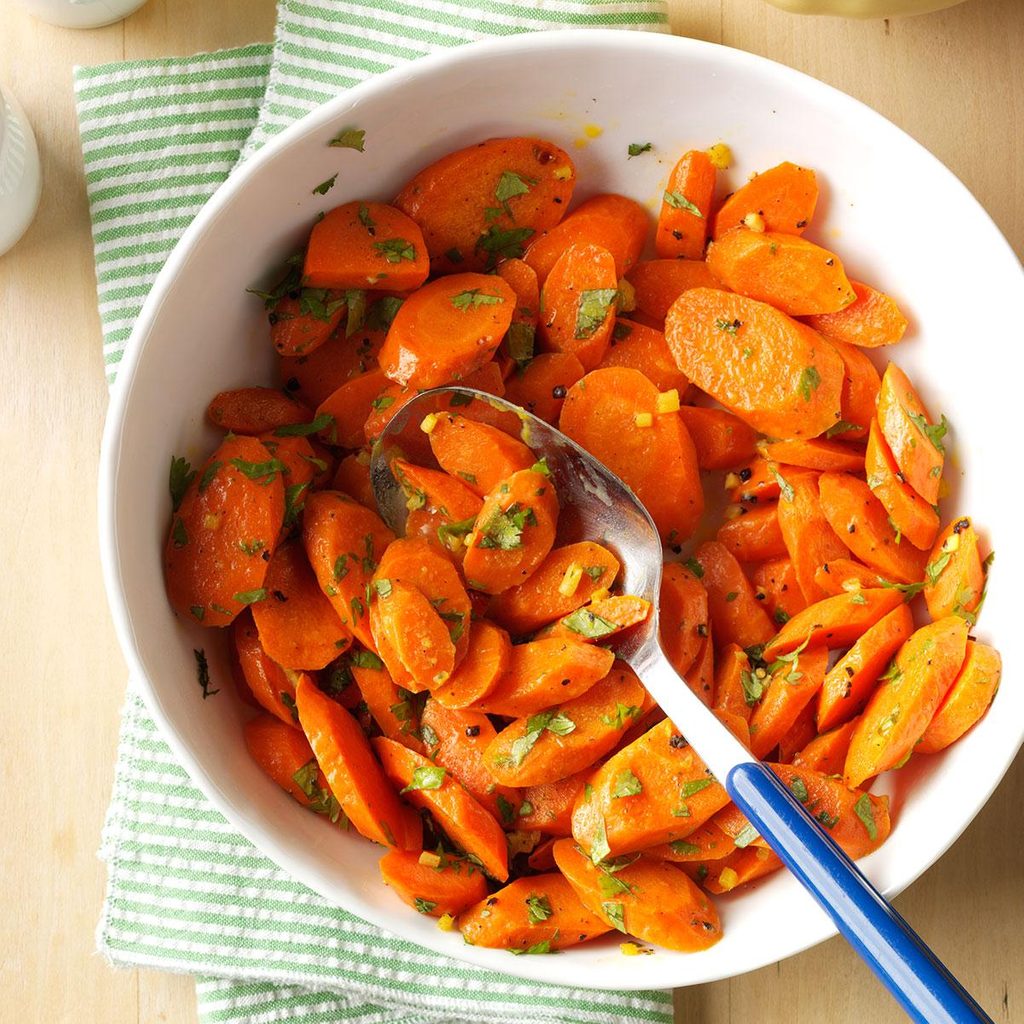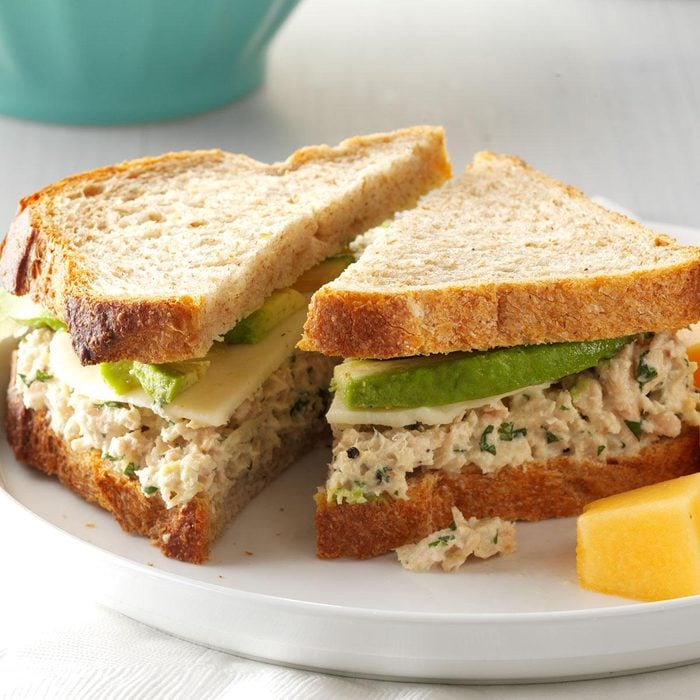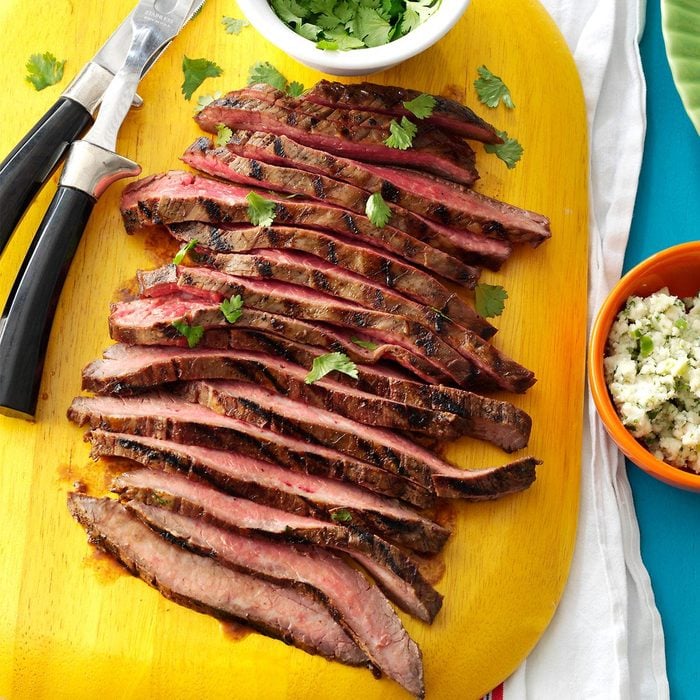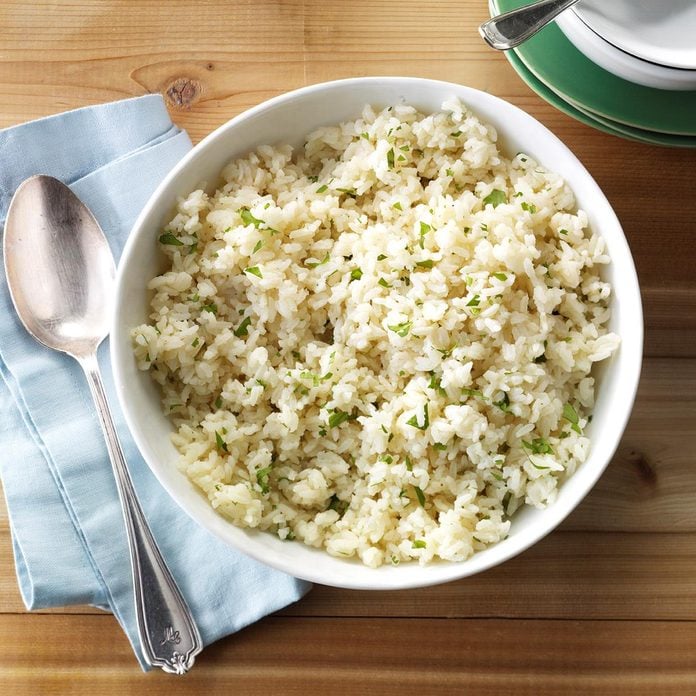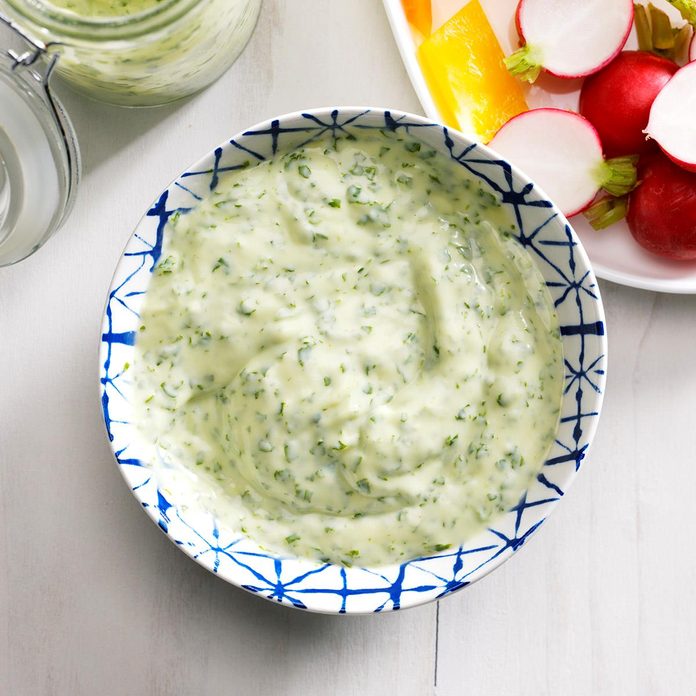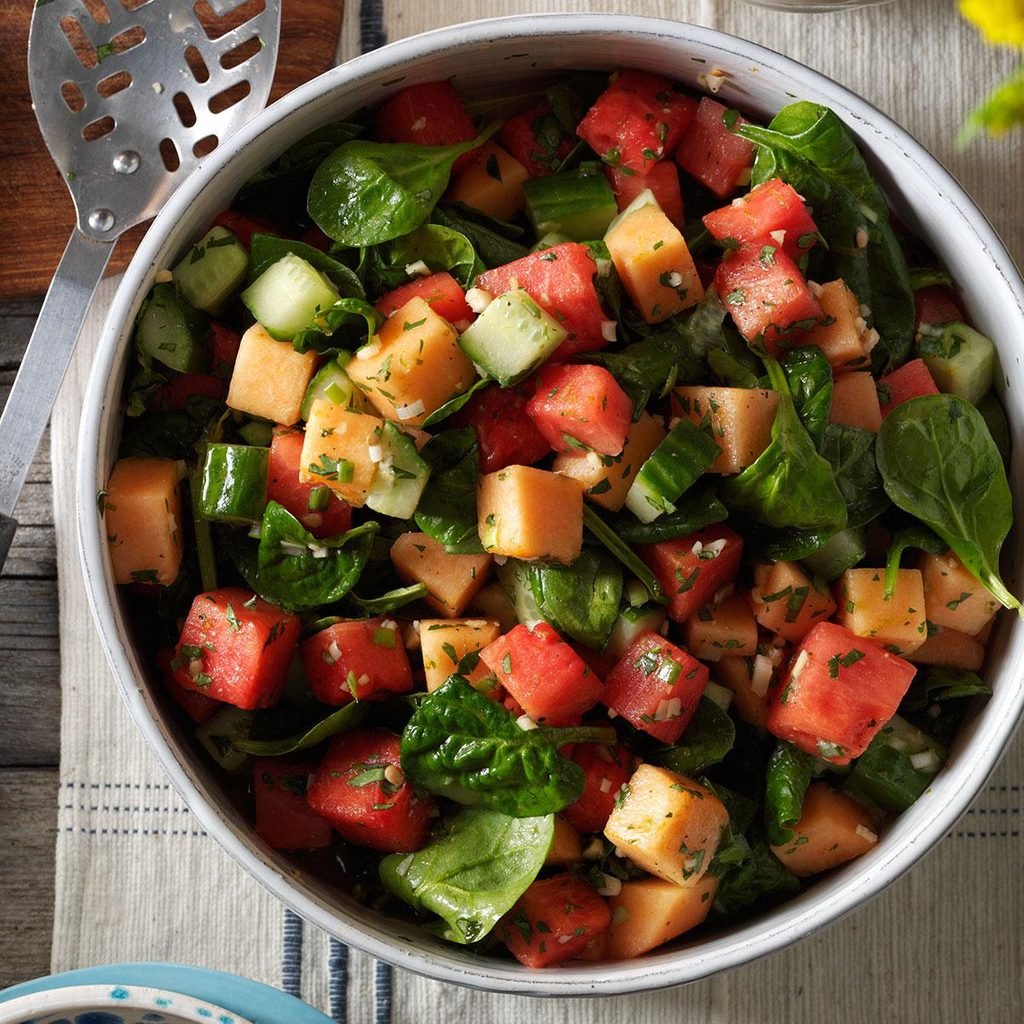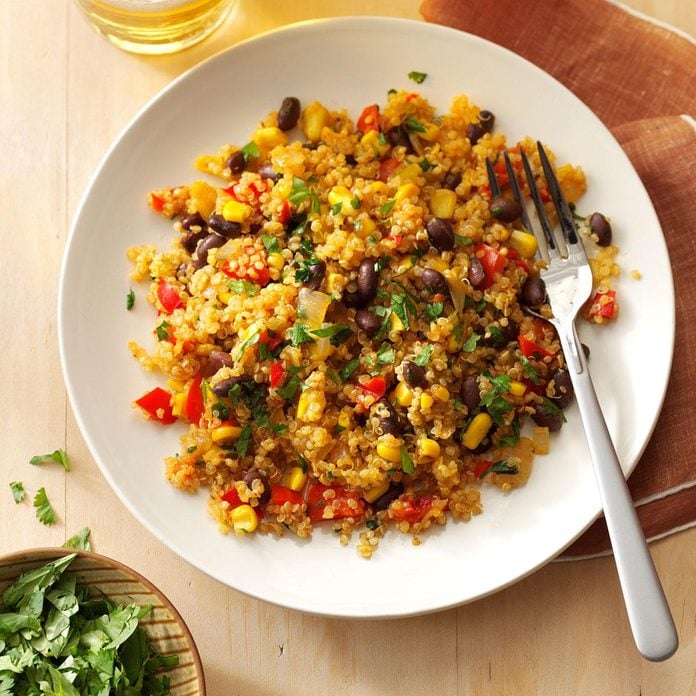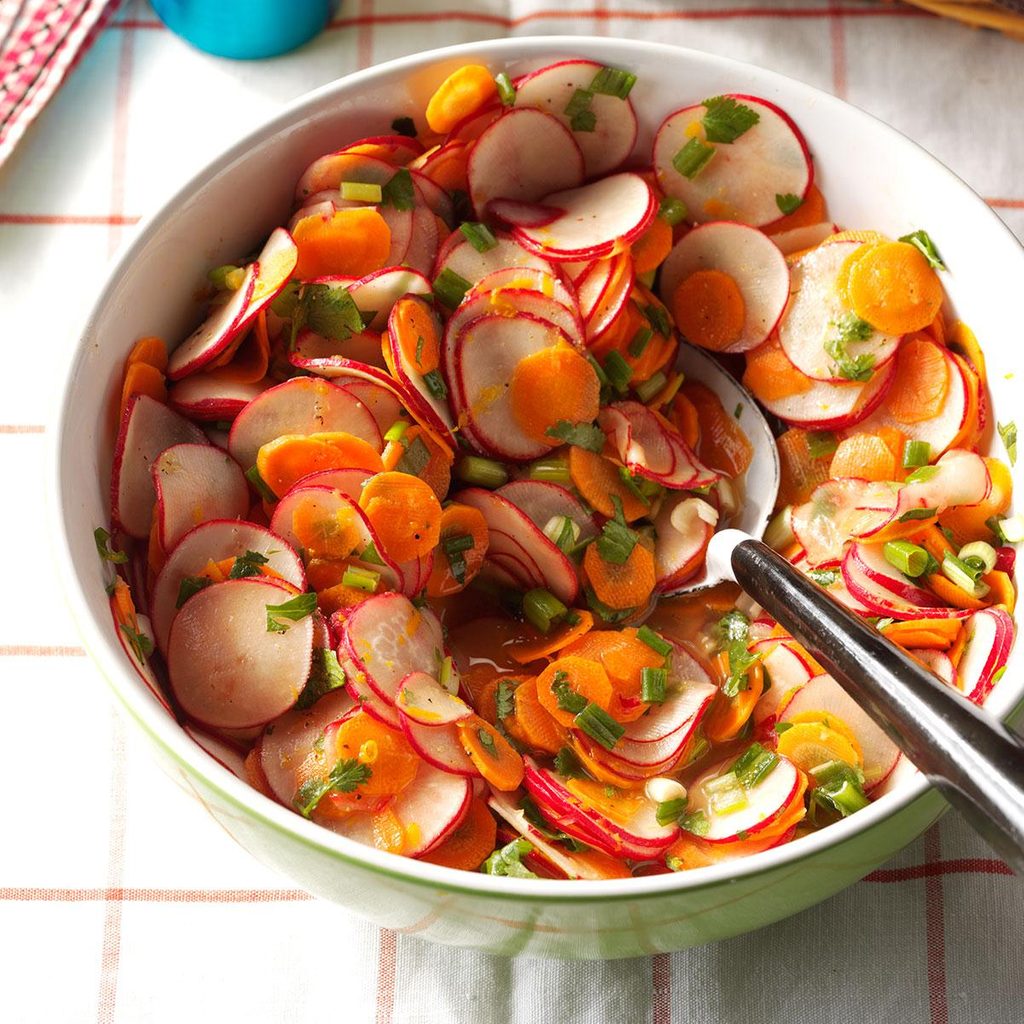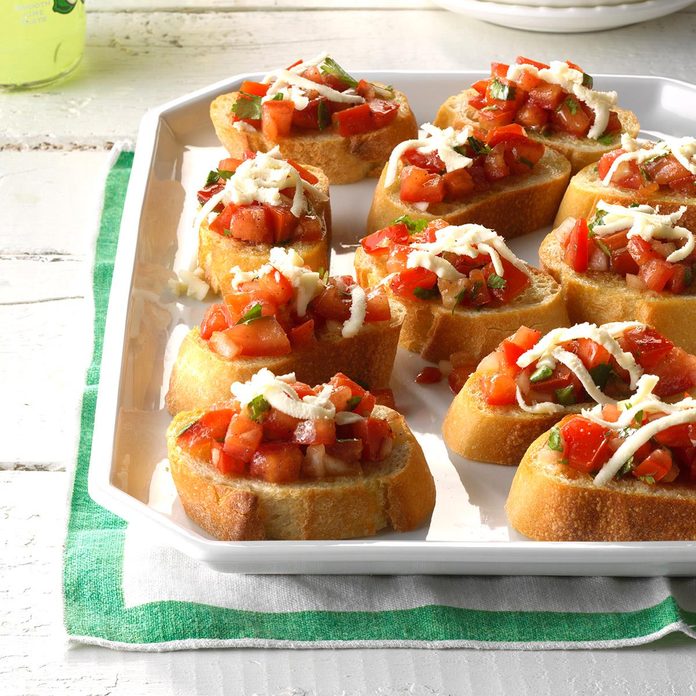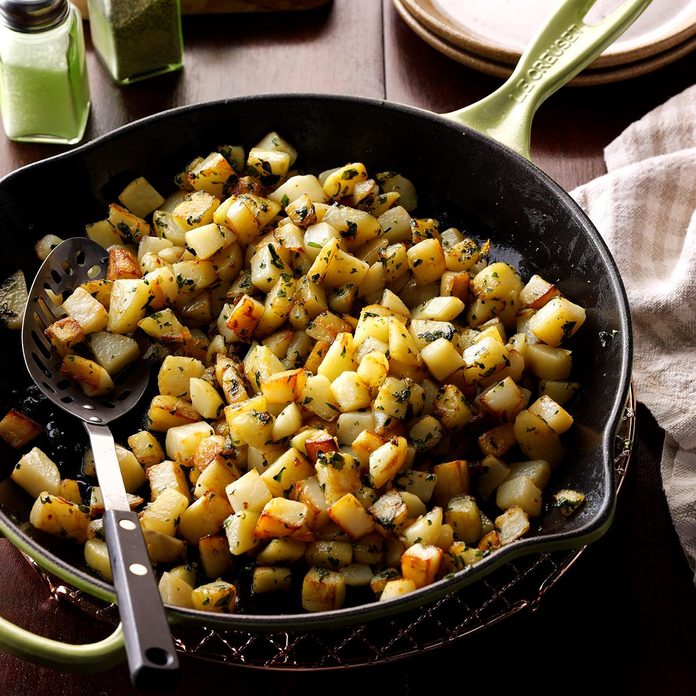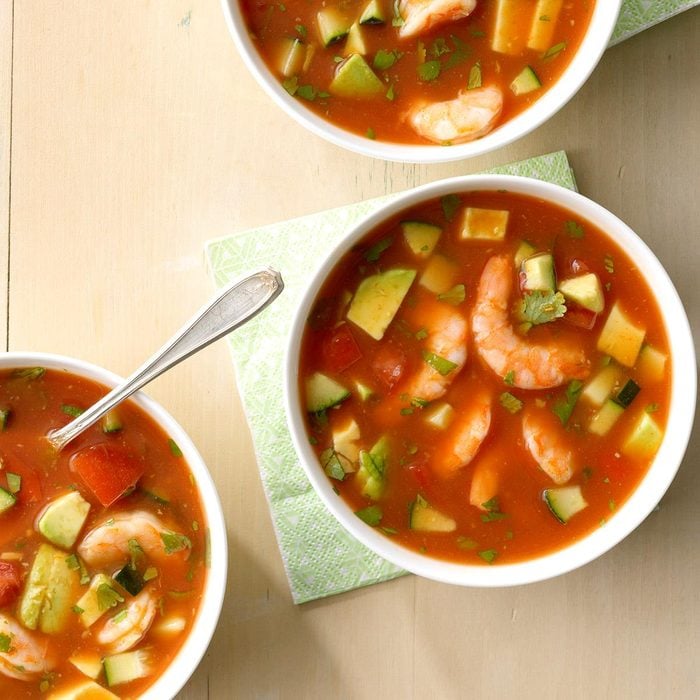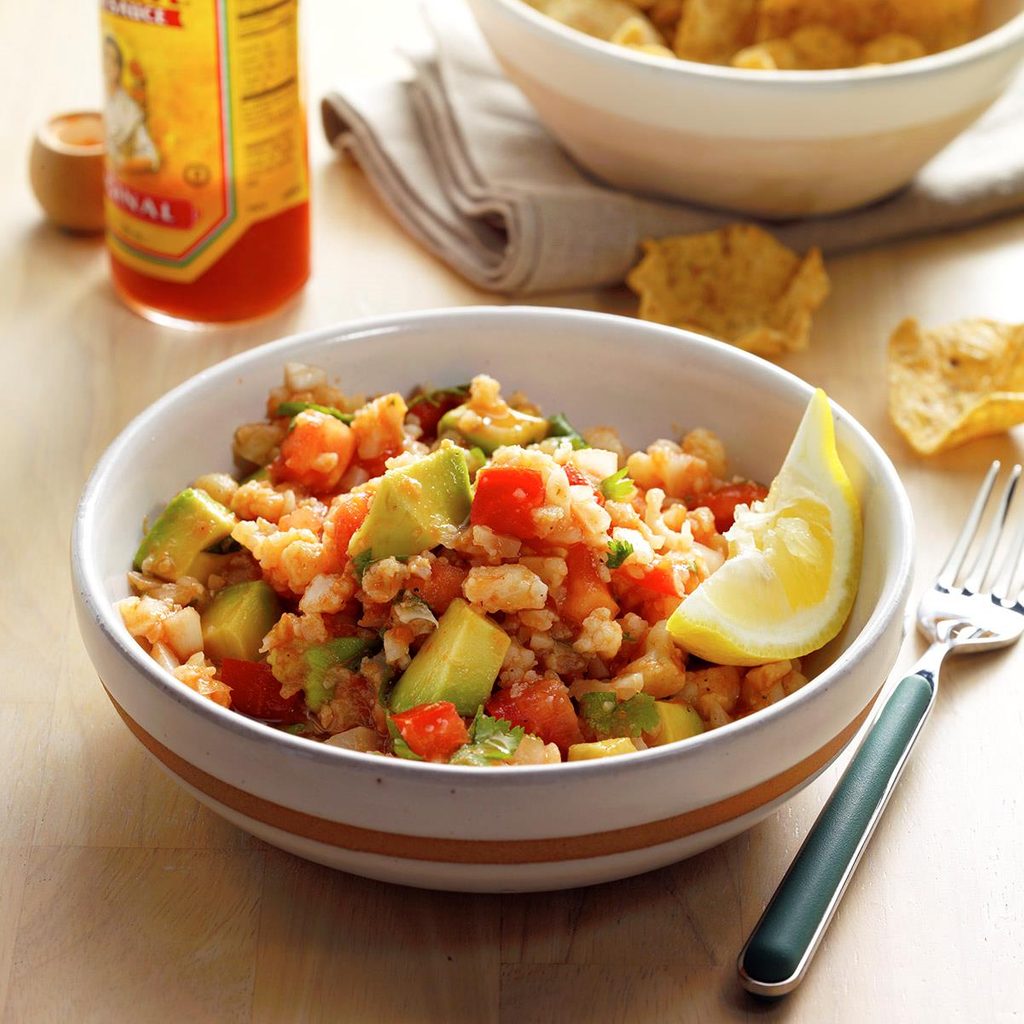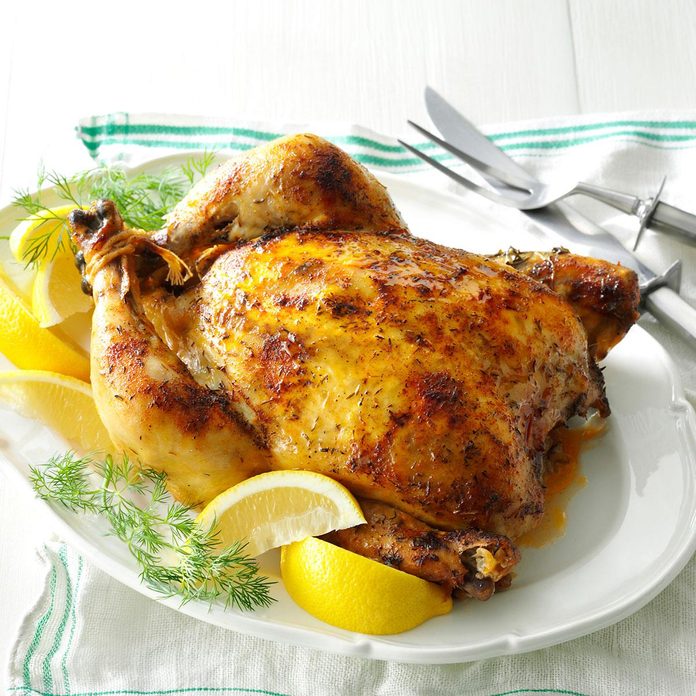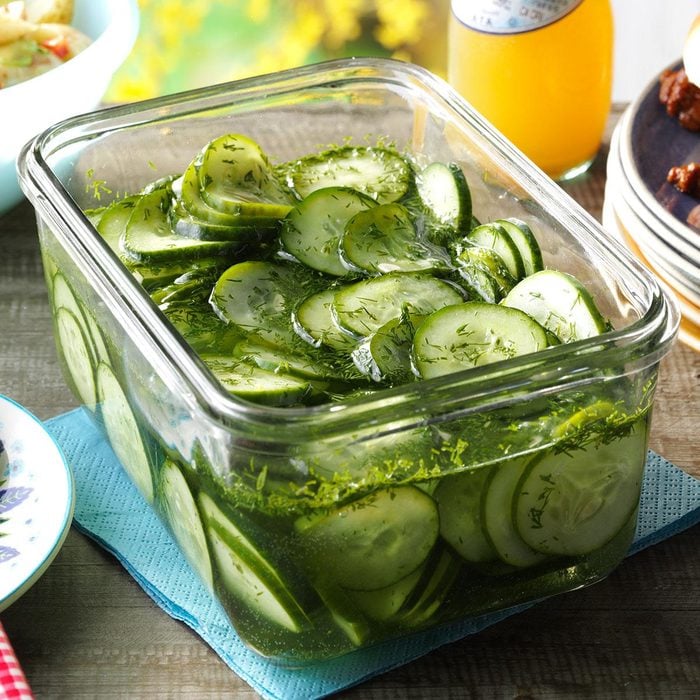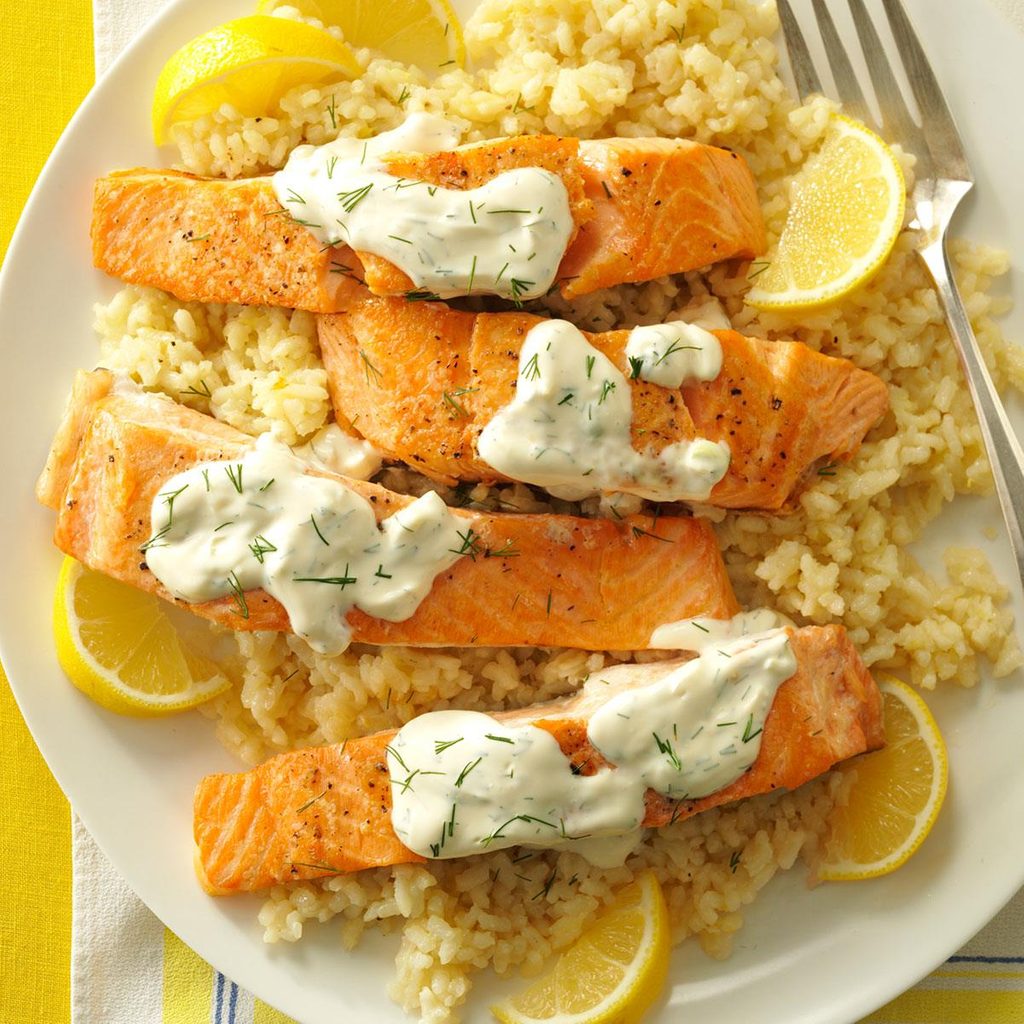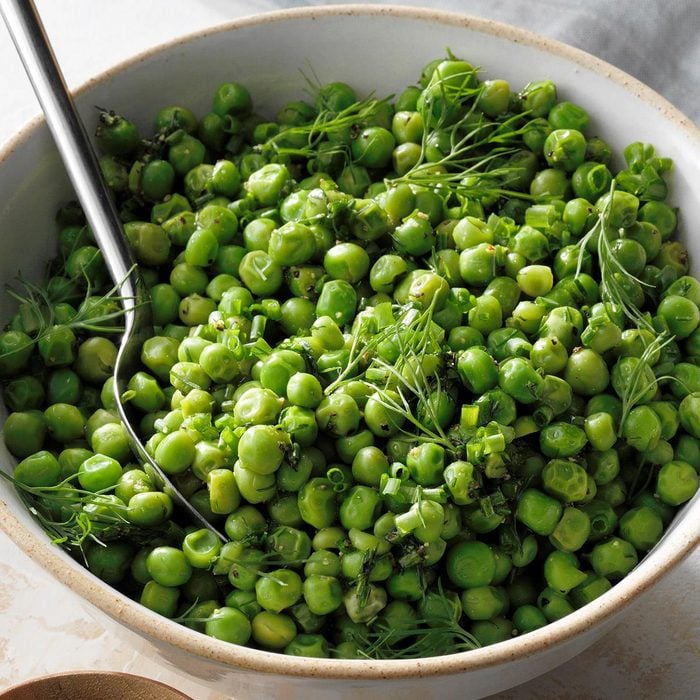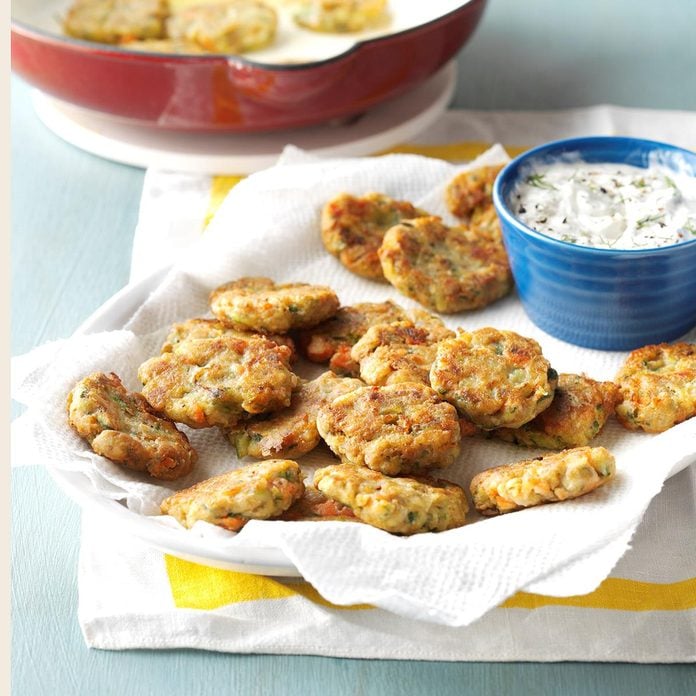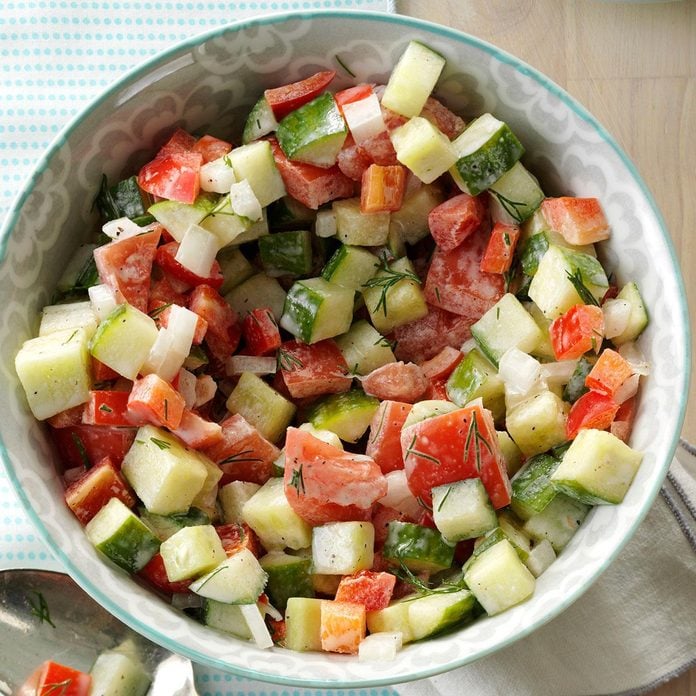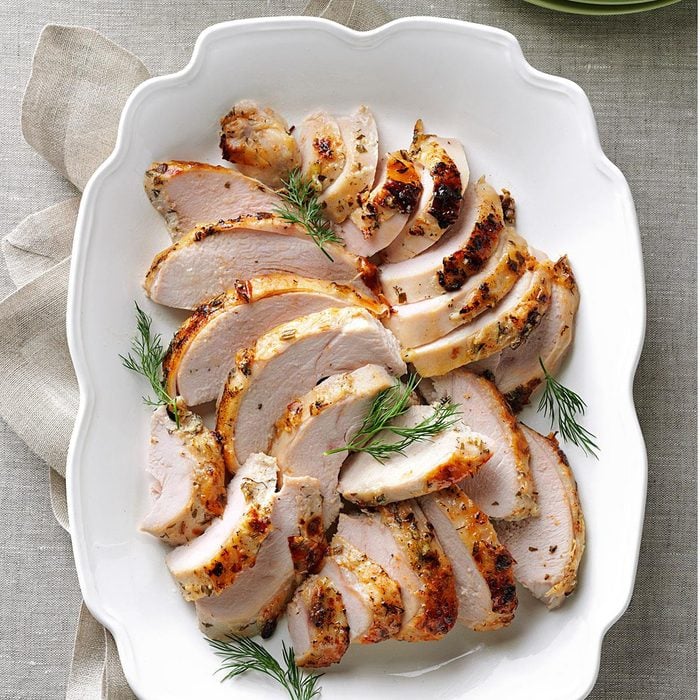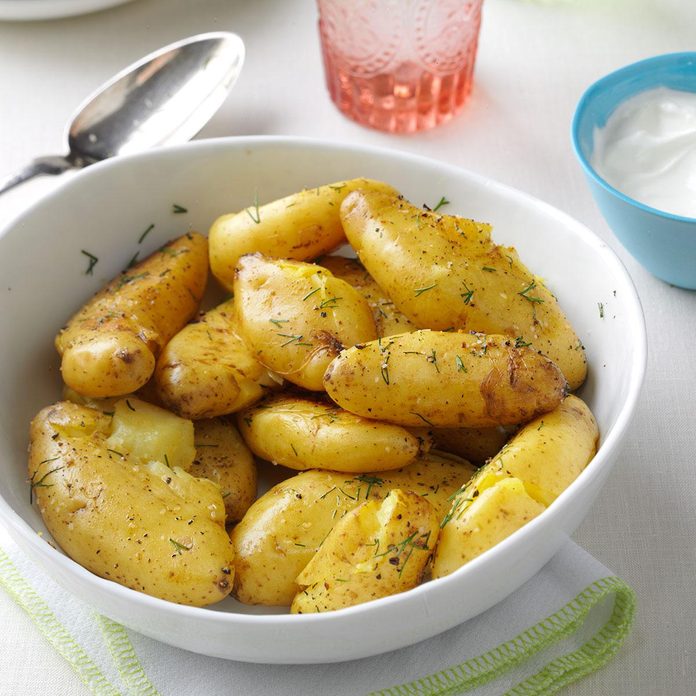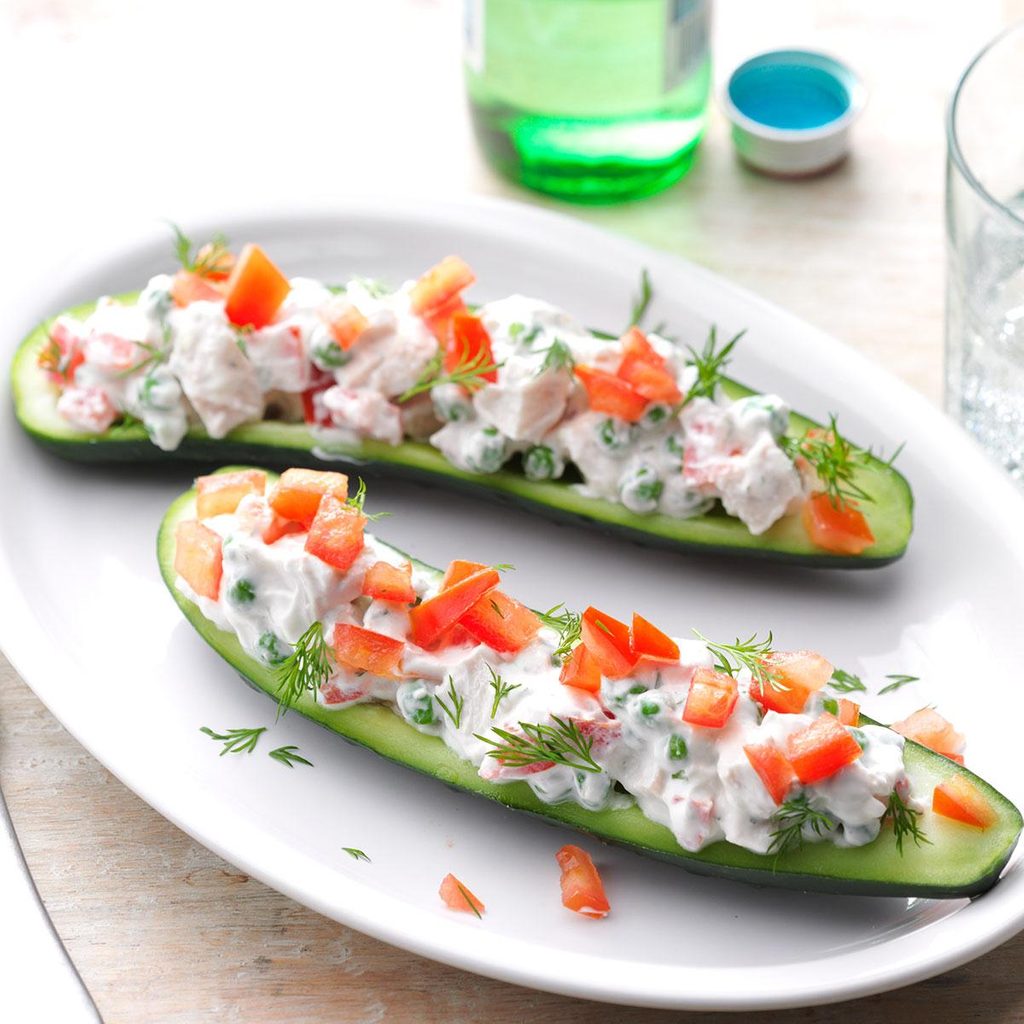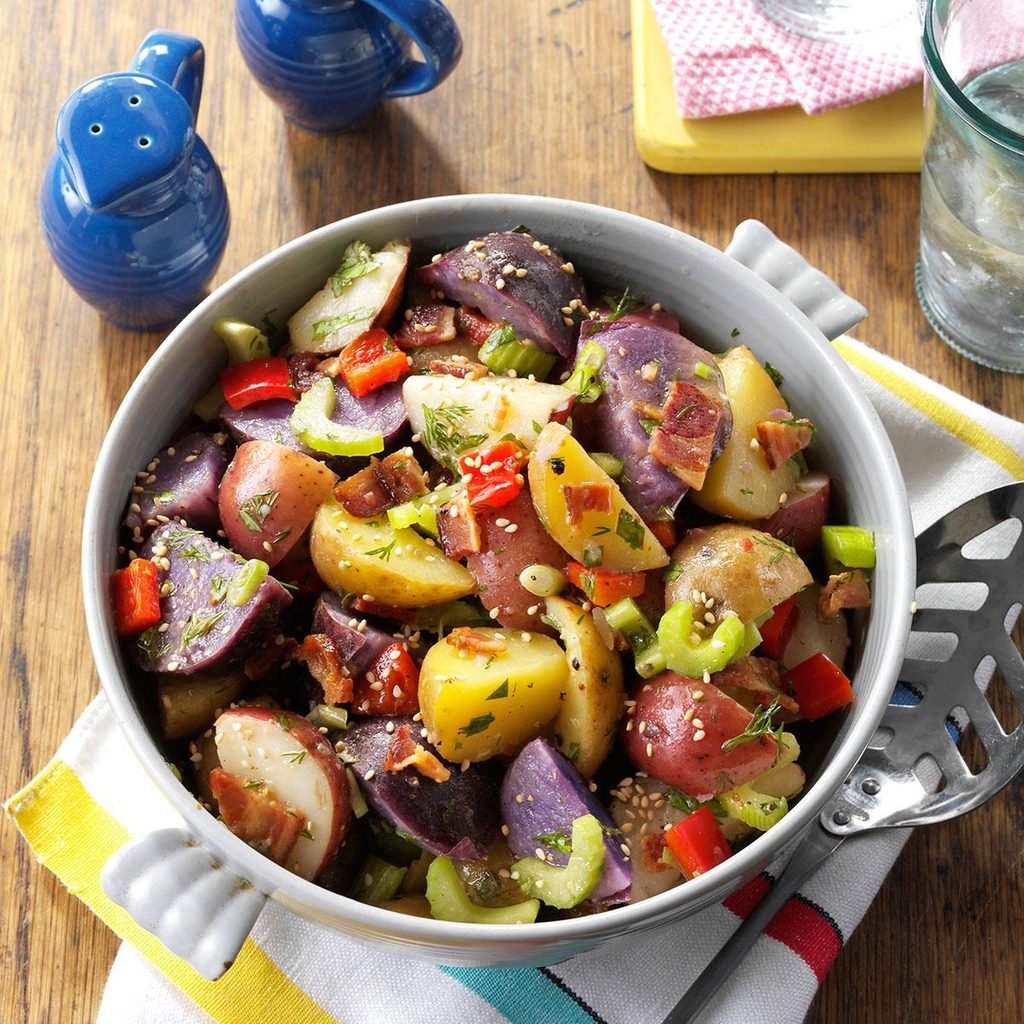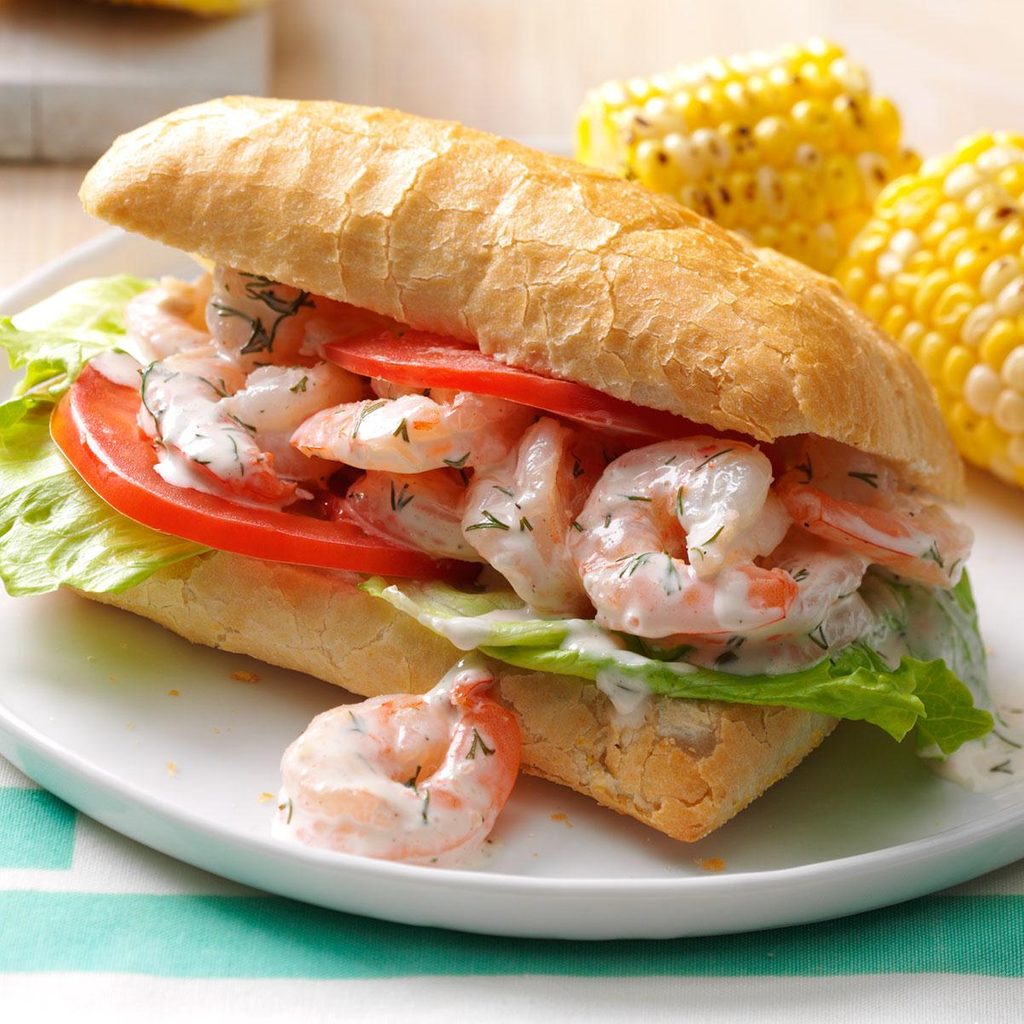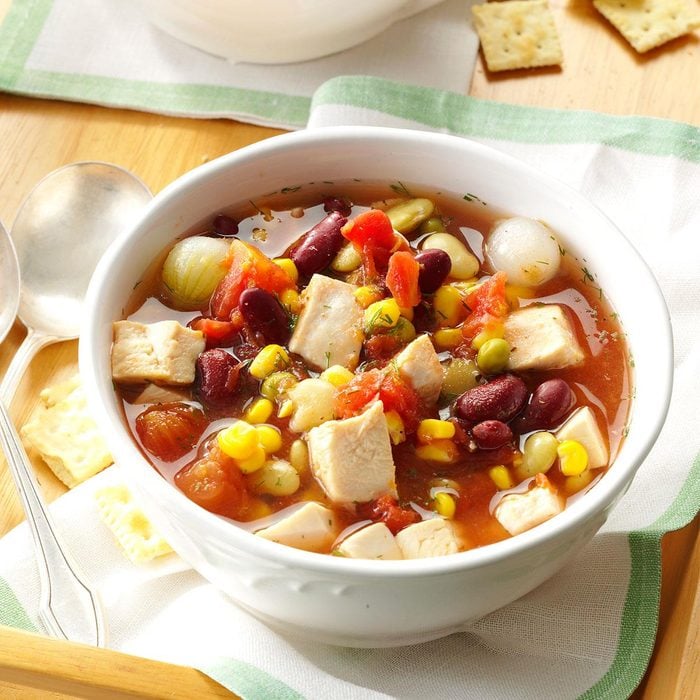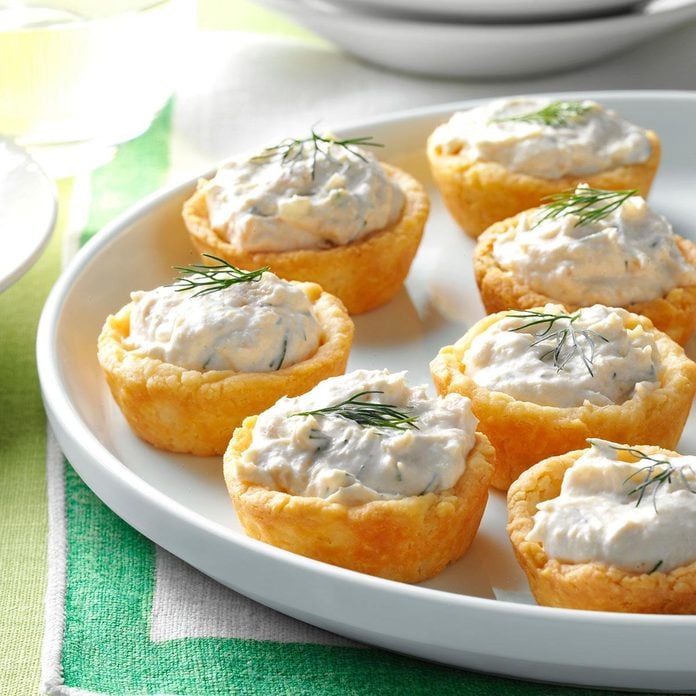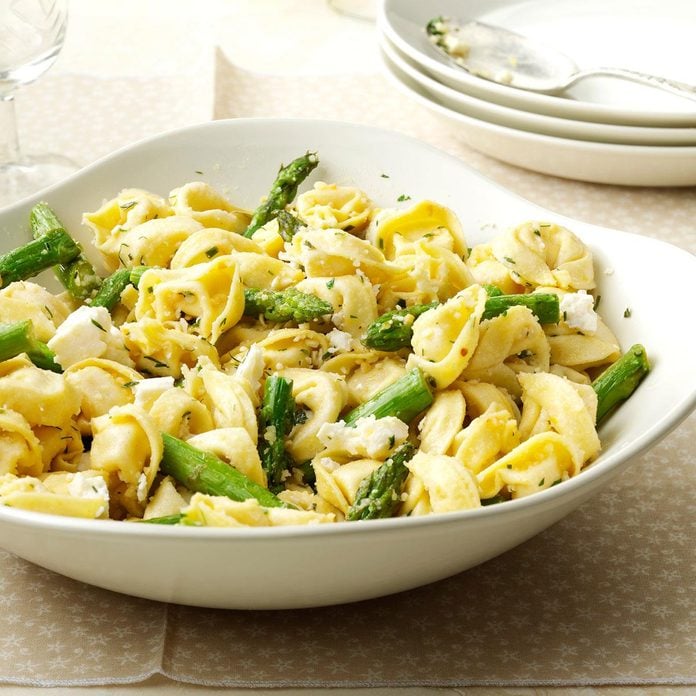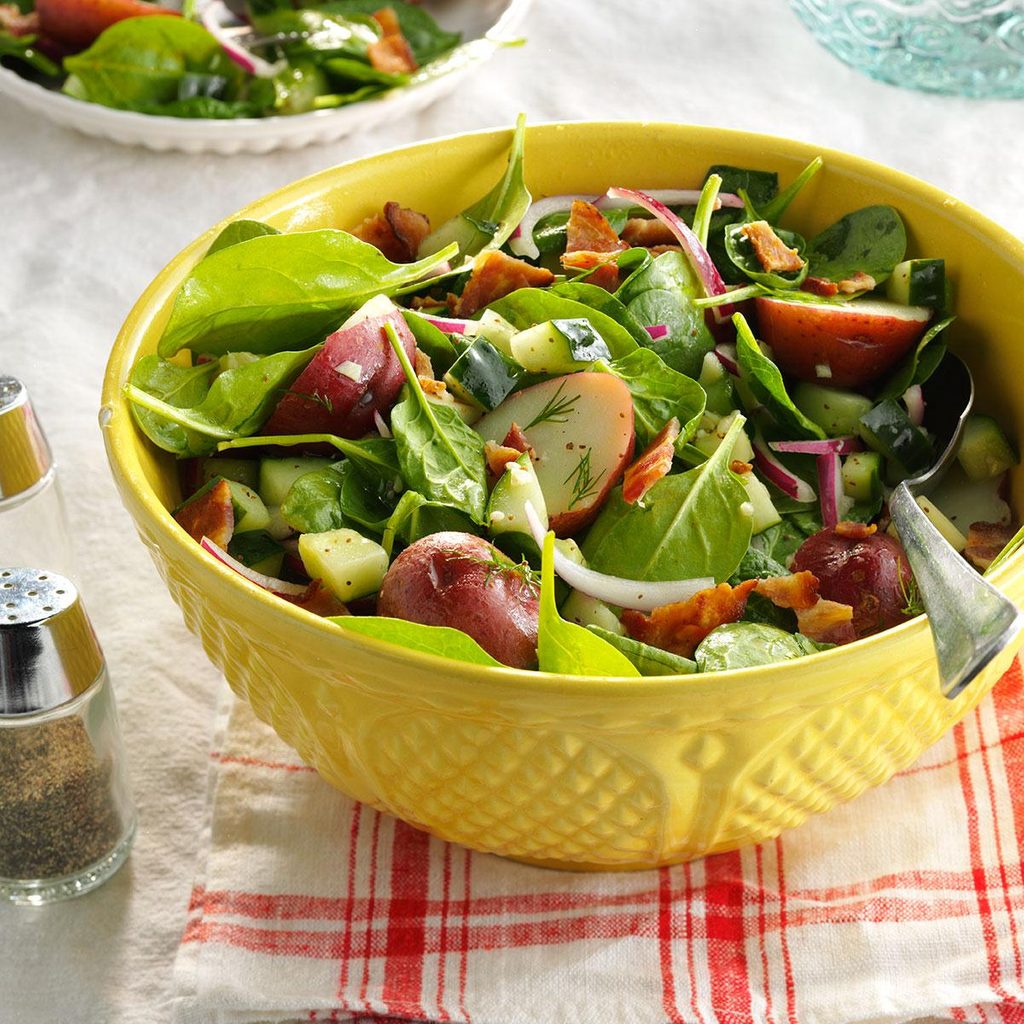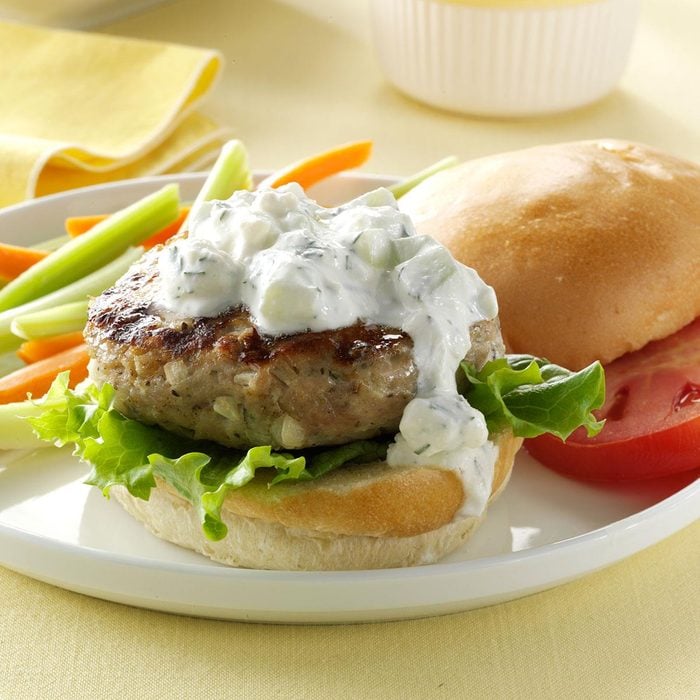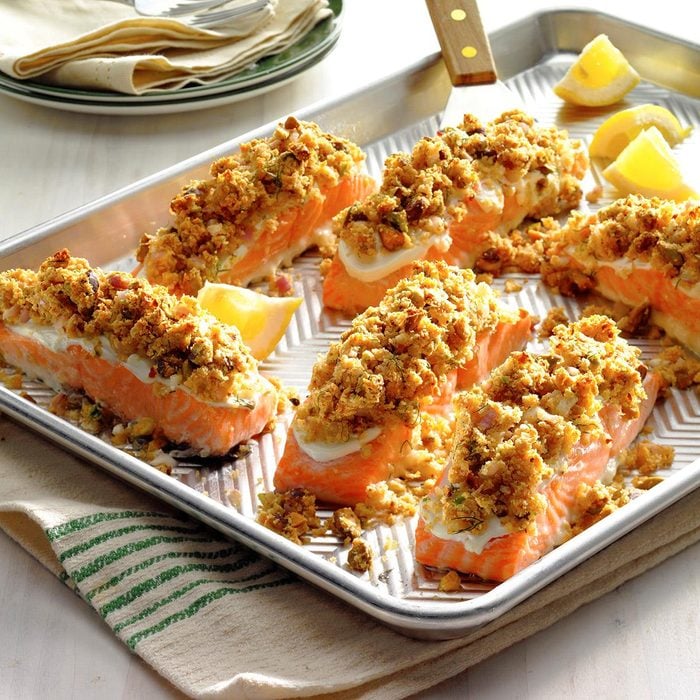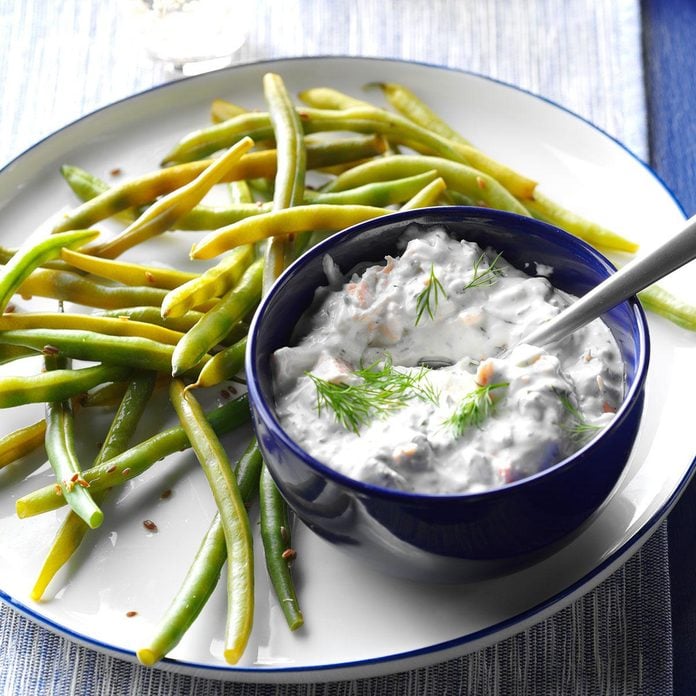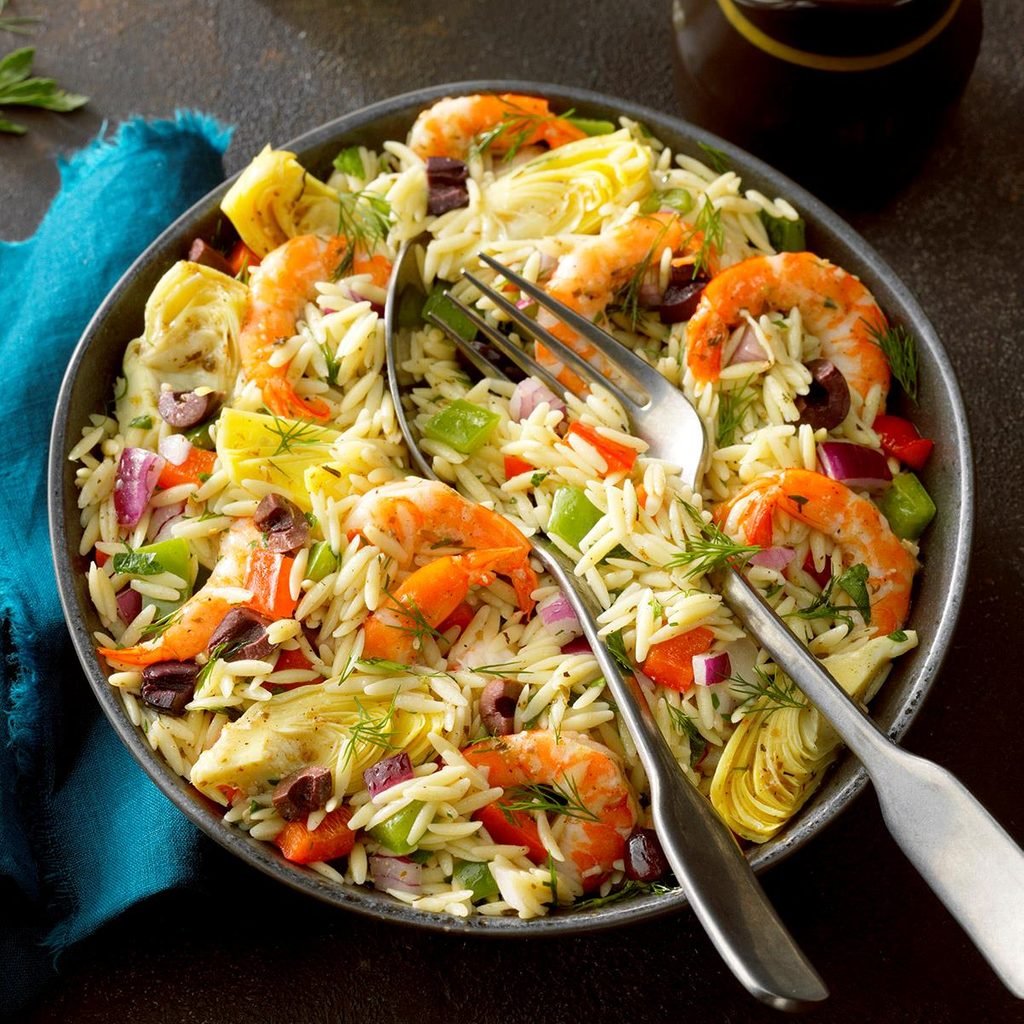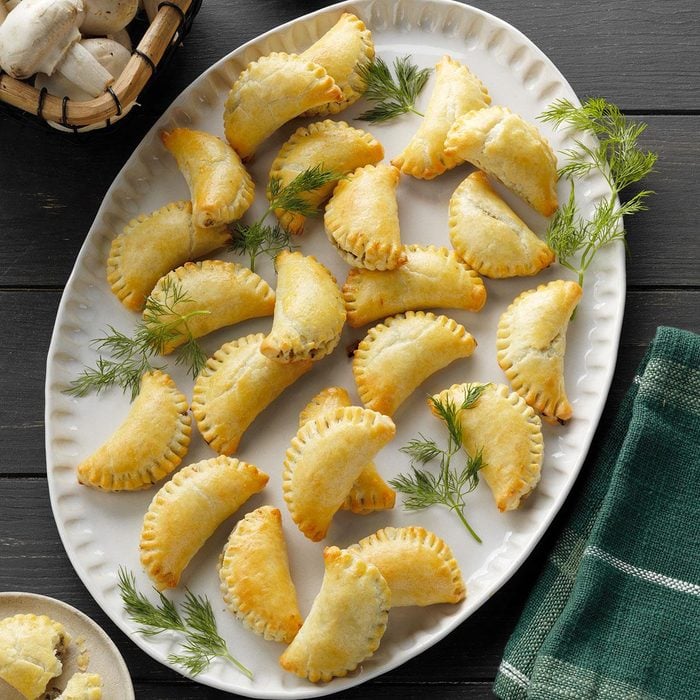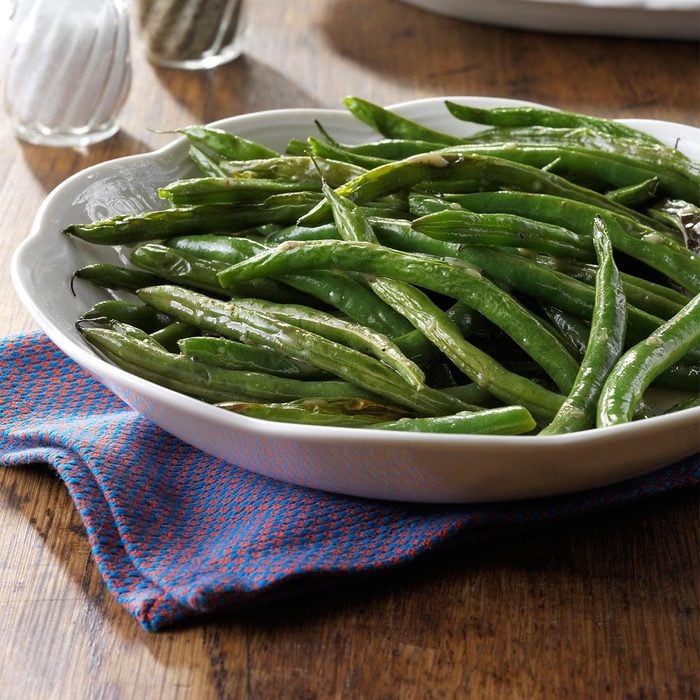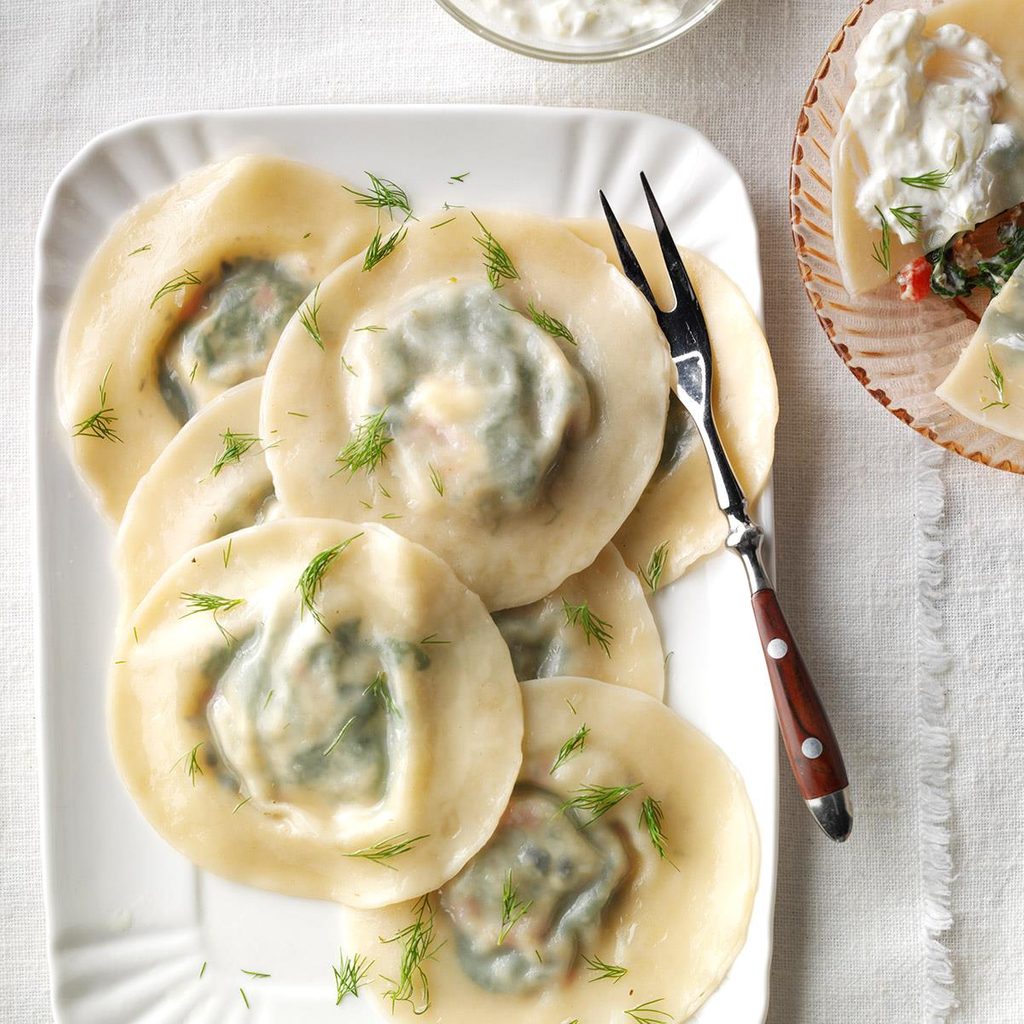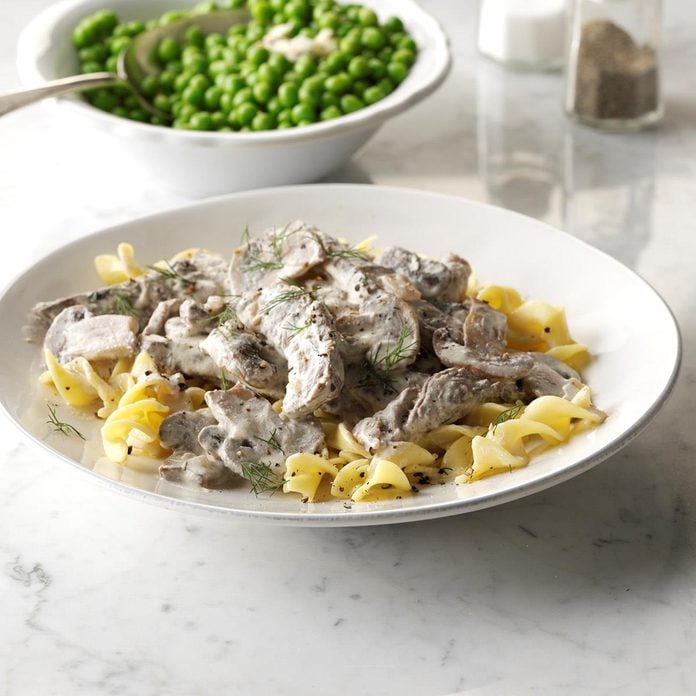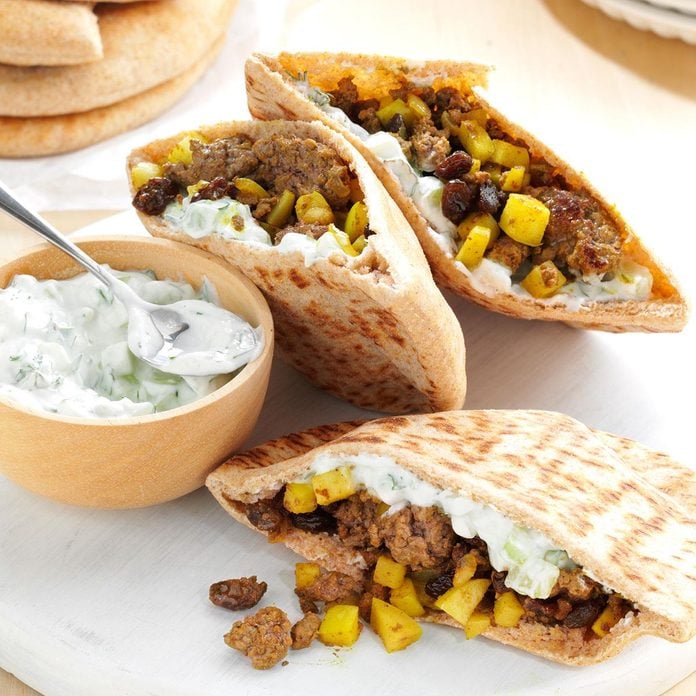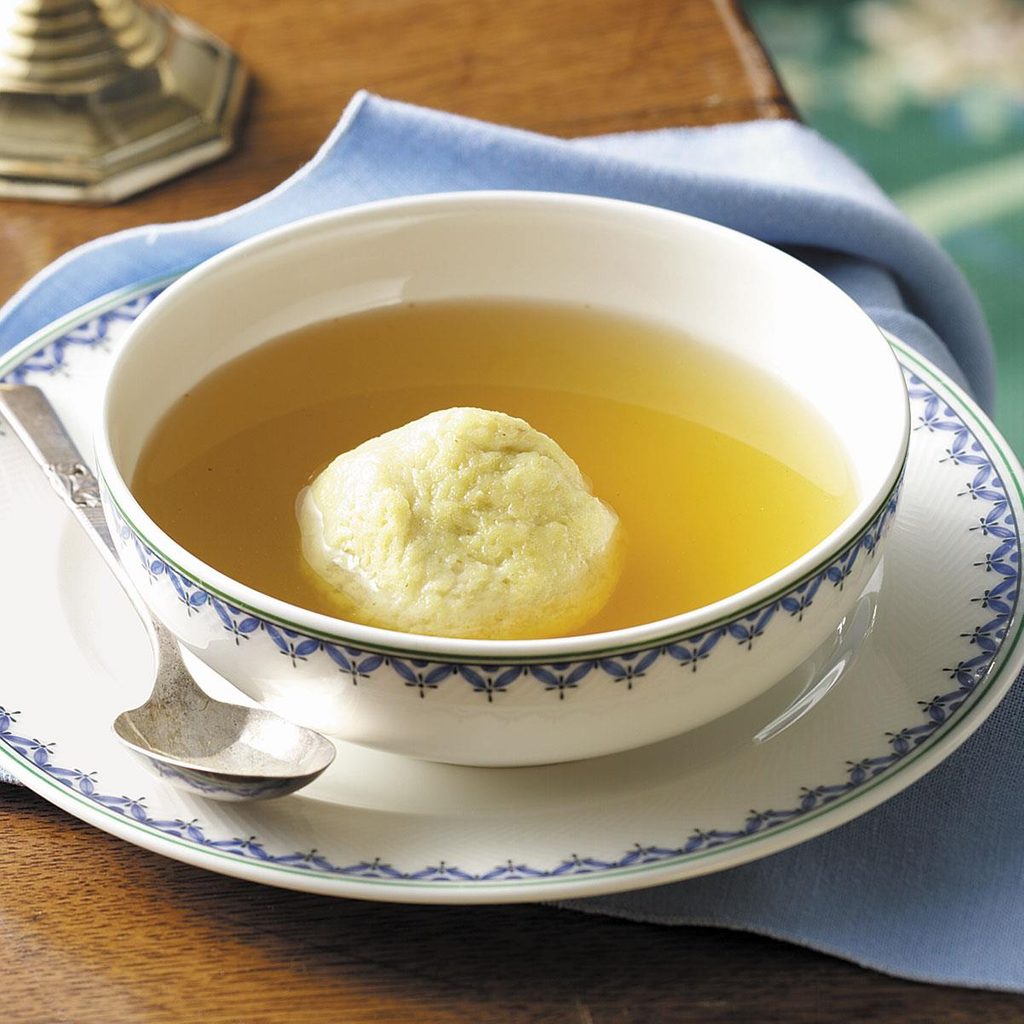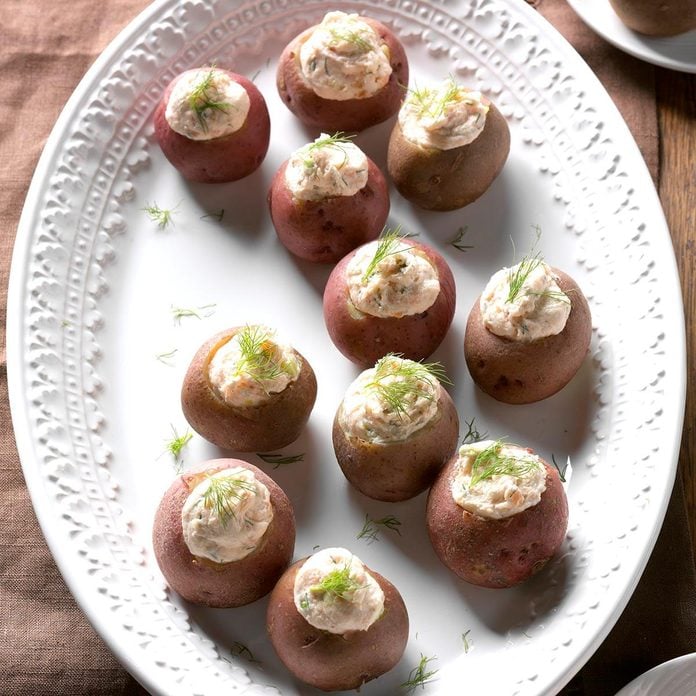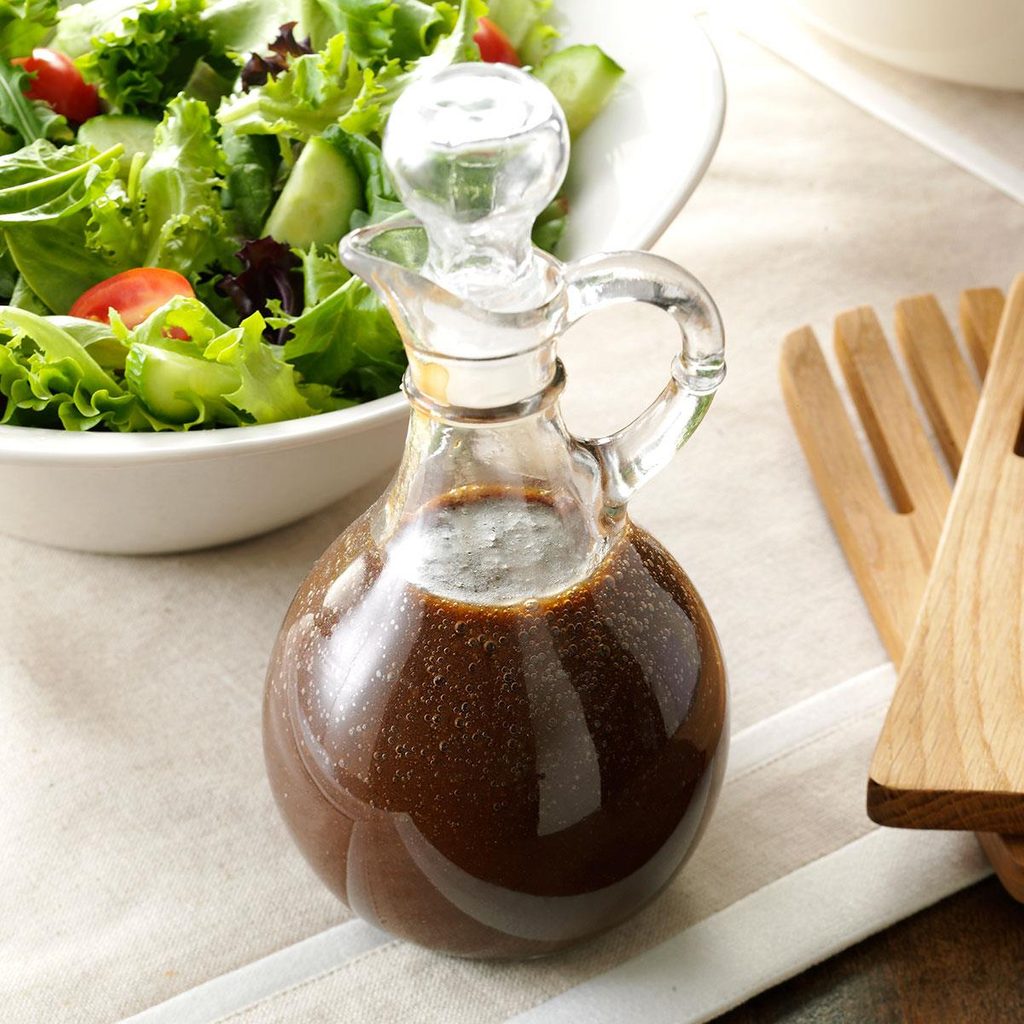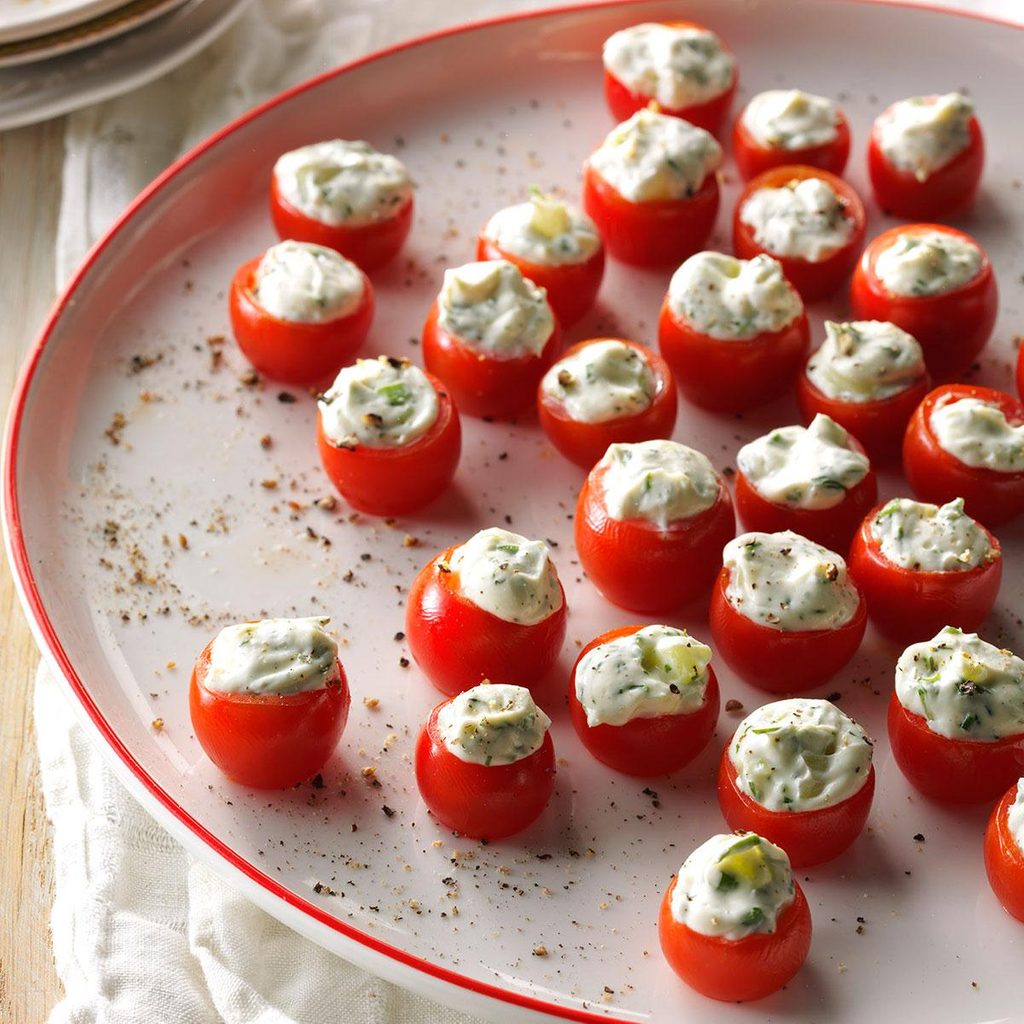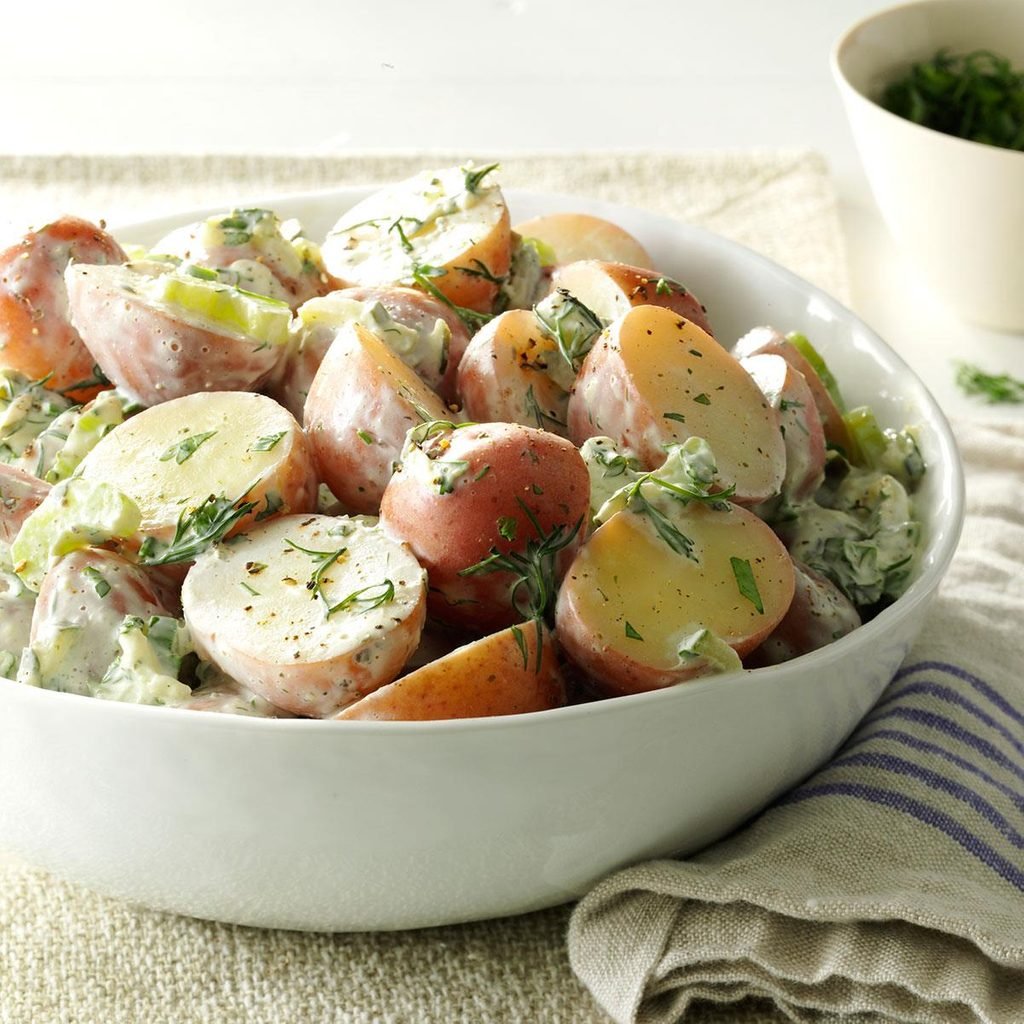Minty Watermelon-Cucumber Salad
Capturing the fantastic flavors of summer, this refreshing, beautiful watermelon-cucumber salad will be the talk of any picnic or potluck. —Roblynn Hunnisett, Guelph, Ontario
Go to Recipe
Mojito SlushWhether you're splashing poolside or watching the kids inside, this slushy beverage has just the right balance of minty crispness and limey tartness that's sure to tingle your taste buds. —Jessica Ring, Chicago, Illinois
Minty Sugar Snap PeasFresh mint adds a lively touch to cooked sugar snap peas. It's also nice on green beans or carrots. —Alice Kaldahl, Ray, North Dakota
Cantaloupe Ice PopsYour reminders to "eat your fruit" will finally stick once kids take a lick of these mmm-melony snacks. A perfect use for overripe cantaloupe, these pops make a light dessert or healthy between-meal refresher. —Susan Hein, Burlington, Wisconsin
Cilantro & Lemon Marinated Chicken KabobsCook the onions first so there’s plenty of room on the grill for the chicken skewers. Before serving, give the whole platter a spritz of lemon for a sunshiny delight. —Moumita Ghosh, Kolkata, West Bengal
Touch-of-Mint Iced TeaMy family loves the mild mint and lemon flavors in this iced tea. It's a wonderful alternative to soft drinks.—Martha Haseman, Hinckley, Illinois
Hearty Chicken GyrosI love reinventing classic recipes to fit our taste and healthy lifestyle. This recipe is quick to prepare and can be served with oven fries or on its own. You can add Greek olives, omit the onion, or even use cubed pork tenderloin for a new taste. —Kayla Douthitt, Elizabethtown, Kentucky
Mint JulepIt wouldn't be Kentucky Derby Day without this mint julep recipe! But, really, this Kentucky Derby mint julep recipe is good anytime. —Taste of Home Test Kitchen
Summer Orzo SaladI’m always looking for fun ways to use the fresh veggies that come in my Community Supported Agriculture box, and this summer orzo salad is one of my favorite creations. I like to improvise with whatever I have on hand, so feel free to do the same here! —Shayna Marmar, Philadelphia, Pennsylvania
Tandoori-Style Chicken with Cucumber Melon RelishWe all need a quick meal that's deliciously healthy. I marinate the chicken before I leave for work, and when I get home, I grill the chicken and make the relish. My husband loves the spicy flavor. To amp up the heat, add more crushed red pepper flakes. —Naylet LaRochelle, Miami, Florida
Minted Beet SaladWe have neighbors who share vegetables from their garden, and every year my husband and I look forward to their beets. My interest in Mediterranean food inspired this beet salad recipe—the vinegar and oil dressing with fresh mint tones down the sweetness of the beets, and the kalamata olives add a salty touch. —Barbara Estabrook, Appleton, Wisconsin
Lemon Mint CurdI like to "dress up" ordinary recipes with my fresh, homegrown herbs. This minty lemon curd is a family favorite! —Sue Gronholz, Beaver Dam, Wisconsin
Mint Watermelon SaladI invented this refreshing fruit salad one sultry afternoon while my friends were gathered around my pool. It was quick to prepare and disappeared from their plates even quicker. The kids loved it too! —Antoinette DuBeck, Huntingdon Valley, Pennsylvania
Quinoa Tabbouleh SaladIn our new cookbook “The Kitchen Decoded,” we include tabbouleh salad because it's super simple and filling. Try red quinoa for a slightly earthier flavor. —Logan Levant, Los Angeles, California
Grilled Pork with Pear SalsaMy husband, Dave, and I have been in a dinner group with three other couples for a few years. We often share our recipes. This grilled pork was served by one of the couples, and I decided to "pear" it with this fabulous salsa. —Suzan Ward, Coeur d'Alene, Idaho
Grilled Fruit Phyllo TartThis tart was a hit at my friend's baby shower. It reminds me of a fruit salad that my mother used to make with cream cheese and whipped topping. Everyone loved the flaky crust, and the bright colors make it a pretty addition to any spread. —Laura McAllister, Morganton, North Carolina
Mediterranean Bulgur BowlYou can also transform this tasty bowl into an Italian version with mozzarella, pesto, tomatoes, spinach and basil. —Renata Smith, Brookline, Massachusetts
Pork Tenderloin with Cranberry-Orange RelishI like how grilled pork and fruit bring out the best in each other. If you have leftover relish, break out the tortilla chips! —Cindy Esposito, Bloomfield, New Jersey
Mint-Cucumber Tomato SandwichesI jazzed up the quintessential teatime cucumber sandwich to suit my family's tastes. This was my absolute go-to sandwich last summer when I was pregnant. It hit all the right spots! —Namrata Telugu, Terre Haute, Indiana
Moroccan Stuffed MushroomsCoriander and cumin are zesty updates to the familiar stuffed mushrooms. The addition of couscous makes them very filling and delicious. —Raymonde Bourgeois, Swastika, Ontario
Strawberry Mint ChickenI hand-pick wild strawberries for this saucy chicken dish. We love it with fresh spring greens and a sweet white wine. —Alicia Duerst, Menomonie, Wisconsin
Whole Wheat Orzo SaladIn less than 30 minutes, I can put together this hearty salad of pasta, white beans and veggies – and it’s good for a crowd. — Mya Zeronis, Pittsburgh, Pennsylvania
Mojito Marinated FruitAll the flavors of the popular mojito cocktail are featured in this fantastic salad. After you eat the fruit, you’ll want to sip the luscious syrup! —Marcy Griffith, Excelsior, Minnesota
Mediterranean Layered DipThis quick and easy dip begins with purchased hummus. It's then flavored with the Mediterranean flavors of feta cheese, olives and lemon.
—Patterson Watkins, Philadelphia, Pennsylvania
Mimi's Lentil MedleyI made this one summer evening by putting together what I had on hand. My husband gave it his top rating. —Mary Ann Hazen, Rochester Hills, Michigan
Stuffed Grilled ZucchiniPair these zucchini boats with charred pork chops, smoked fish or other grilled greats. —Nancy Zimmerman, Cape May Court House, New Jersey
Yellow Squash & Watermelon SaladI always like to bring this healthy option to parties and potlucks, and people seem to really appreciate that. No oil is necessary for this salad; the lemon juice combines with the feta to lightly coat the bright, fresh ingredients. —Camille Parker, Chicago, Illinois
Shrimp with Tomatoes & FetaAny recipe that is special enough for company but easy enough for a weeknight meal is a favorite in my book. All you need to finish off the meal is a side salad and crusty French bread to sop up the delicious tomato and wine juices. —Susan Seymour, Valatie, New York
Grilled Steaks with Cilantro SauceFresh herbs made into a sauce help make these steaks the main star of our favorite summer grilling menu. —Lynne Keast, Monte Sereno, California
Slow-Cooker Tropical Pork ChopsPork and fruit go so nicely together and when you add fresh herbs, you get this fresh, light and bright main dish that everyone loves. —Roxanne Chan, Albany, California
Casablanca Chutney ChickenIf you enjoy Indian food, you'll love this dish. An array of spices and dried fruit slow cook with boneless chicken thighs for an aromatic and satisfying meal. To make it complete, serve over Jasmine or Basmati rice. —Roxanne Chan, Albany, California
Lime Mint JellyThis holly-green jelly won a Best of Show at the county fair and I was so thrilled. Flavored with lime, it's delicious on roasted meats. —Gloria Jarrett, Loveland, Ohio
Lemon Herb QuinoaMy family is turning to quinoa more and more these days. It's a super grain that's packed with protein and vitamins. Plus, it can be paired with any kind of main course. —Jenn Tidwell, Fair Oaks, California
Delicate Mint ThinsNewly married, I needed something fancy to impress my relatives at a reunion and came up with these cookies. I got many compliments on their subtle flavor.—Kristine McDaniel, Kettering, Ohio
Spicy Beef SaladThis recipe was inspired by my love of spicy flavors and light, nutritious entrees. The pretty salad has an appealing variety of textures. I make it year-round because it's fast and easy to prepare after a long day at work. —Peggy Allen, Pasadena, California
Thai Veggie DipThis delicious dip is full of flavor, color and crunch, but not full of calories. There's mild sweetness from the honey with a bit of heat at the end from the pepper flakes. If spicy food is your thing, feel free to add an extra dash of pepper. —Jeanne Holt, Mendota Heights, Minnesota
Spiced Mint TeaThis delightful recipe makes teatime special. Dress up this homemade fresh mint tea with spices and a bit of honey if you like. —Ione Banks, Jefferson, Oregon
Watermelon CupsThis lovely appetizer is almost too pretty to eat! Sweet watermelon cubes hold a refreshing topping that showcases cucumber, red onion and fresh herbs. —Taste of Home Test Kitchen
Pea Soup ShootersAppetizers really don’t get any easier than this. These shooters can be made ahead, they’re colorful, and they won’t weigh you down. Top with a small dollop of yogurt for a little more tang. —Jacyn Siebert, San Francisco, California
Honey-Lime Berry SaladI picked up this dish a couple of years ago, and really like the mint and fruit combo. Cilantro is one of my summer favorites so sometimes I use it instead. Turns out, this recipe's really two in one! —Kayla Spence, Wilber, Nebraska
Moroccan Pot RoastMy husband loves meat and I love veggies, so we're both happy with this spicy twist on beefy pot roast. With garbanzo beans, eggplant, honey and mint, it's like something you'd eat at a Marrakesh bazaar. —Catherine Dempsey, Clifton Park, New York
Minted ButterI prefer to serve this mint butter with scones, but it goes well with other breads, too. When I make the butter, it's only with mint fresh from our garden.—Sherry Smeltzer, Osage Beach, Missouri
Halibut Steaks with Papaya Mint SalsaAn amazing mix of fresh, zesty salsa and good, smoky flavor—plus 161mg of magnesium—makes this dish the catch of the day! —Sonya Labbe, Los Angeles
Citrusy Fruit KabobsFresh, fruity—and lower in sodium and fat—this kabob recipe is a great pick! —Mary Relyea, Canastota, New York
Iced Melon Moroccan Mint TeaI grow mint on my balcony, and this refreshing beverage is a wonderful way to use it. It combines two of my favorite drinks—Moroccan Mint Tea and Honeydew Agua Fresca. For extra flair, add some ginger ale. —Sarah Batt Throne, El Cerrito, California
Layered Mediterranean Dip with Pita ChipsNot your ordinary layer dip, the bold combination of hummus and Greek yogurt will be a new most-requested recipe at your next baby shower or gathering. —Elizabeth Dumont, Boulder, Colorado
Lemon Mint SpritzerCool down with this refreshing drink. It's wonderful after a long day or during a backyard barbecue. —Laura Nix, Ellijay, Georgia
Raspberry Mint JamI have so much mint growing in my yard that I add it to almost everything. What a revelation it was when it went in my raspberry jam—the mint really wakes up the raspberry flavor.—Laurie Bock, Lynden, Washington
Avocado Fruit Salad with Tangerine VinaigretteOn long summer days when we just want to relax, I make a cool salad with avocado, berries and mint. The tangerine dressing is refreshingly different. —Carole Resnick, Cleveland, Ohio
Grilled Pork Noodle SaladThe only complex thing about this easy salad is the flavor! With smoky barbecued pork and a variety of fresh herbs and vegetables, this is a comforting and tasty home-cooked meal. —Rosalyn Nguyen, Astoria, New York
Maple Blackberry MojitoThis refreshing blackberry cocktail is how you take advantage of prime berry season during the summer months. I've also used other types of fruit, including raspberries, kiwi and strawberries. —Donna Noel, Gray, Maine
